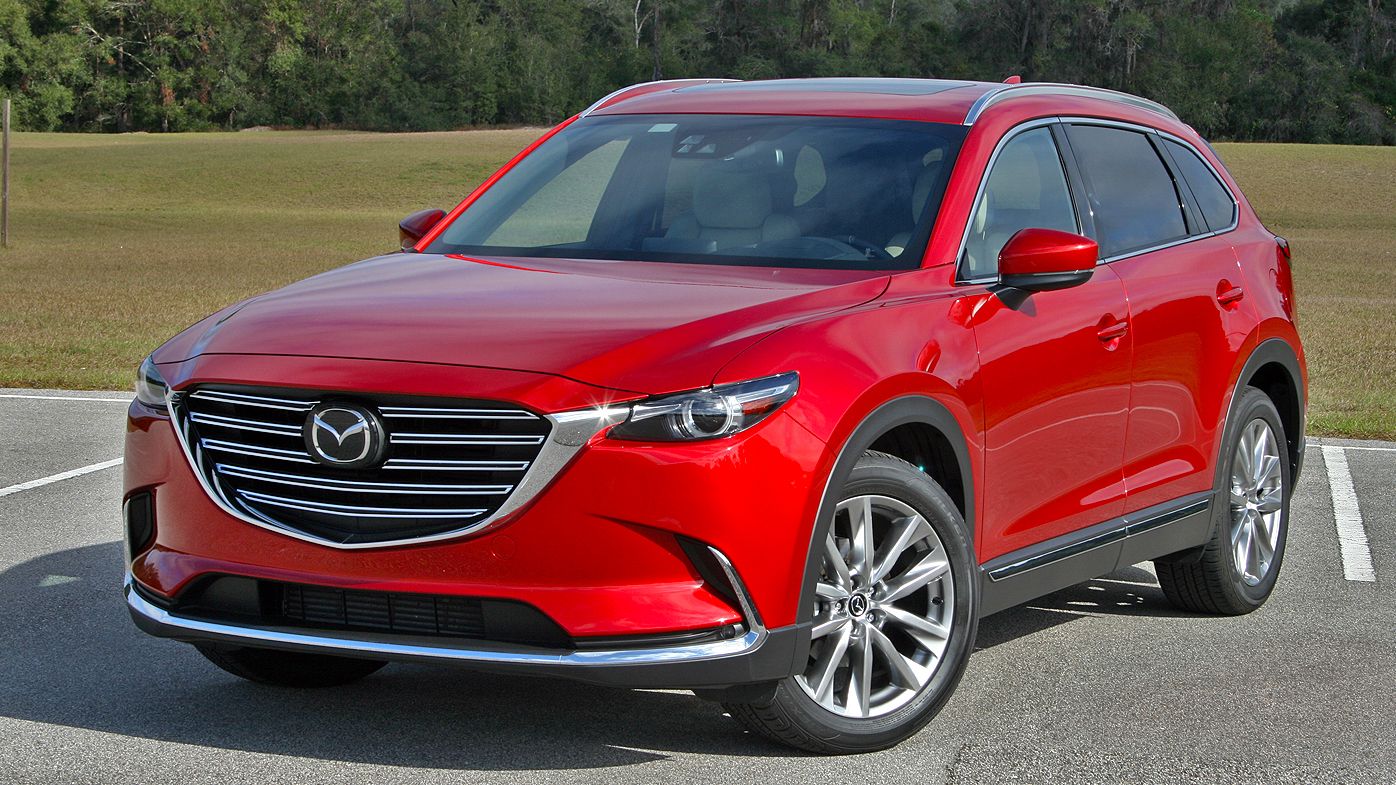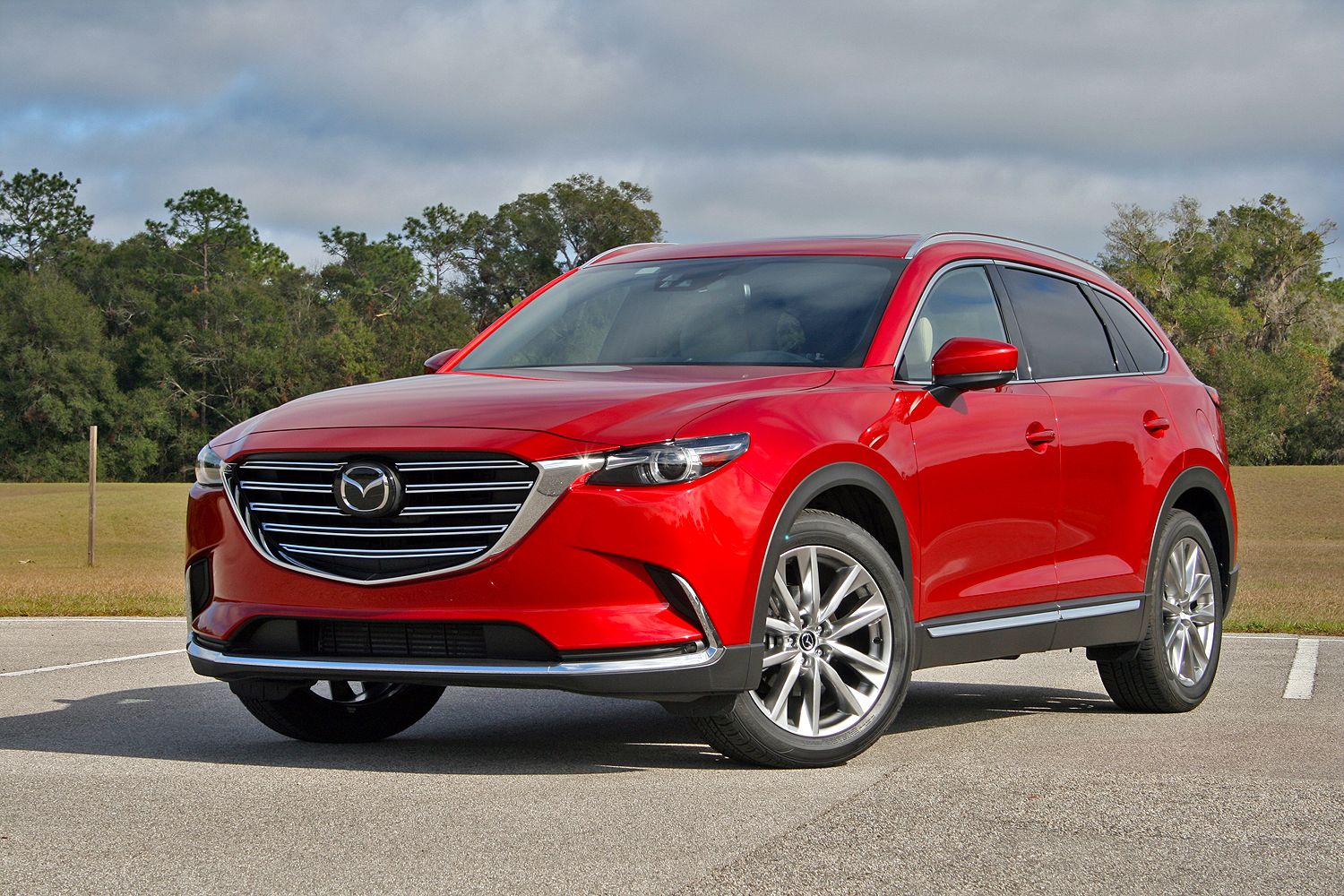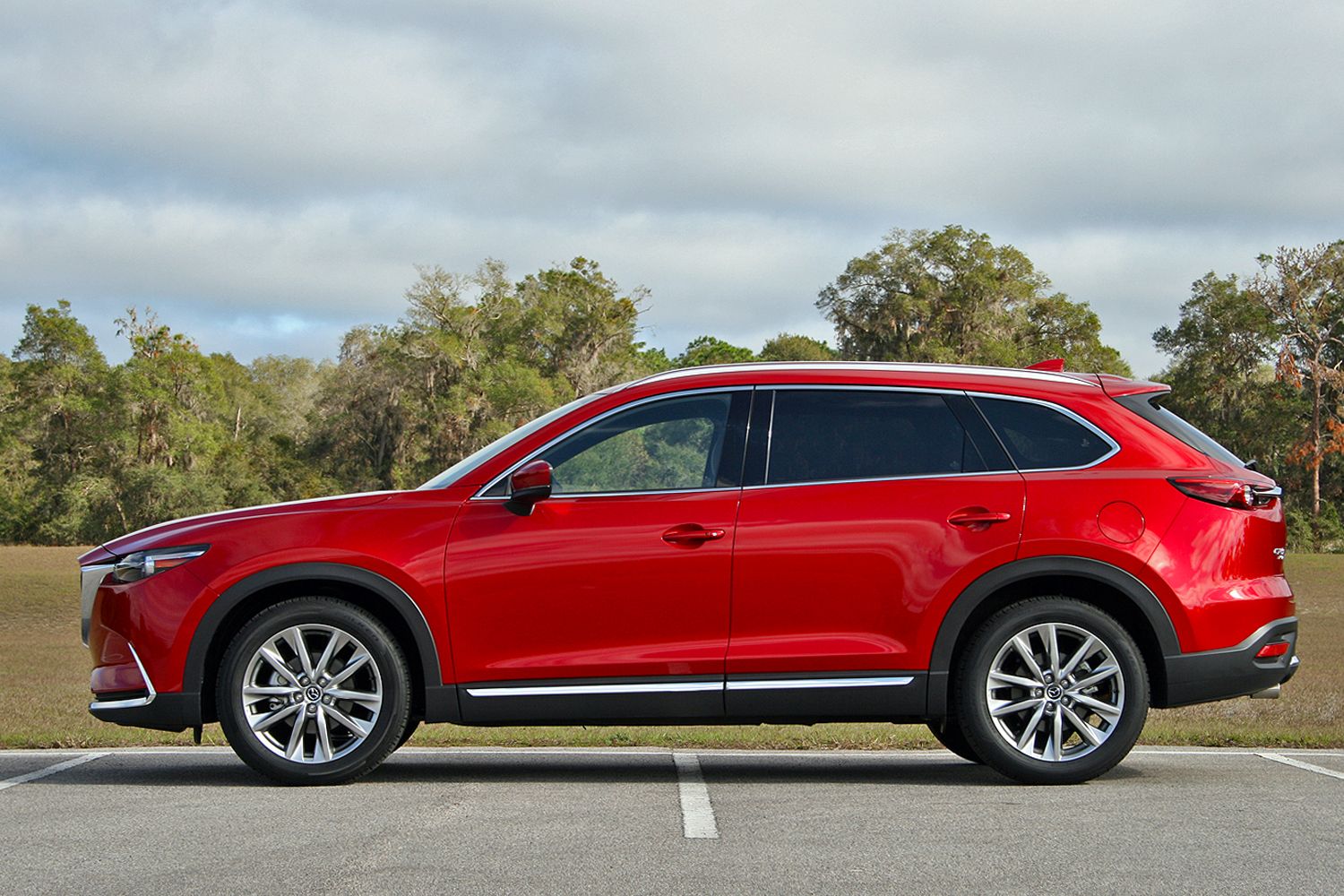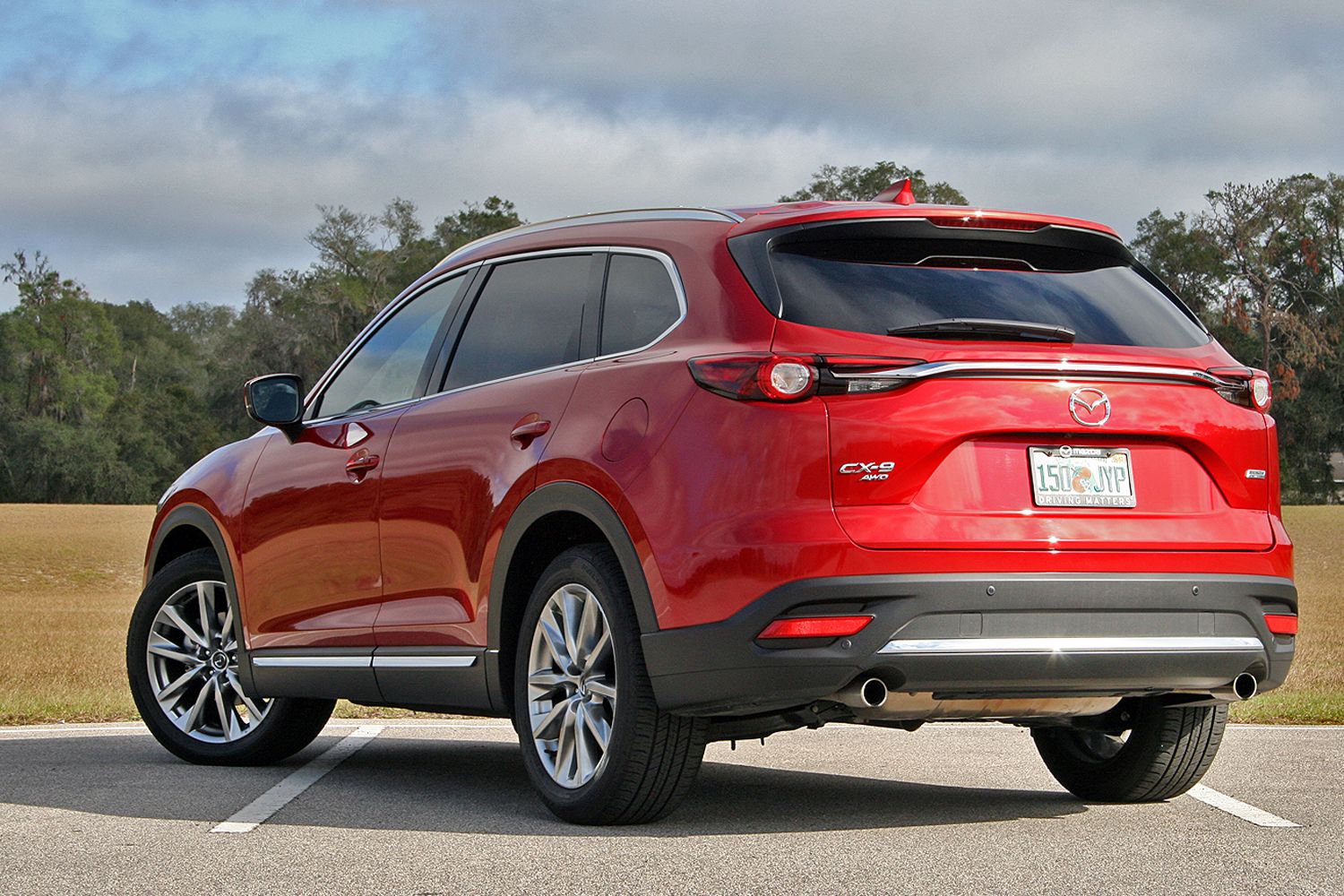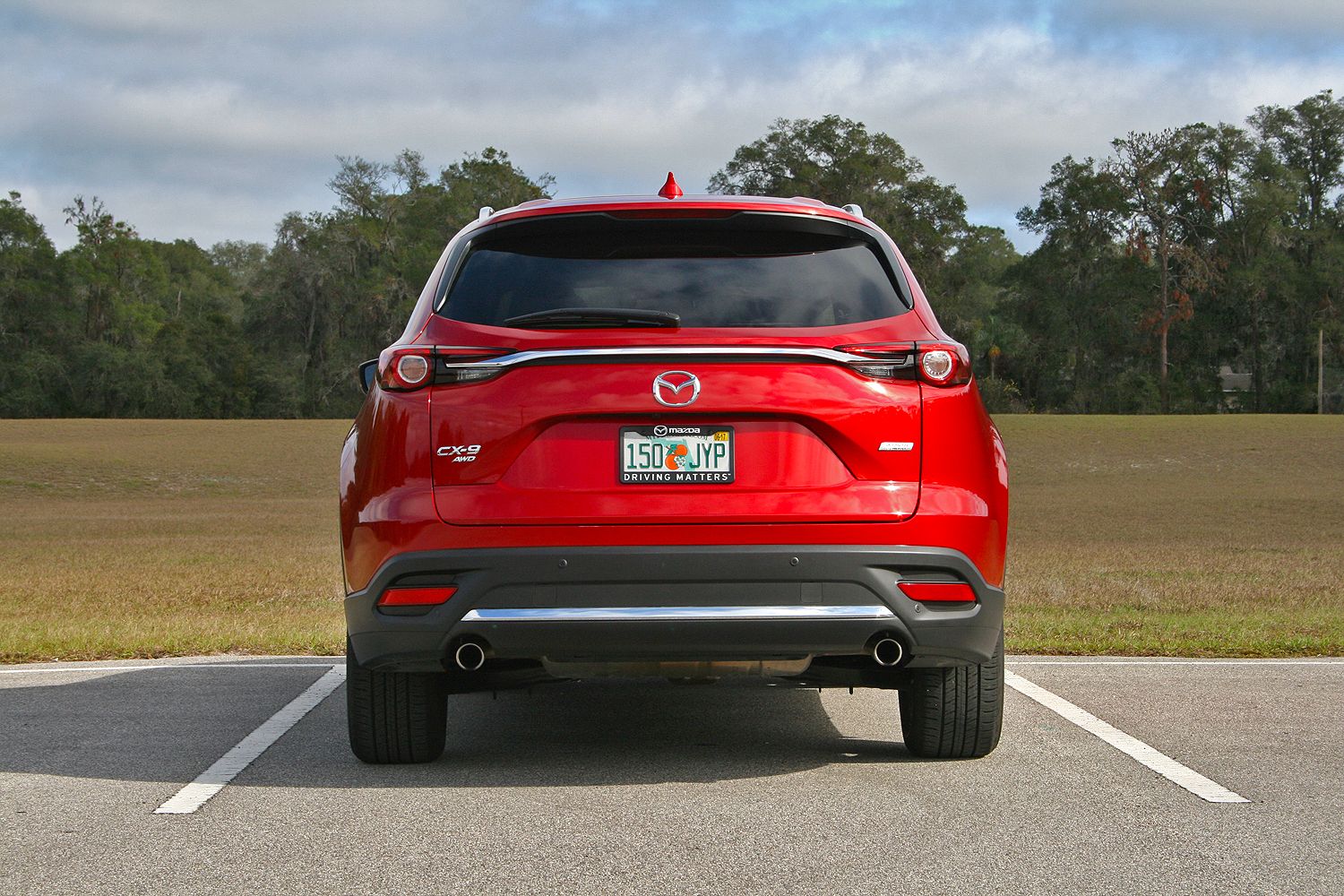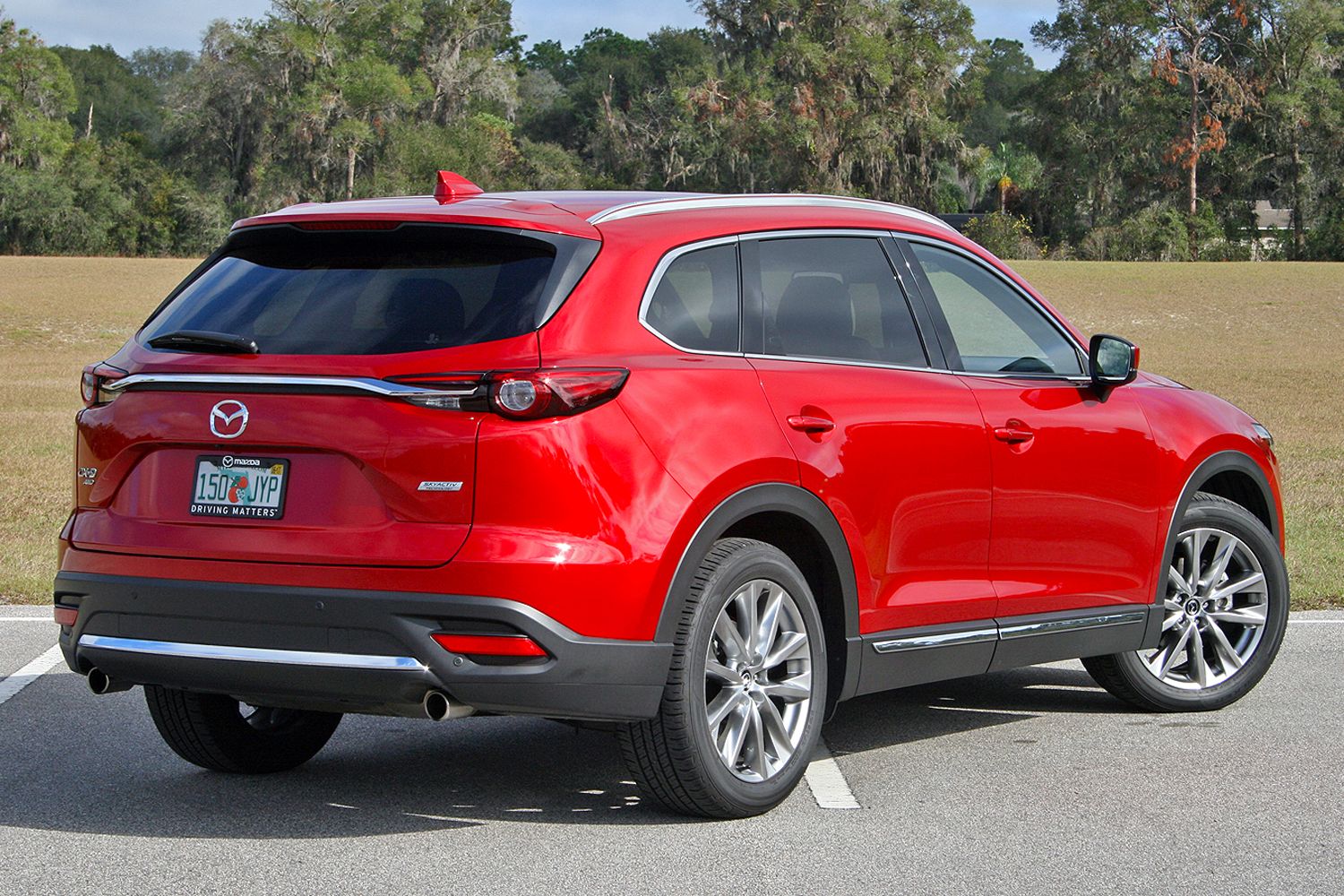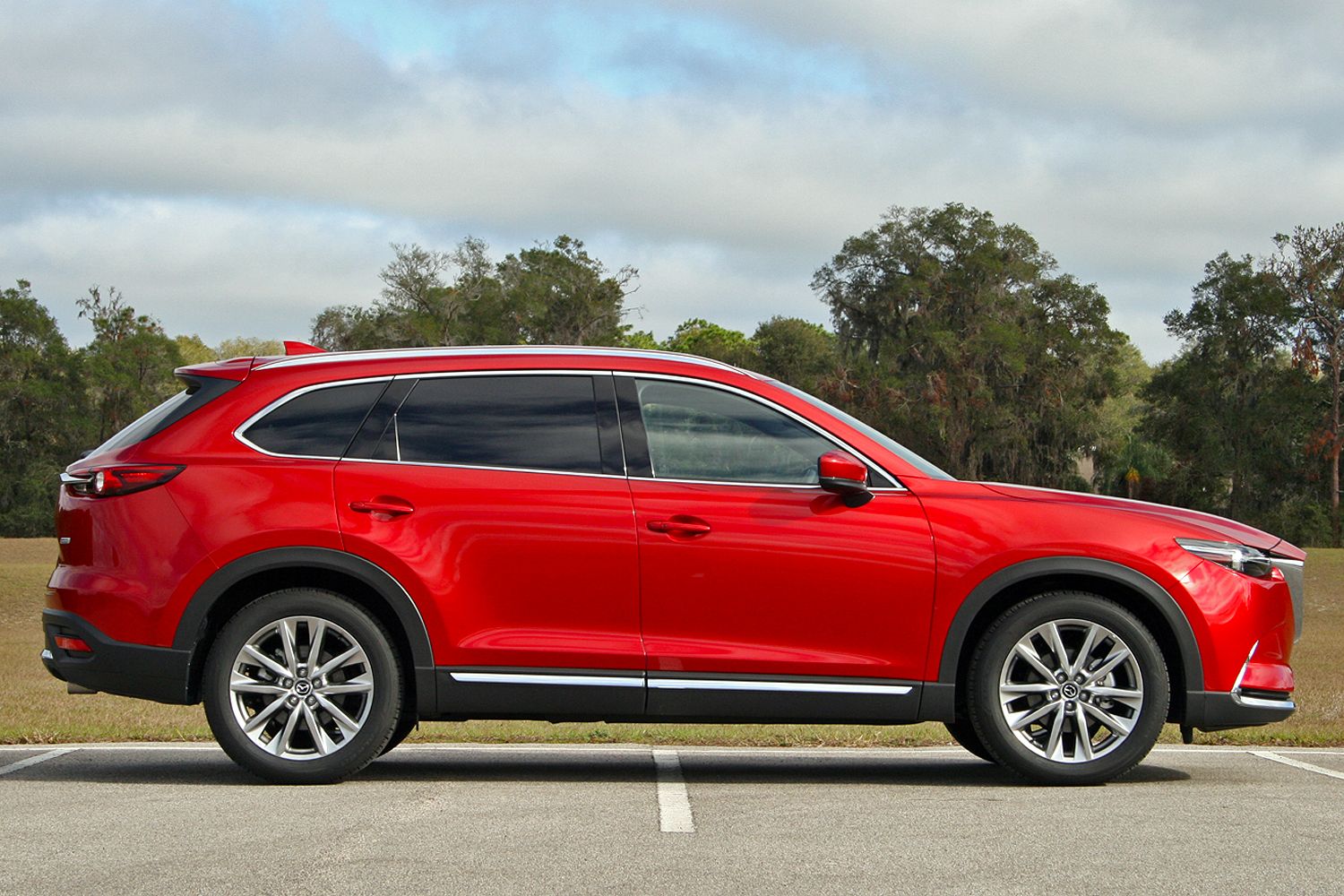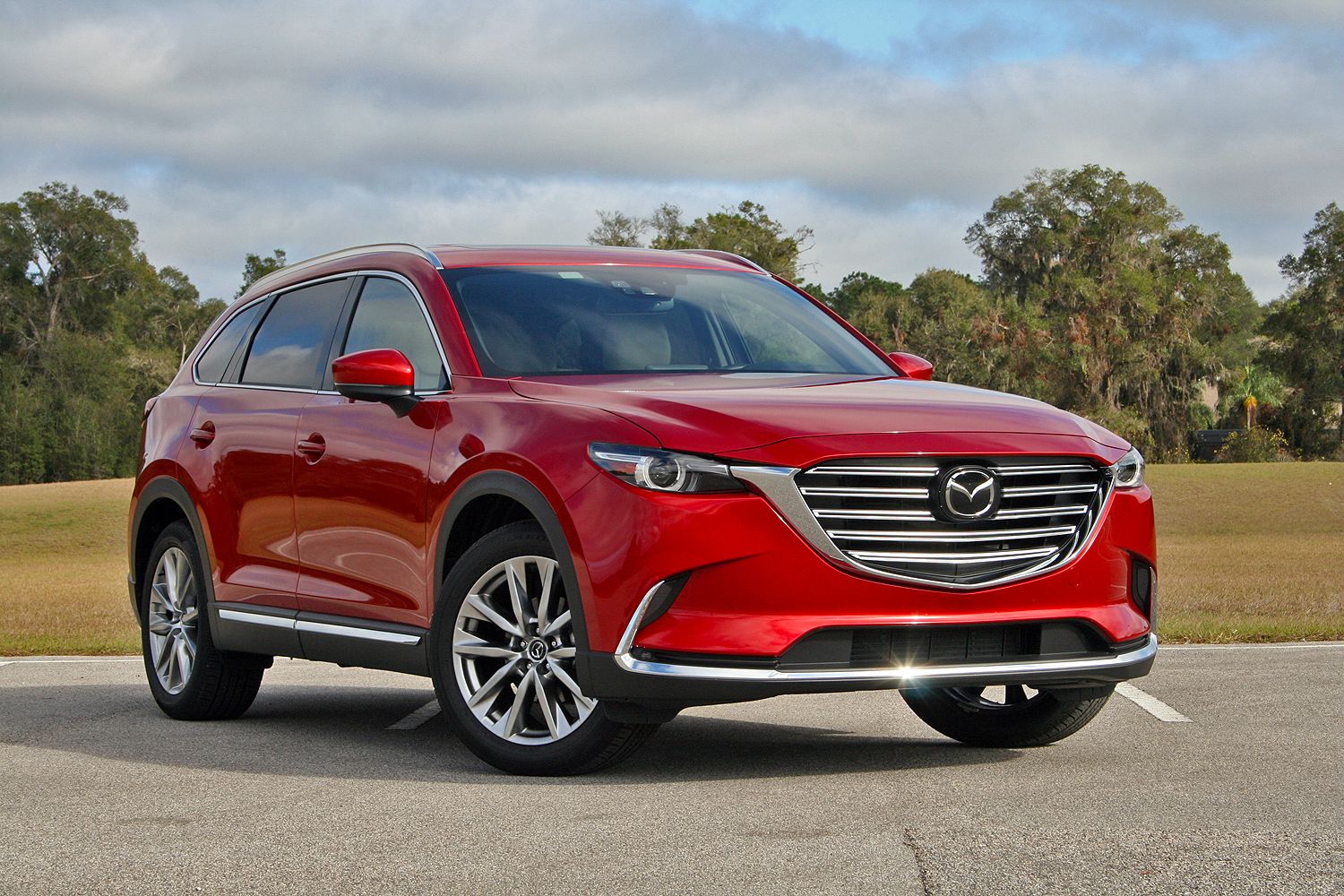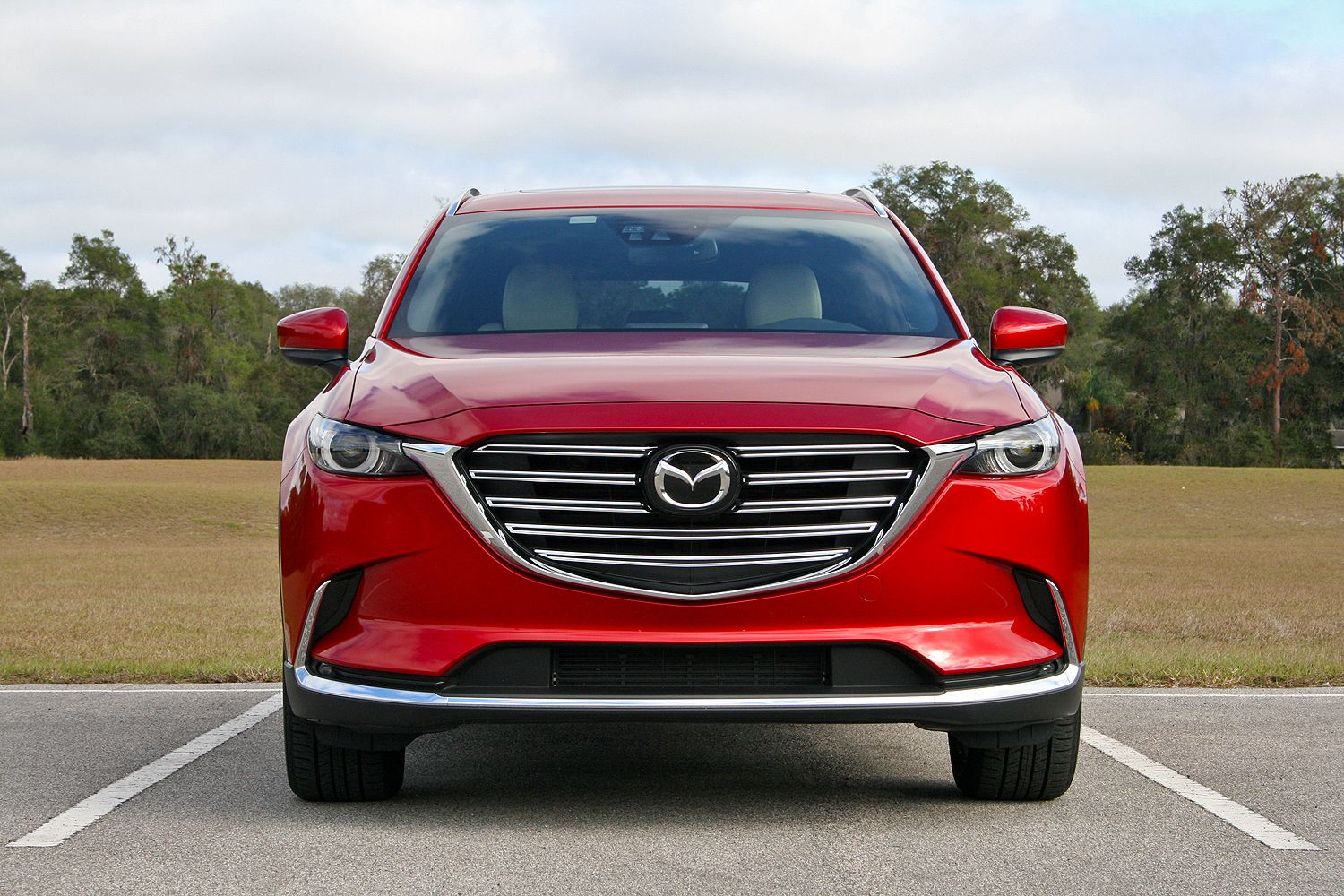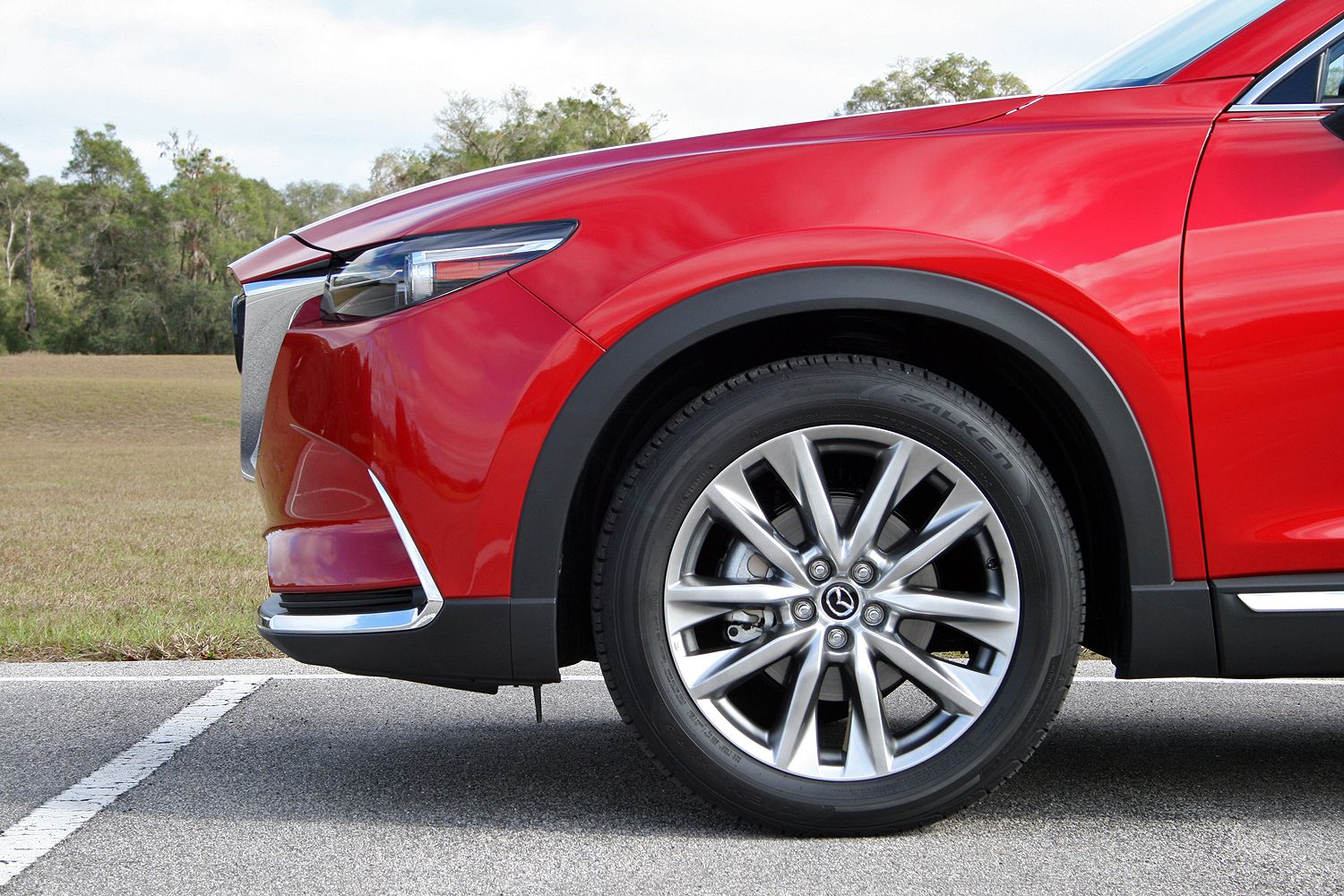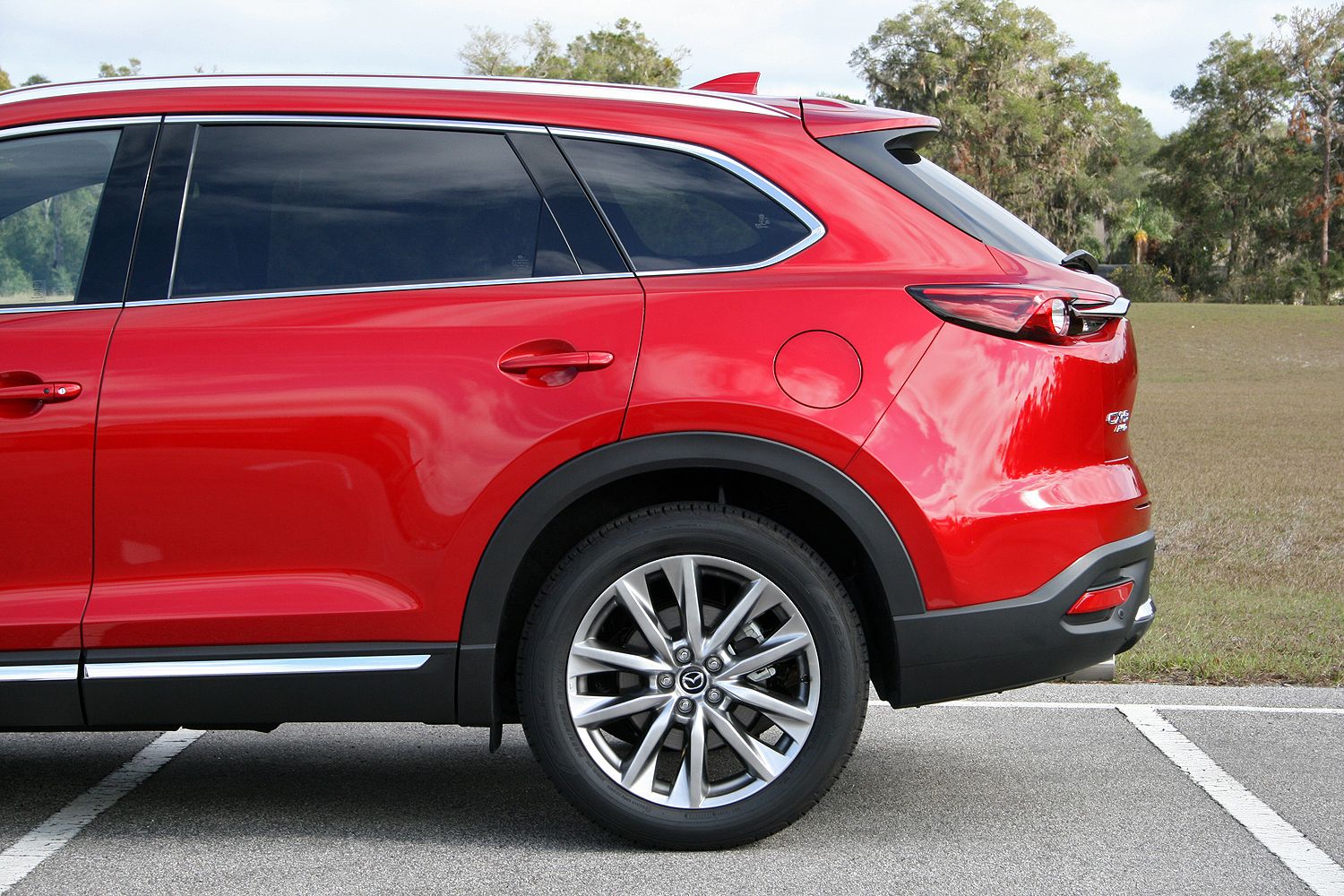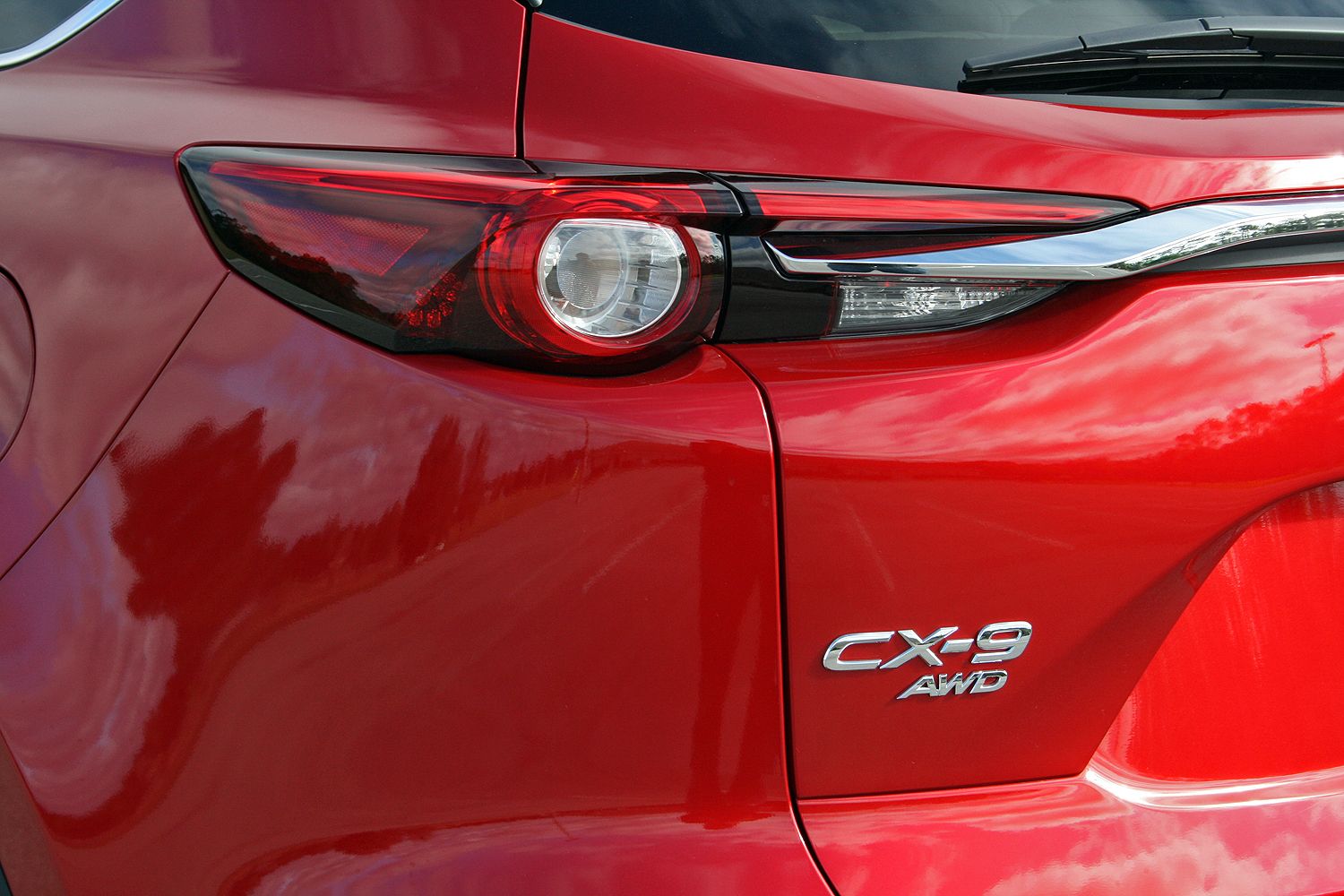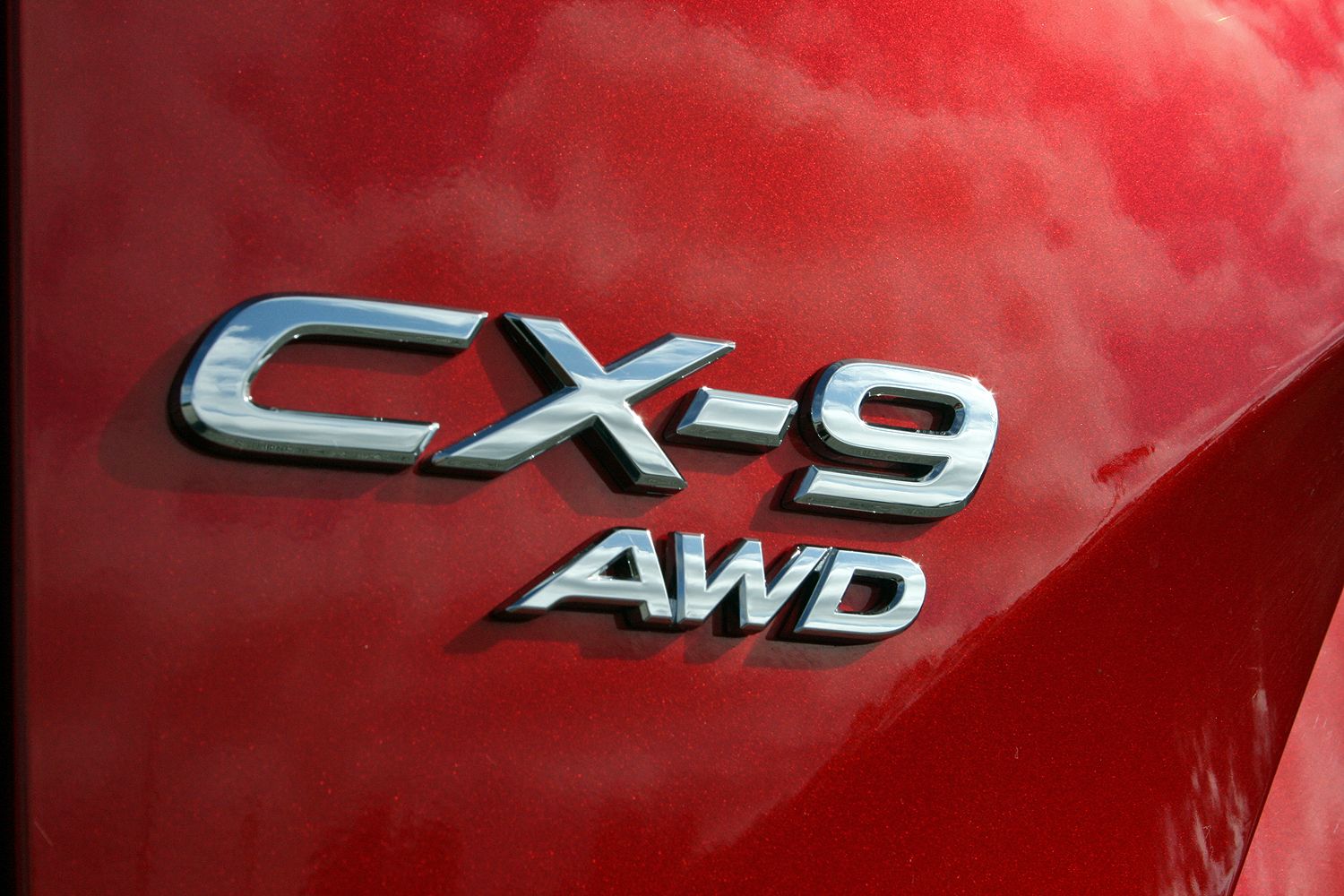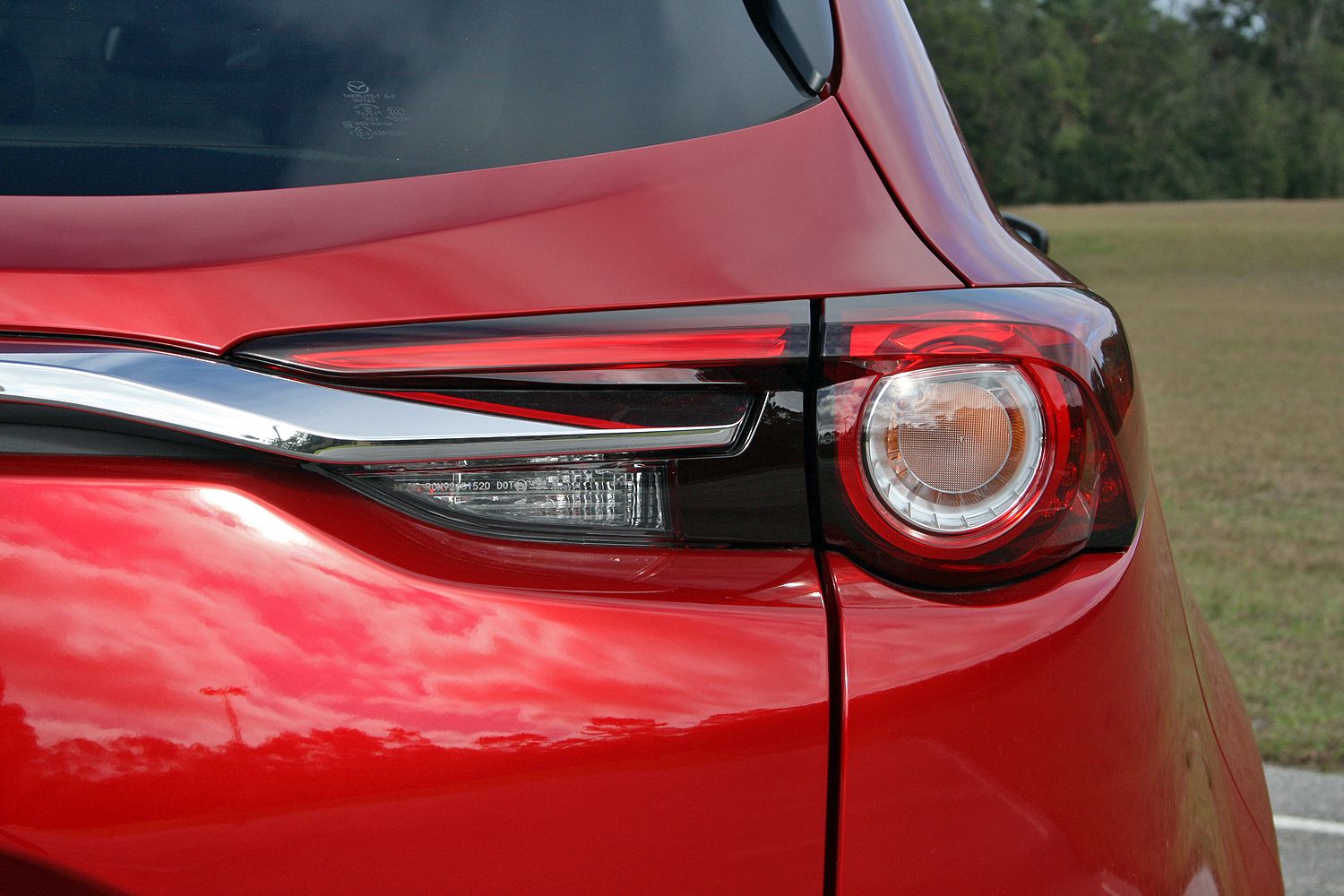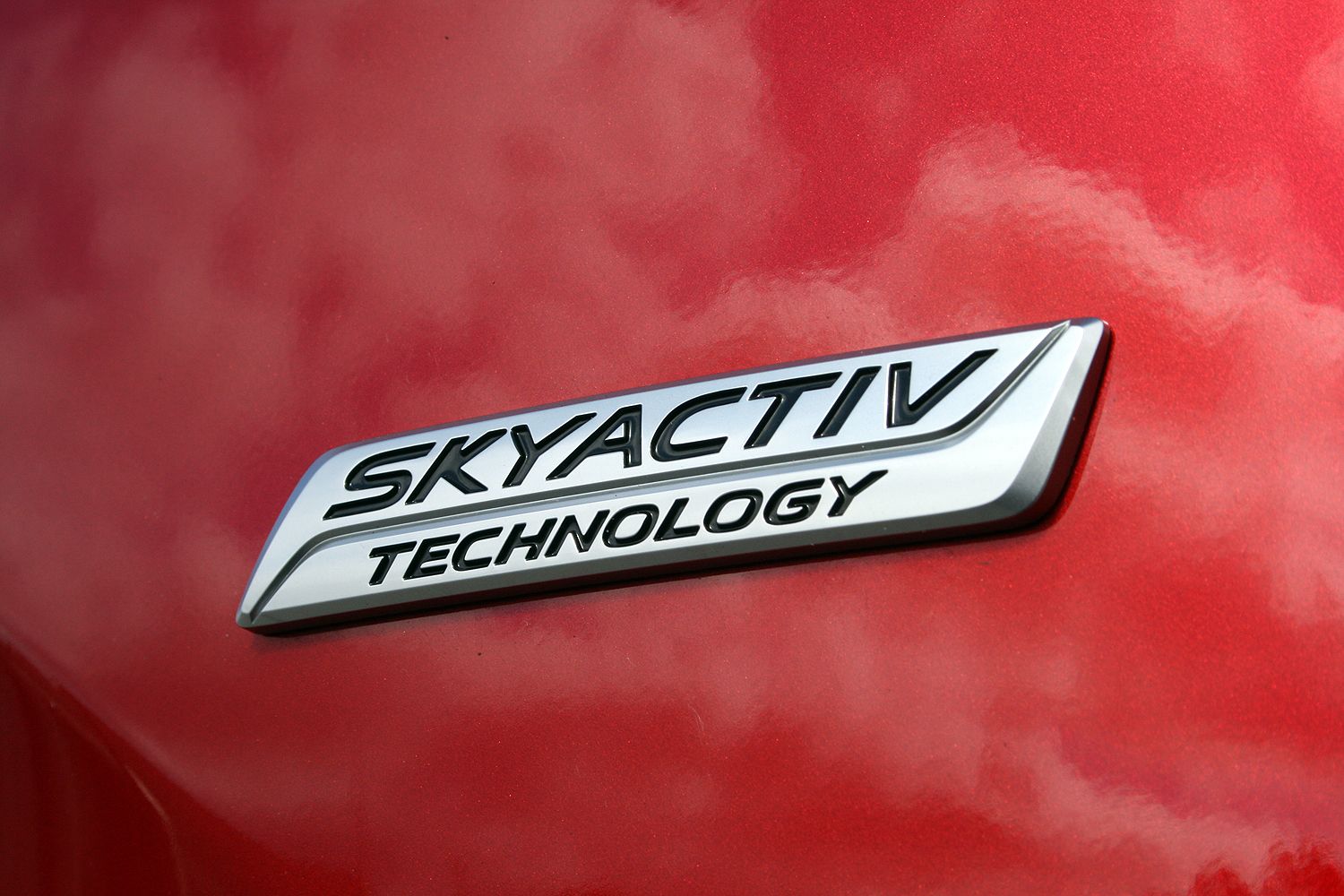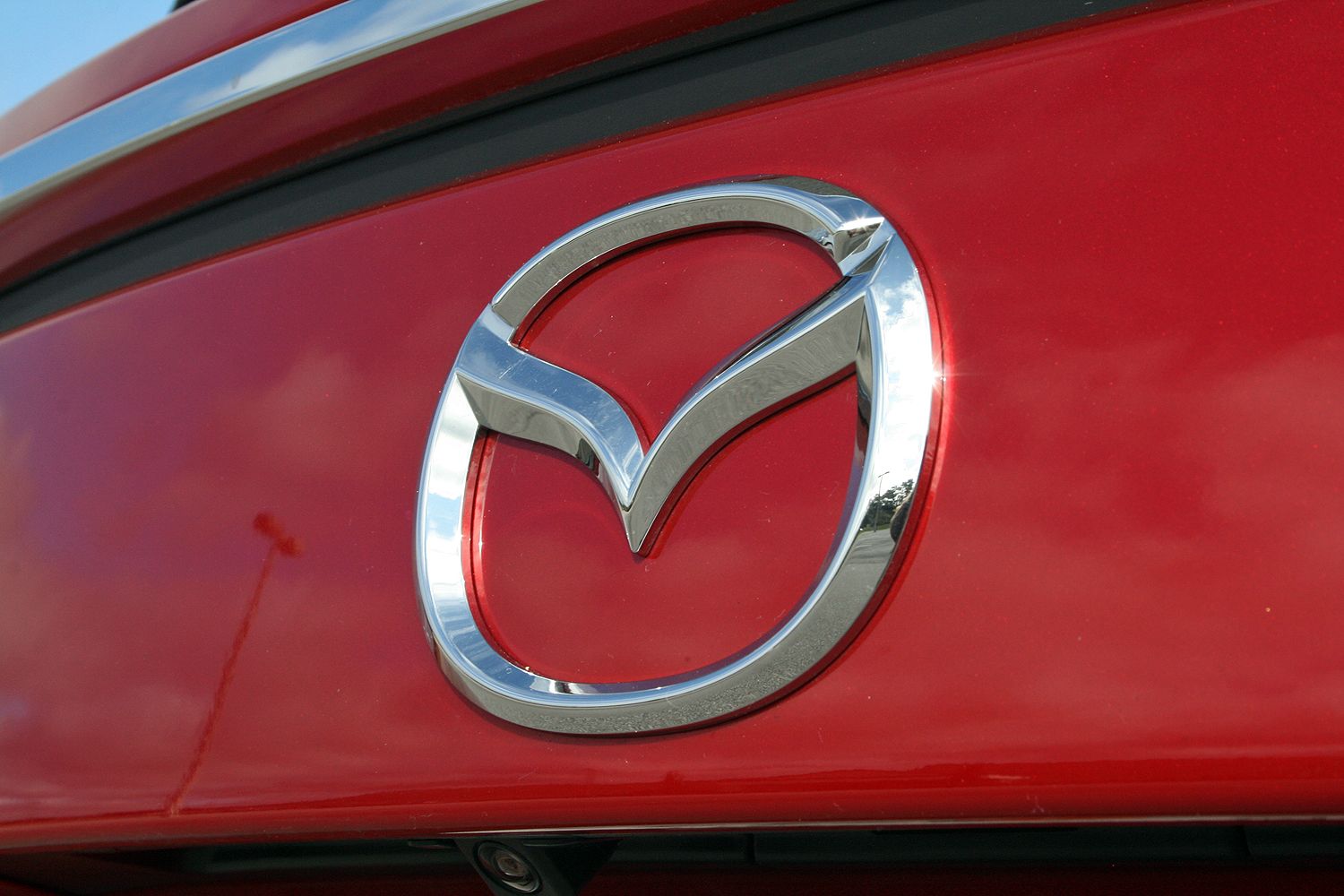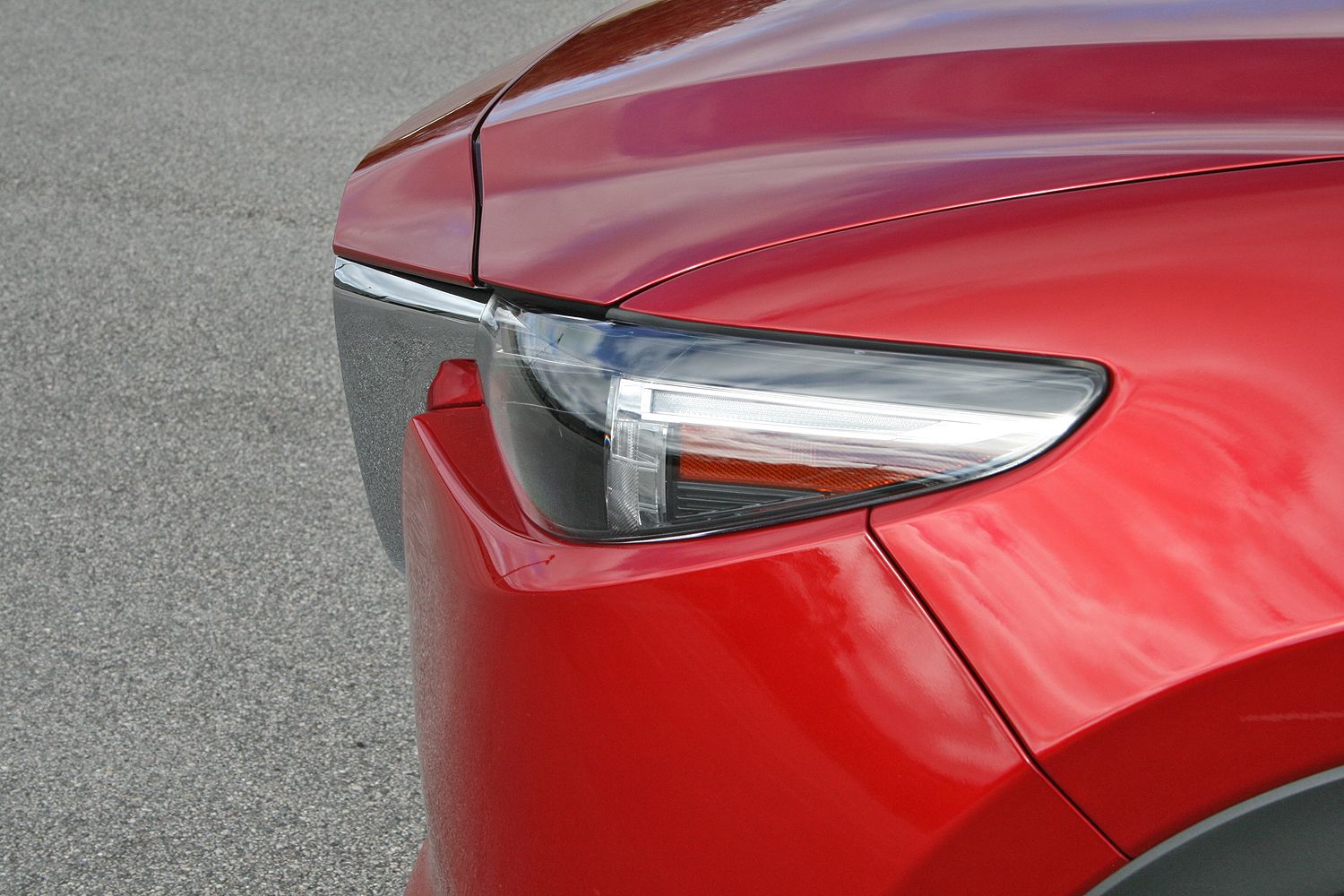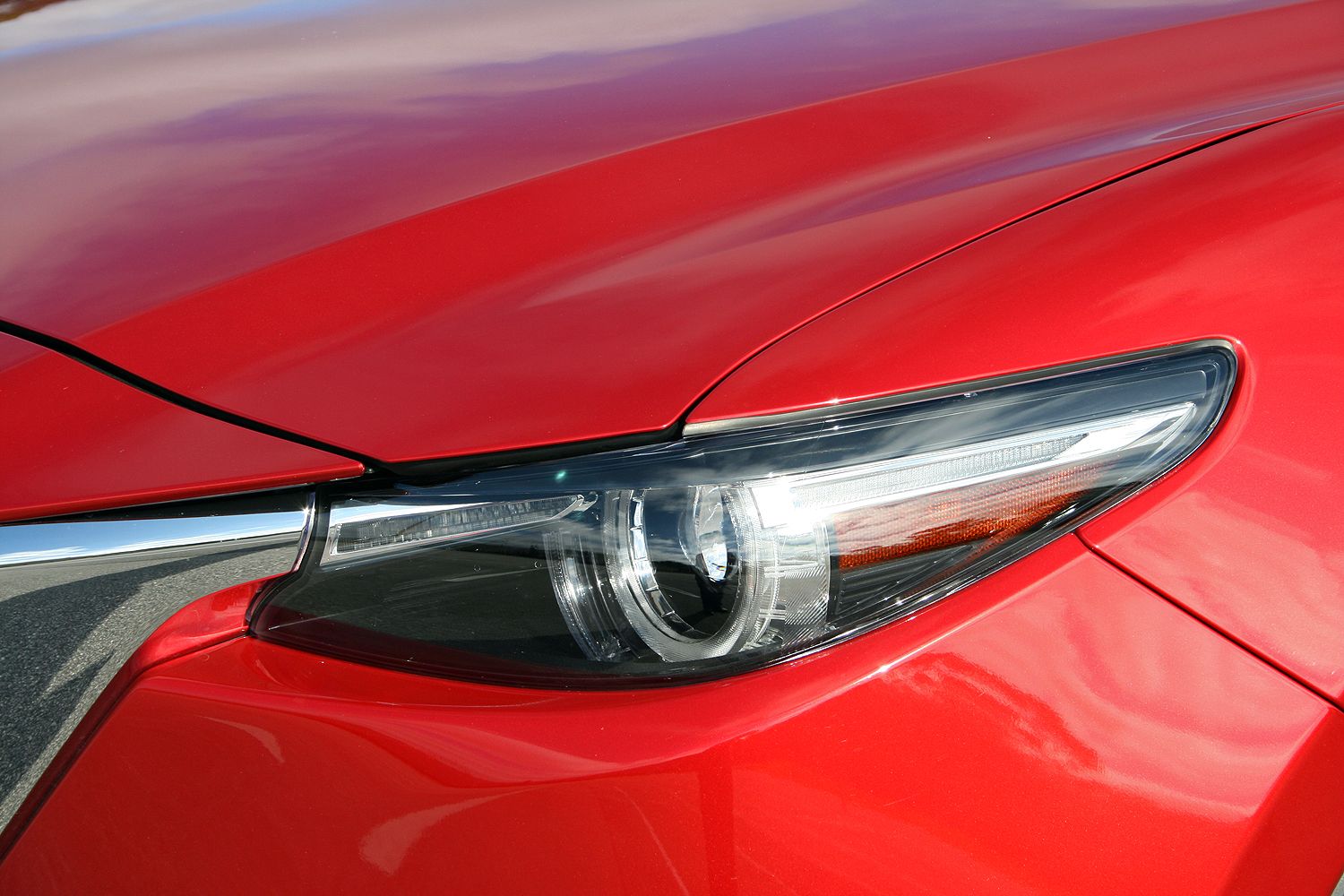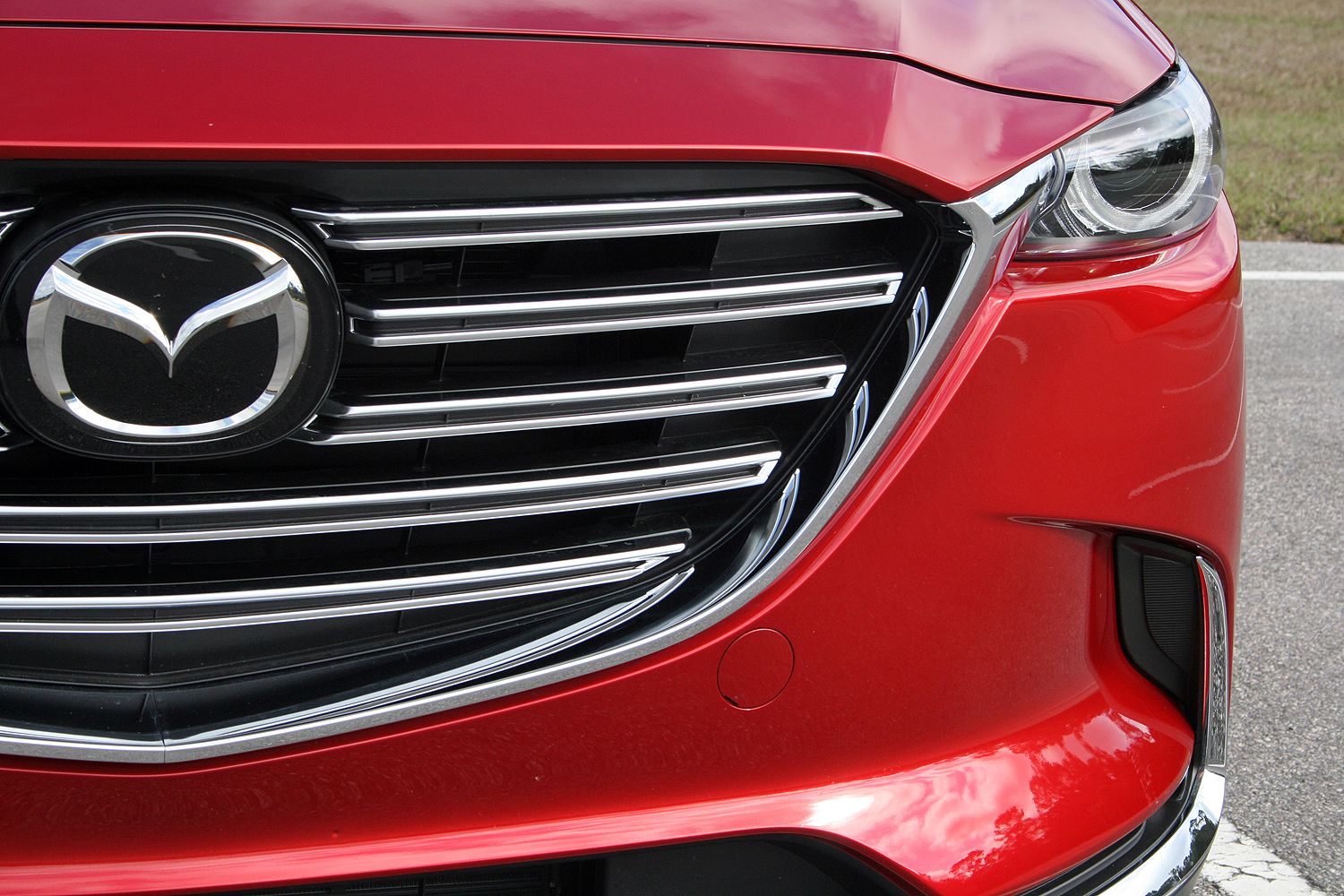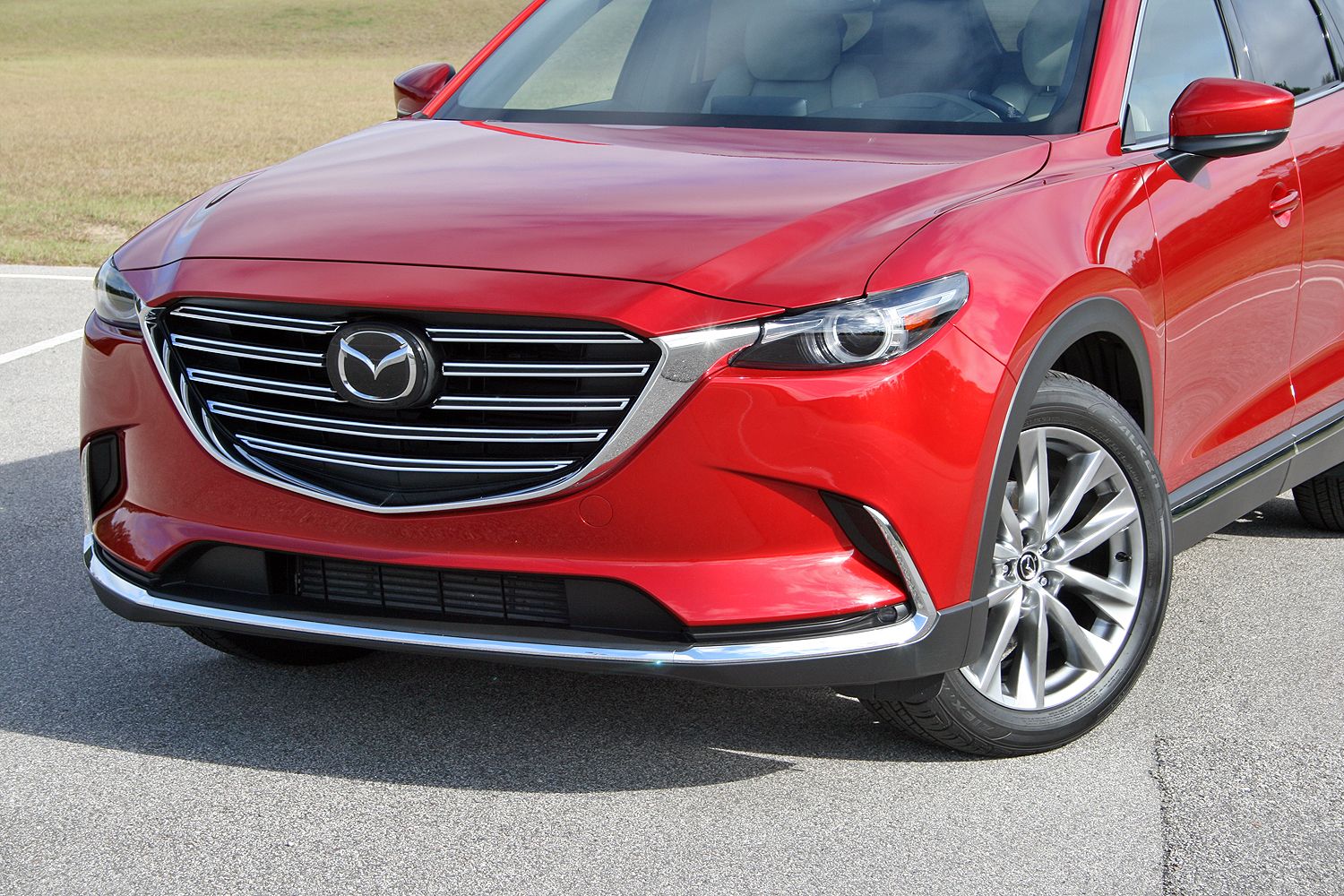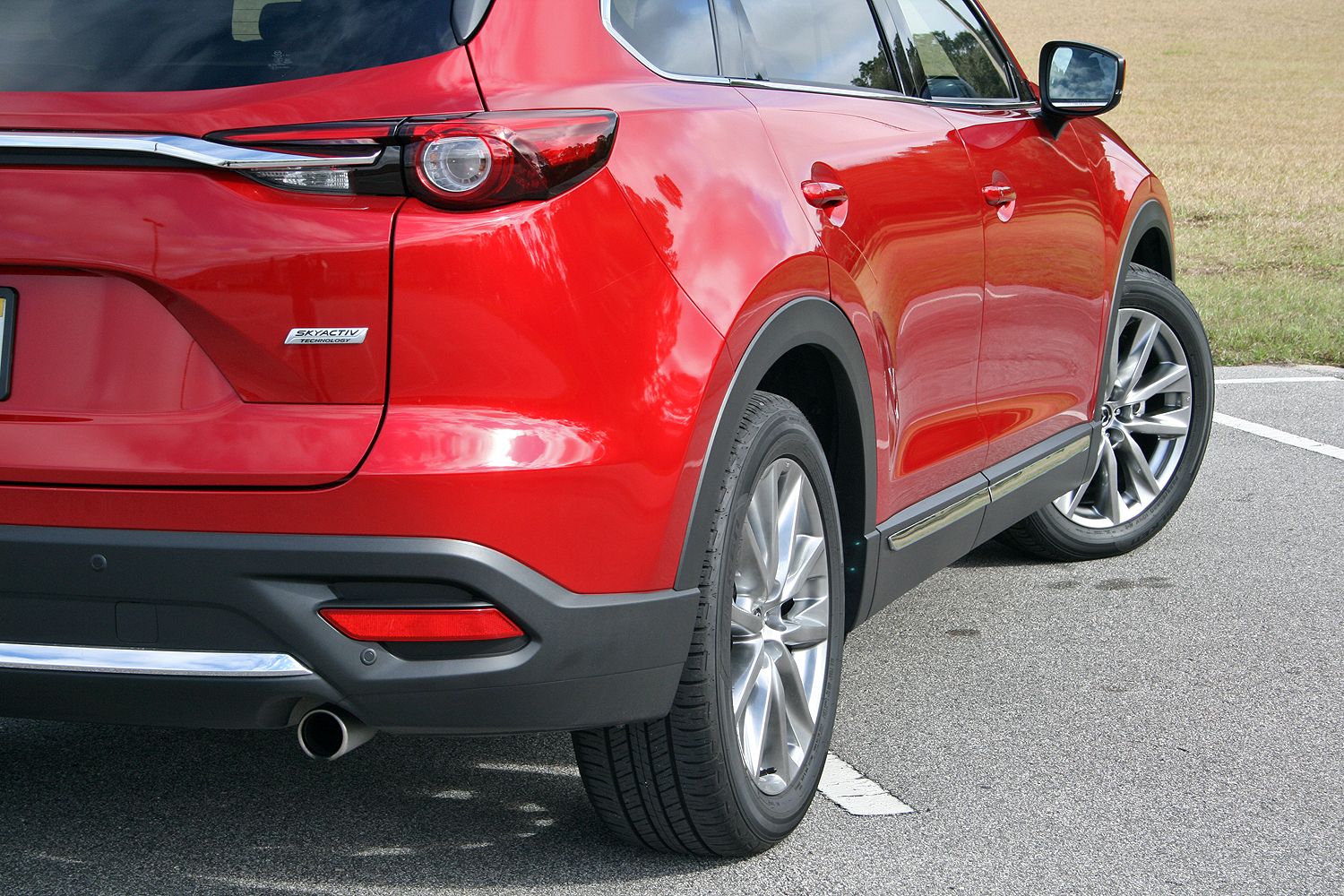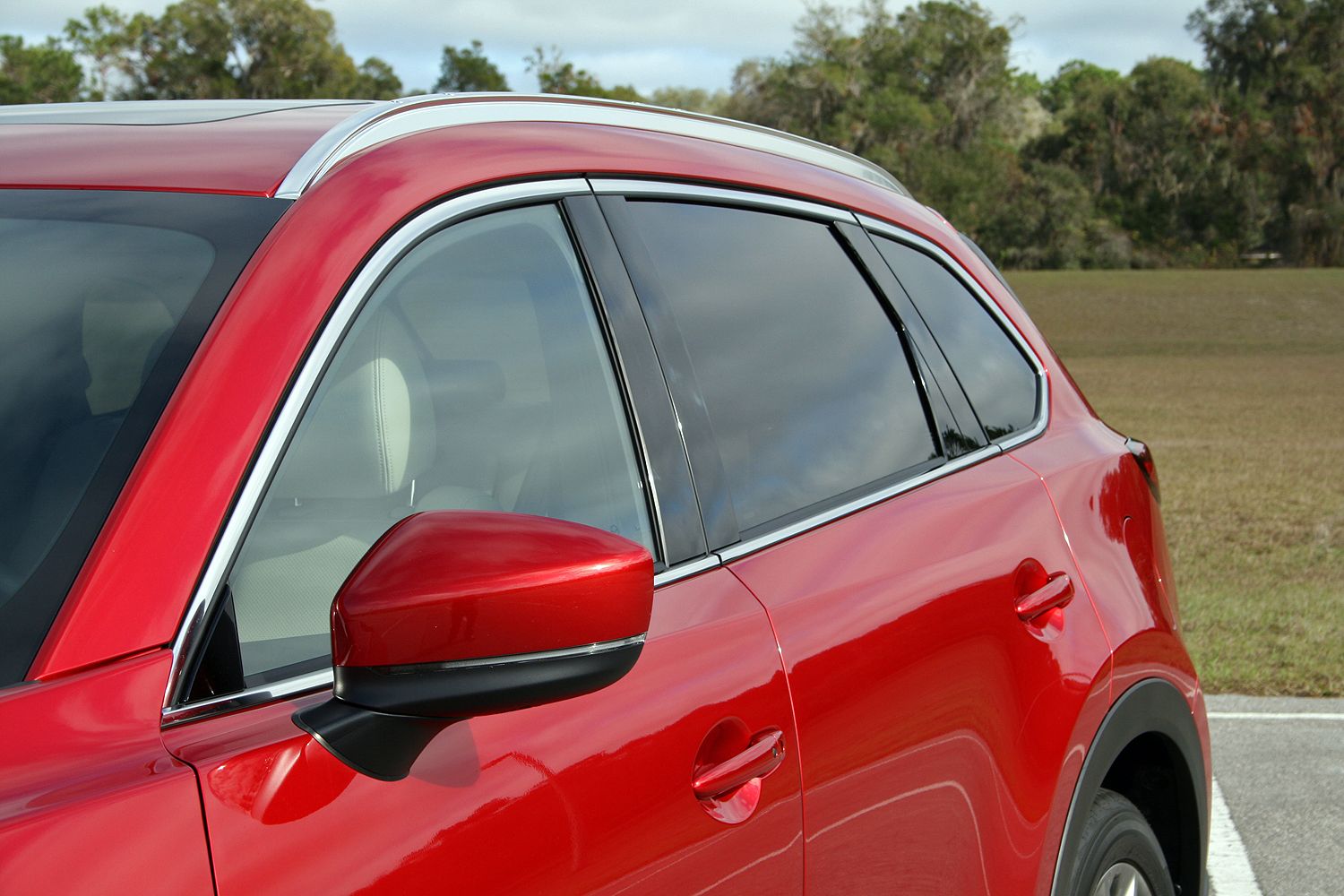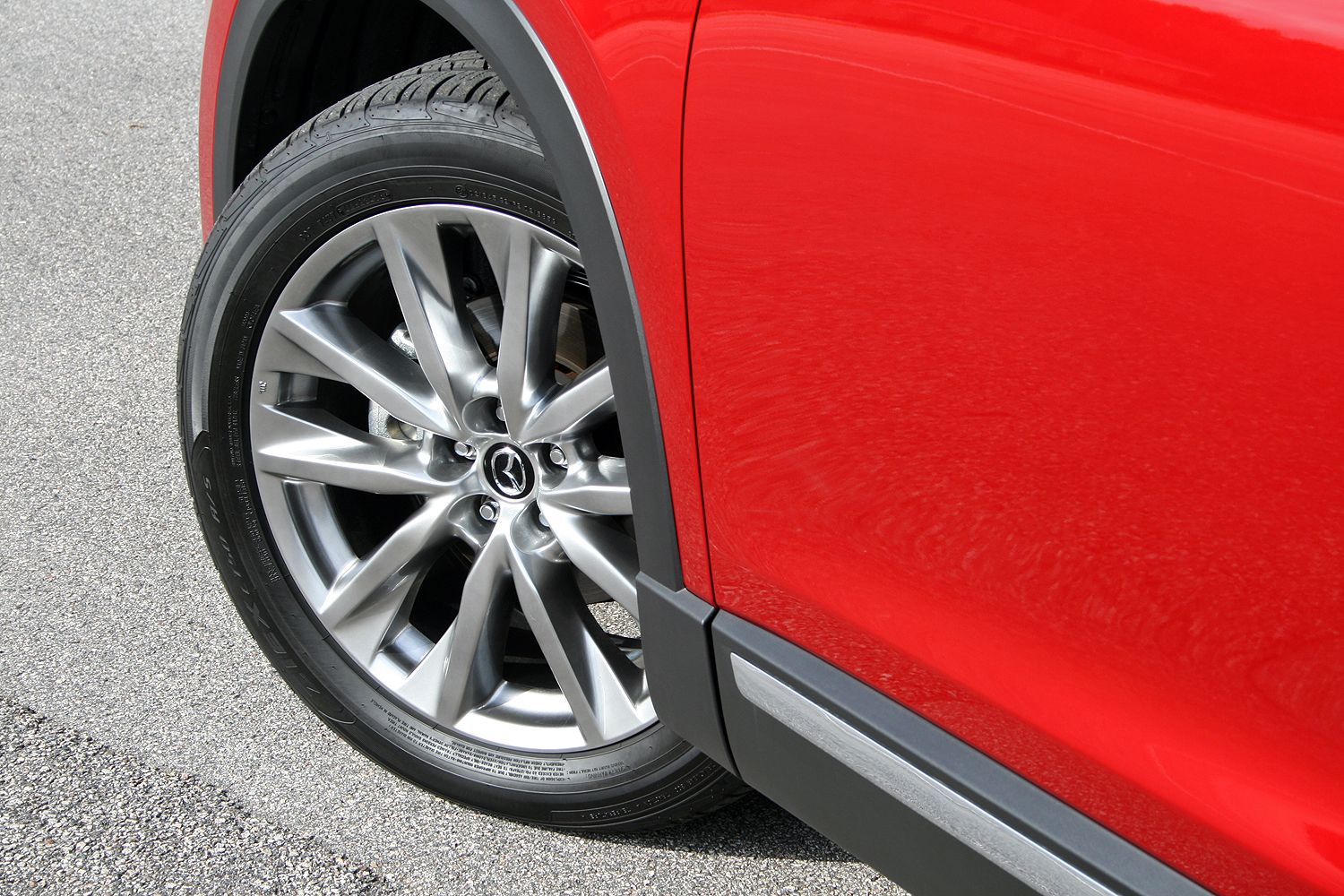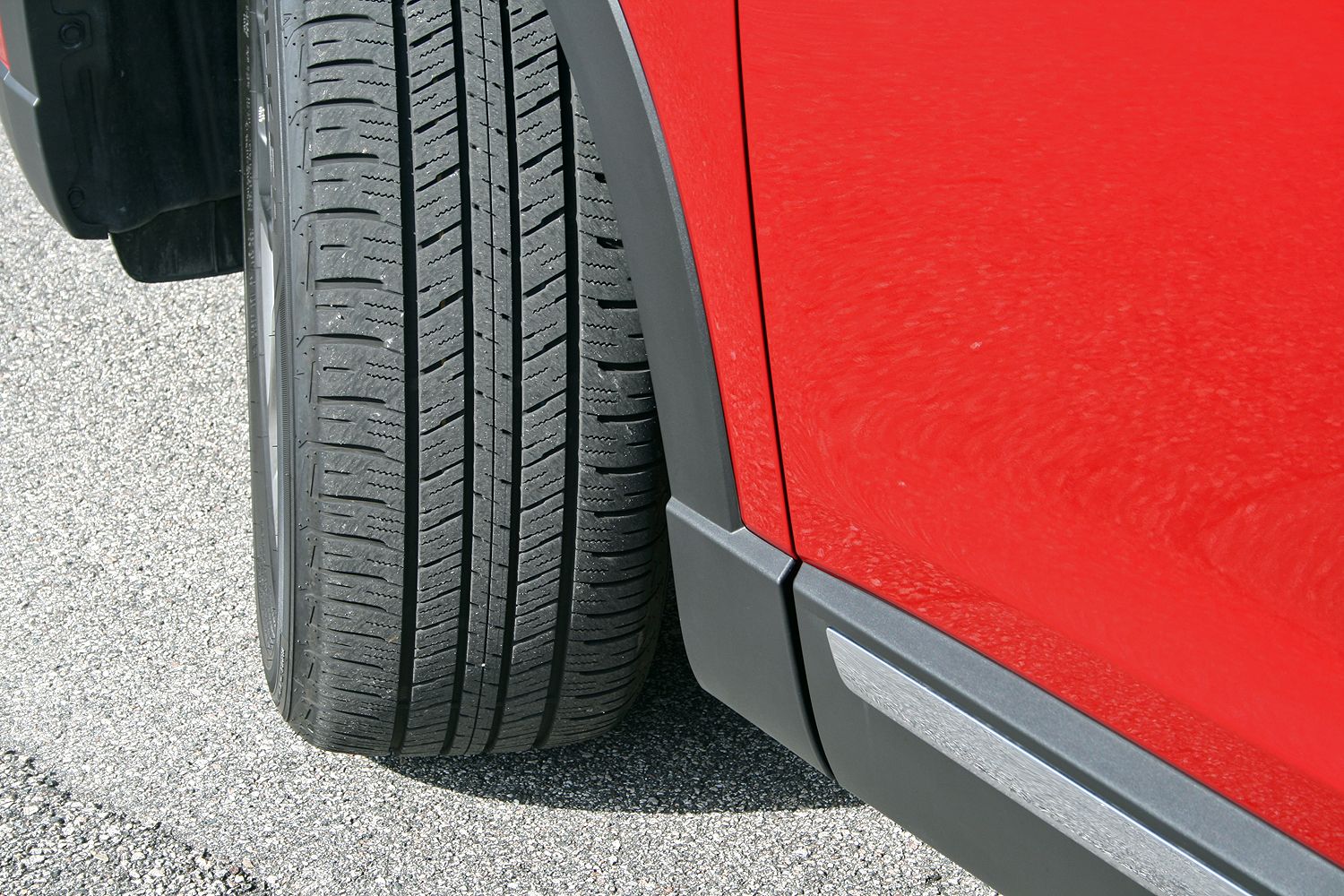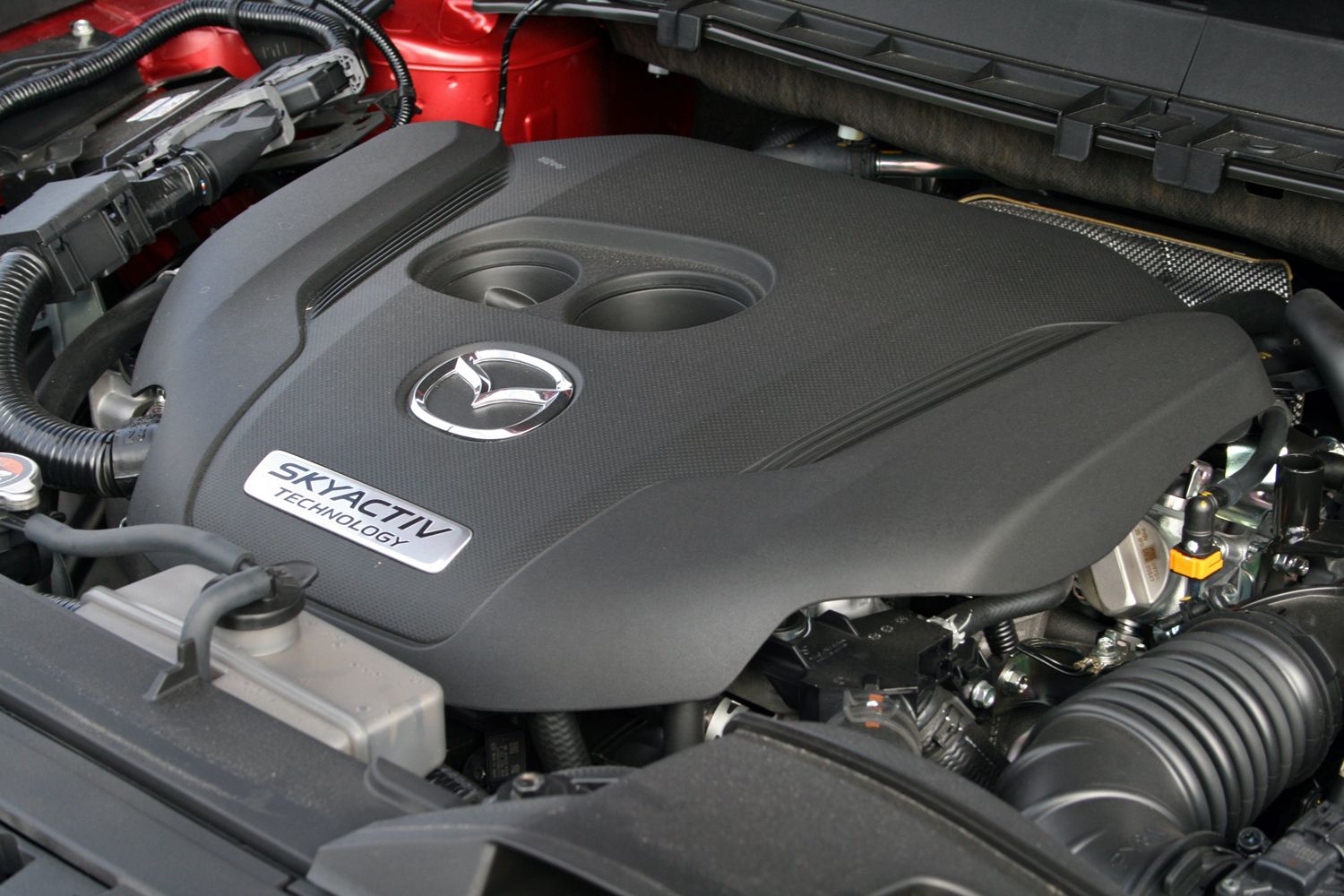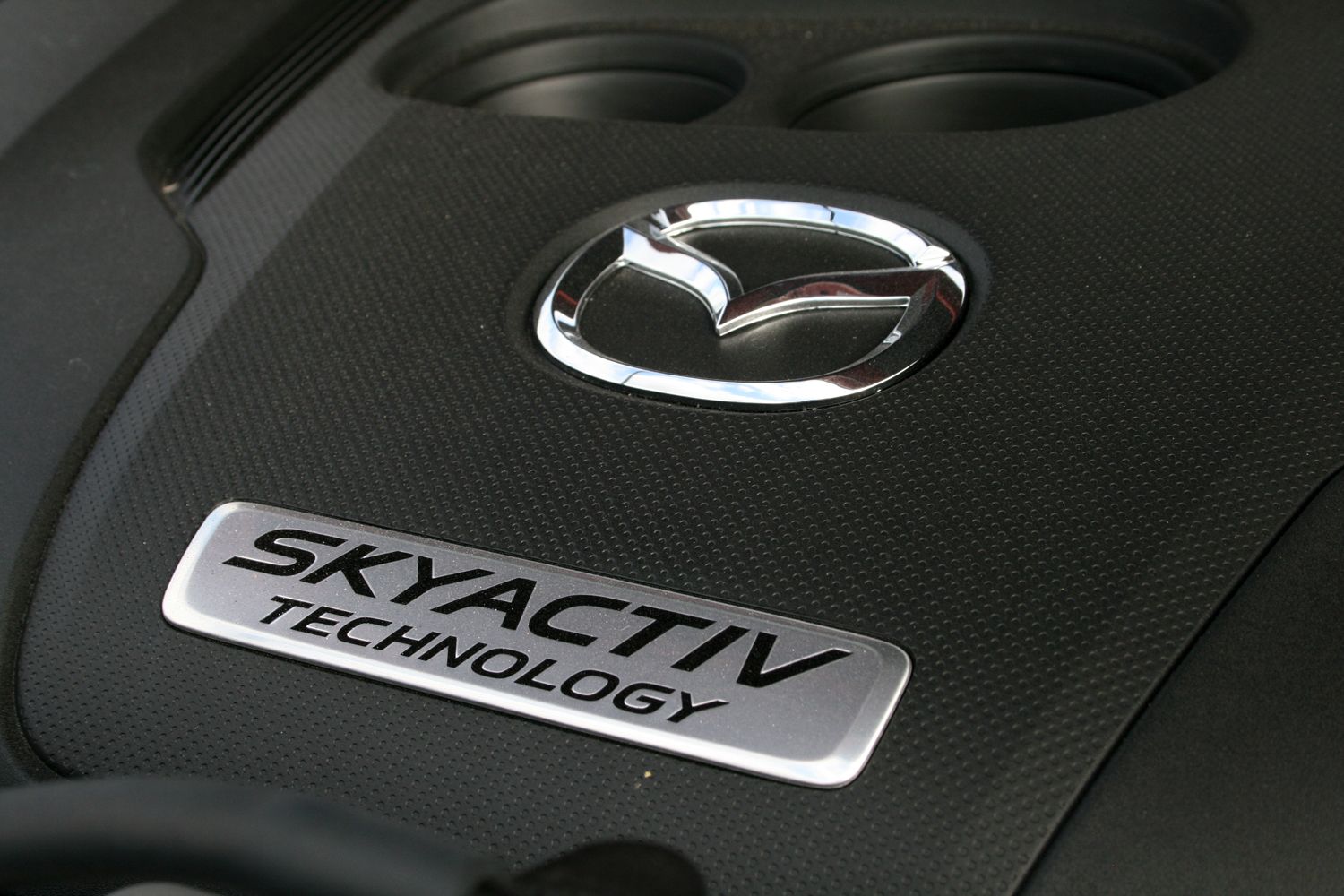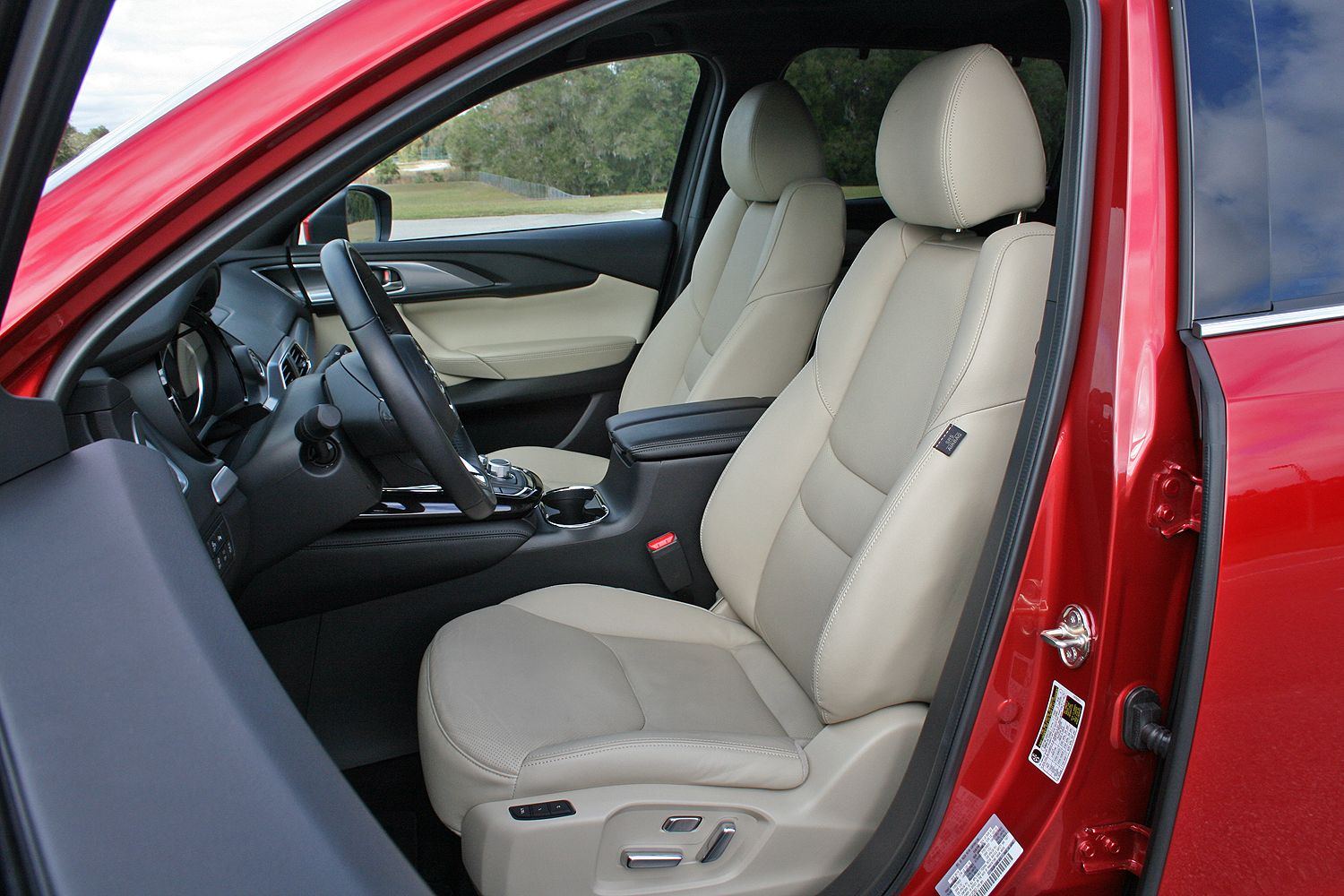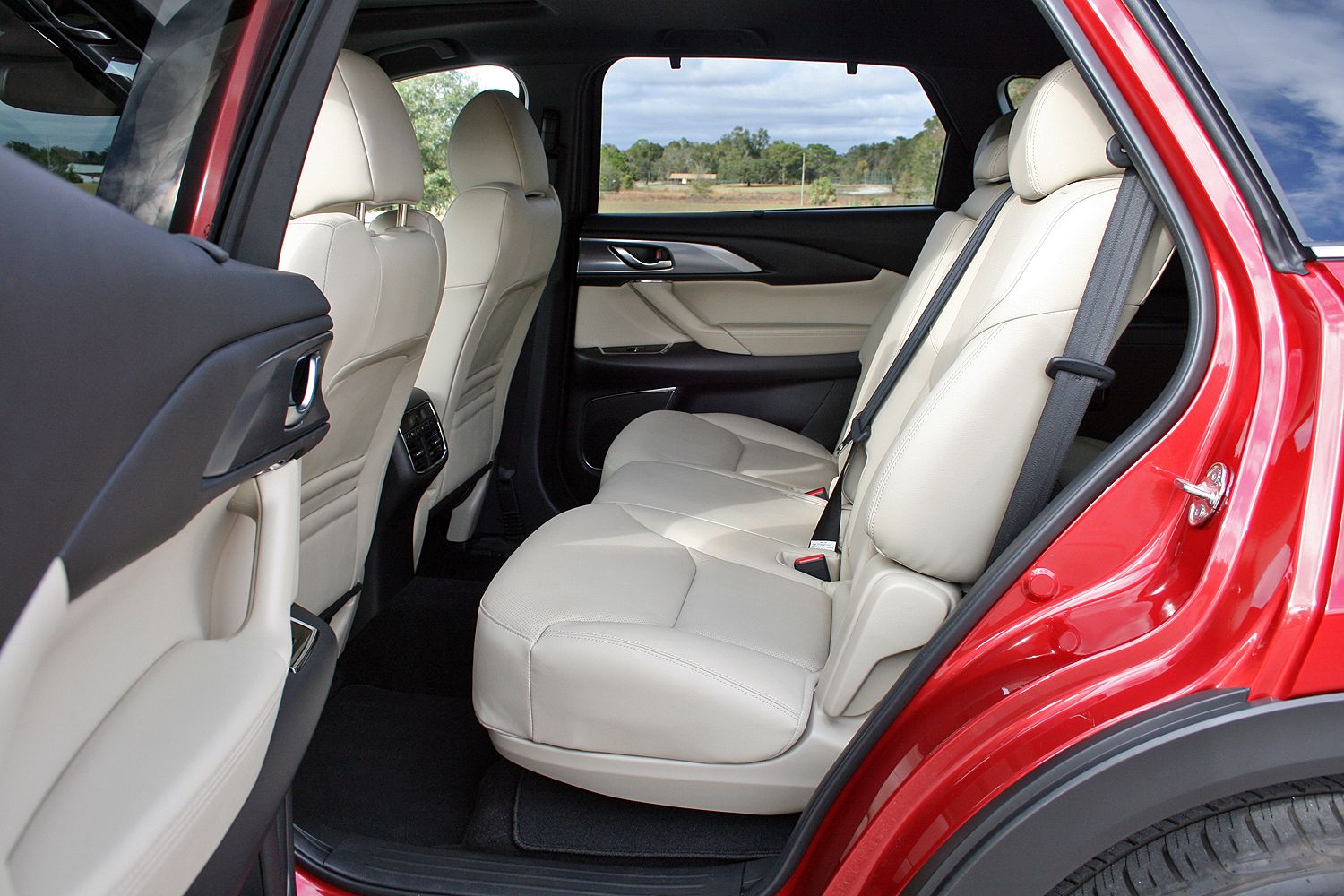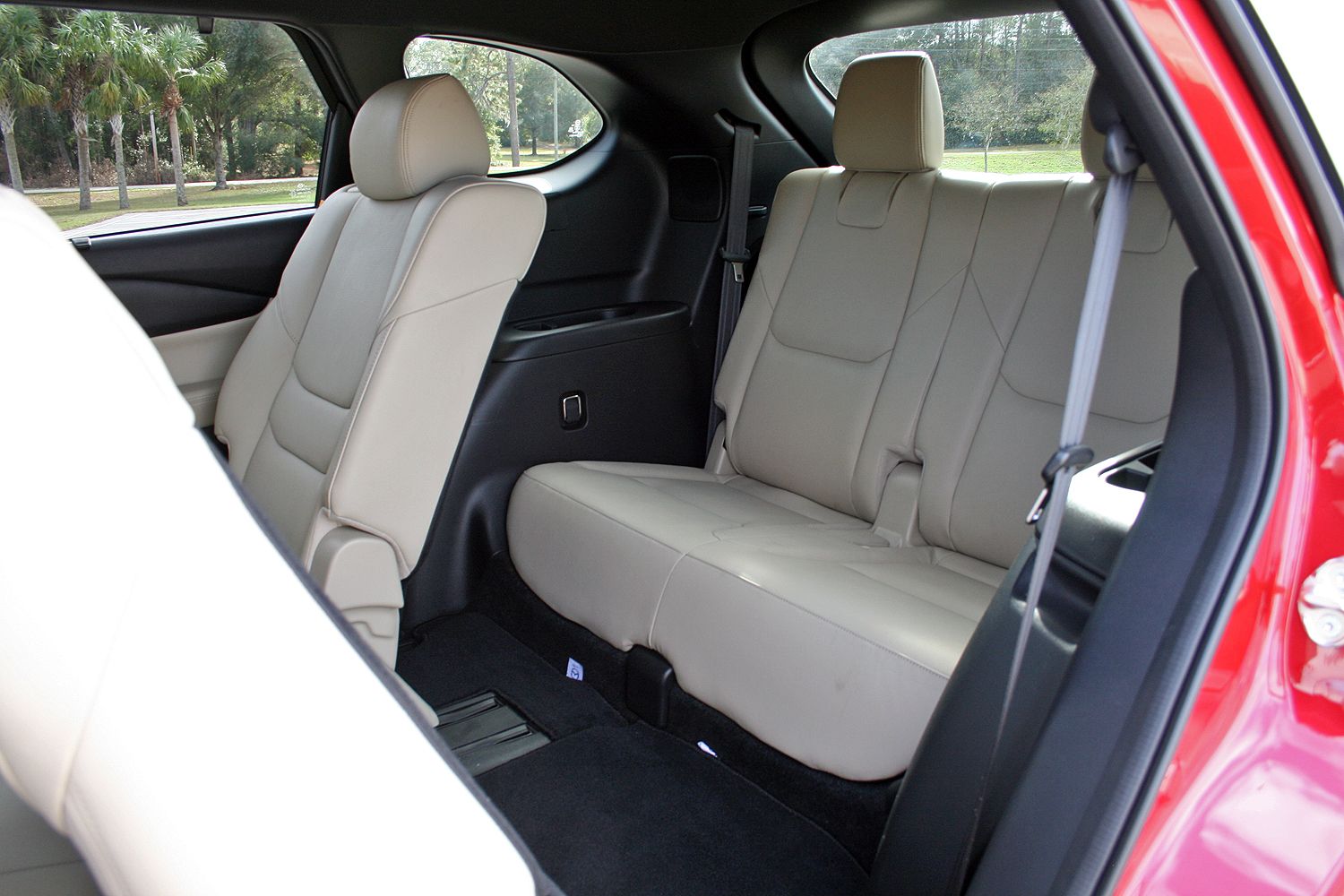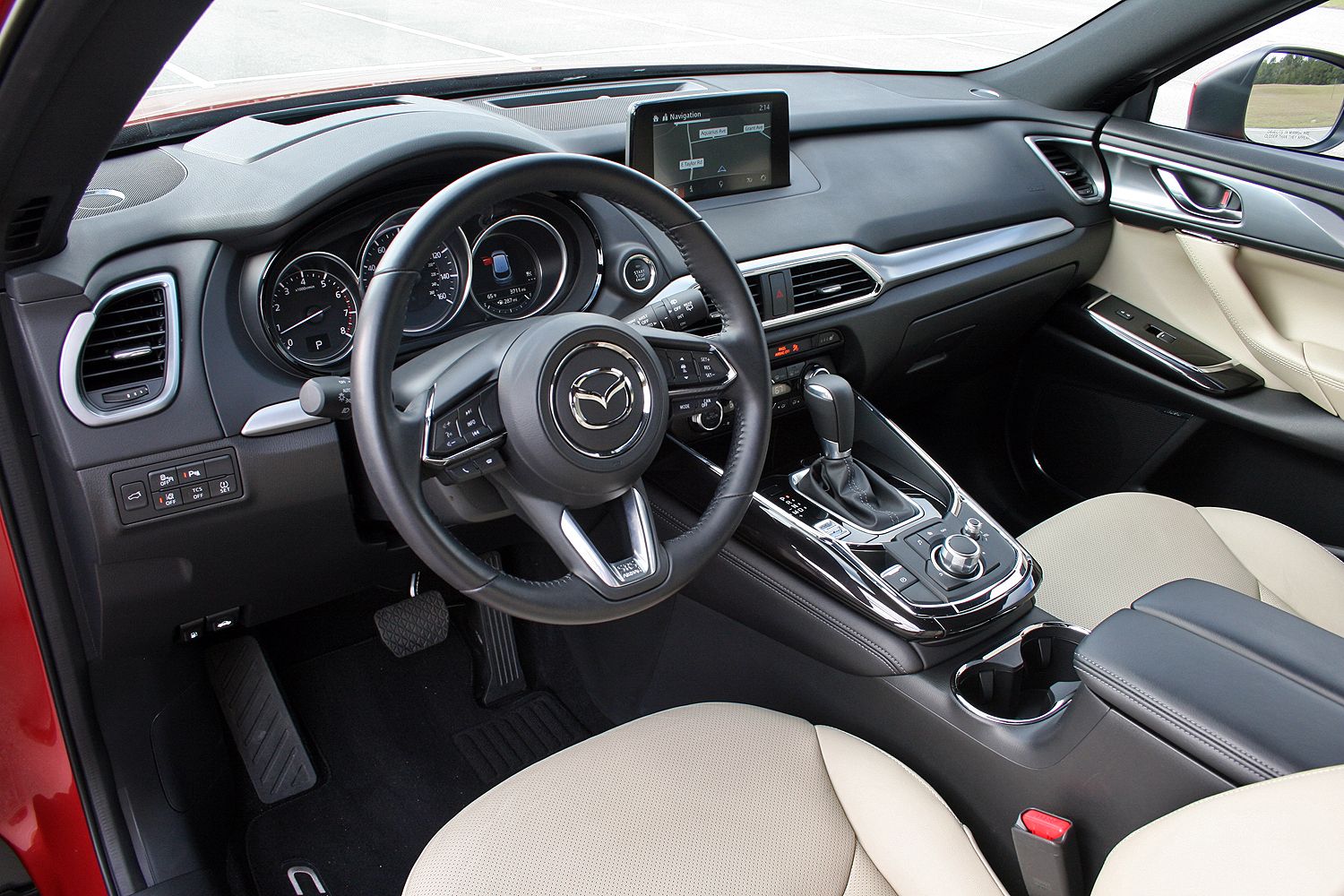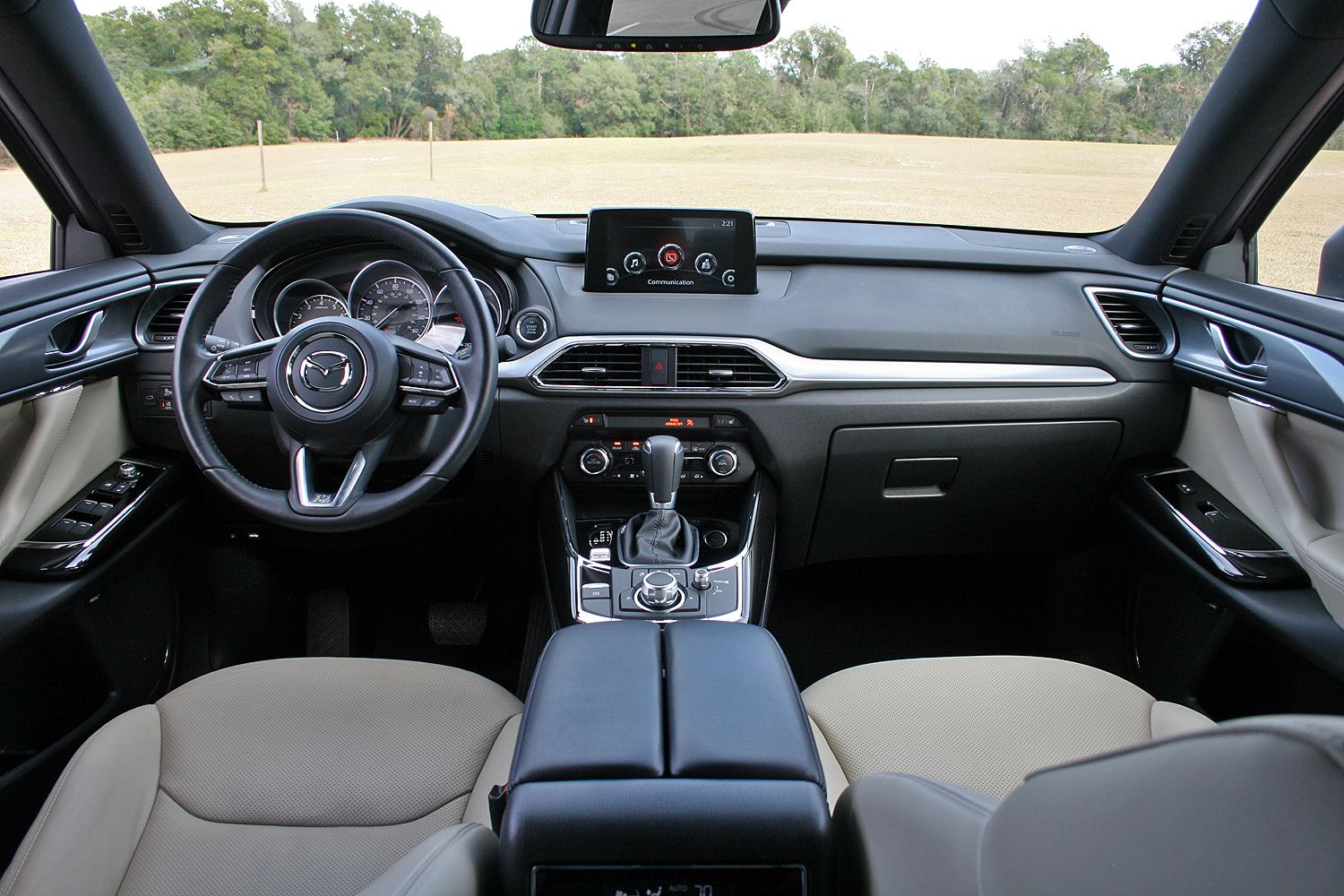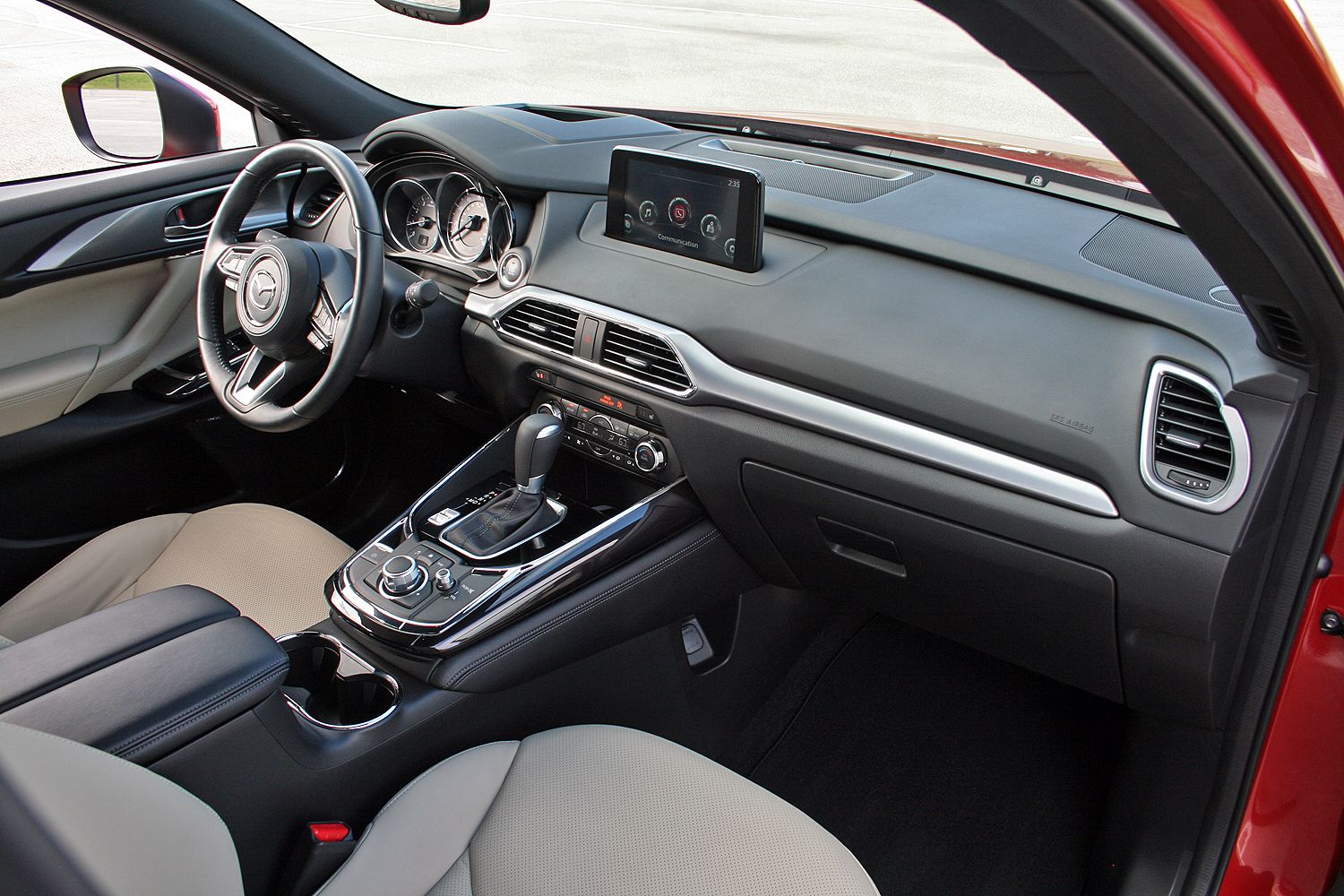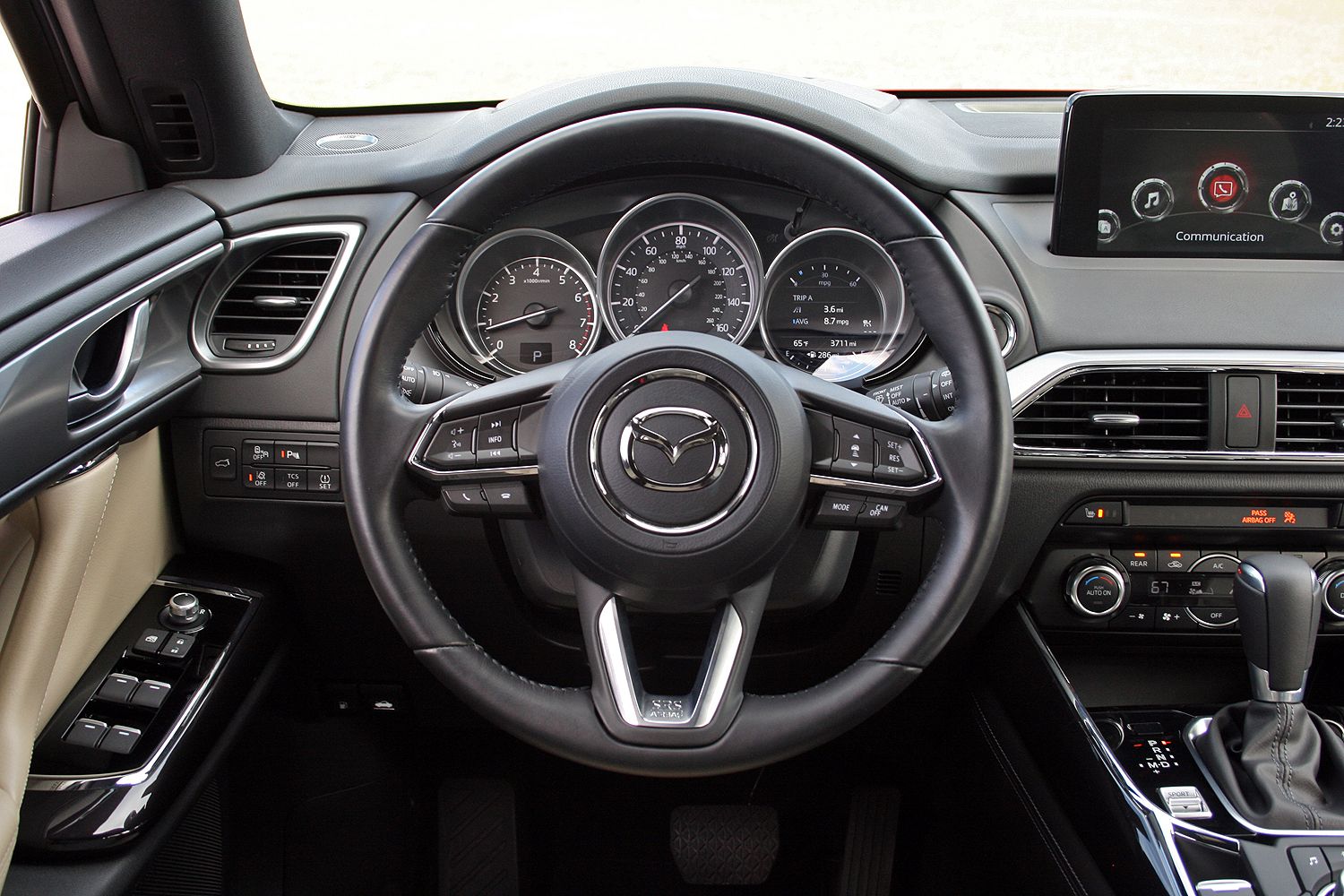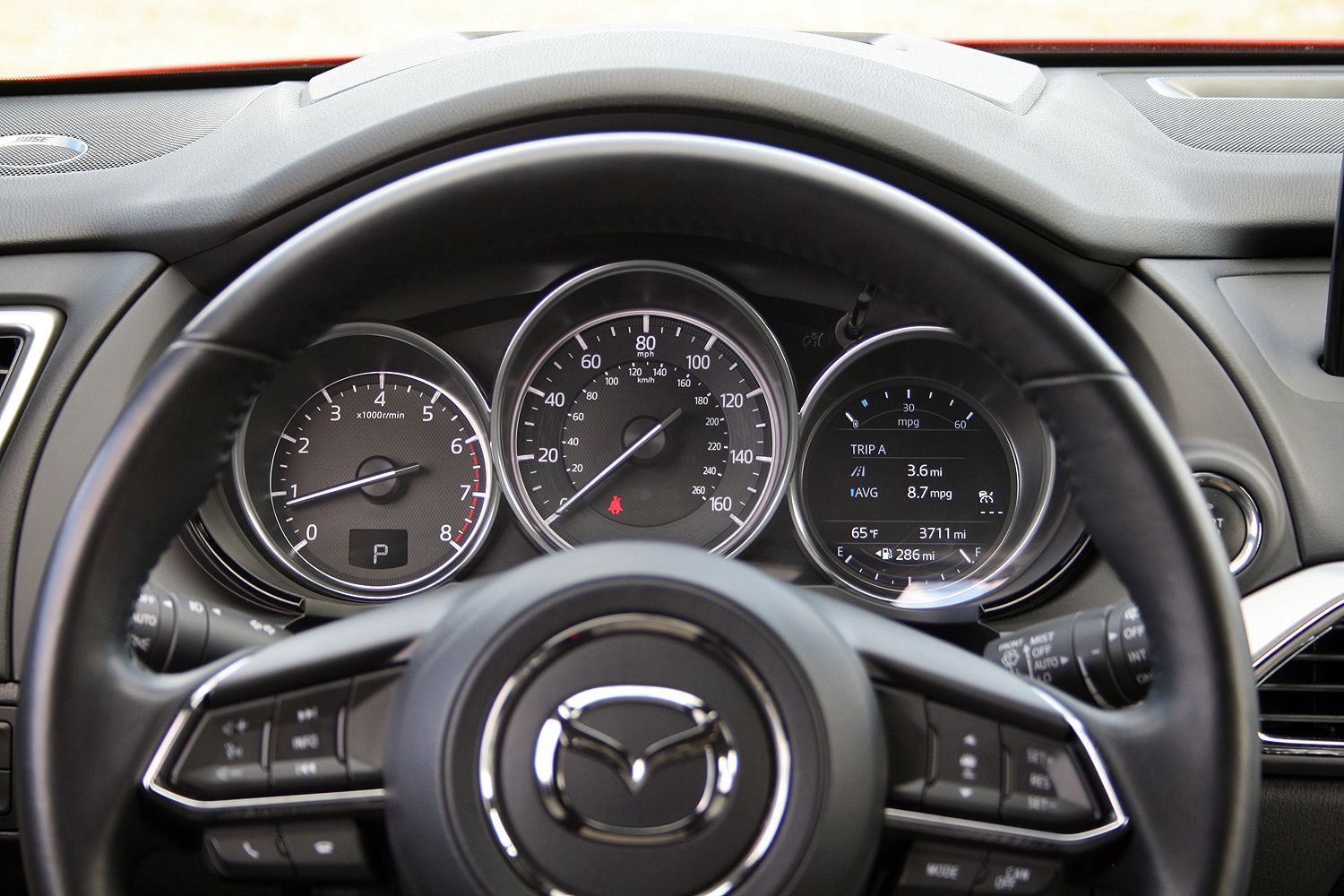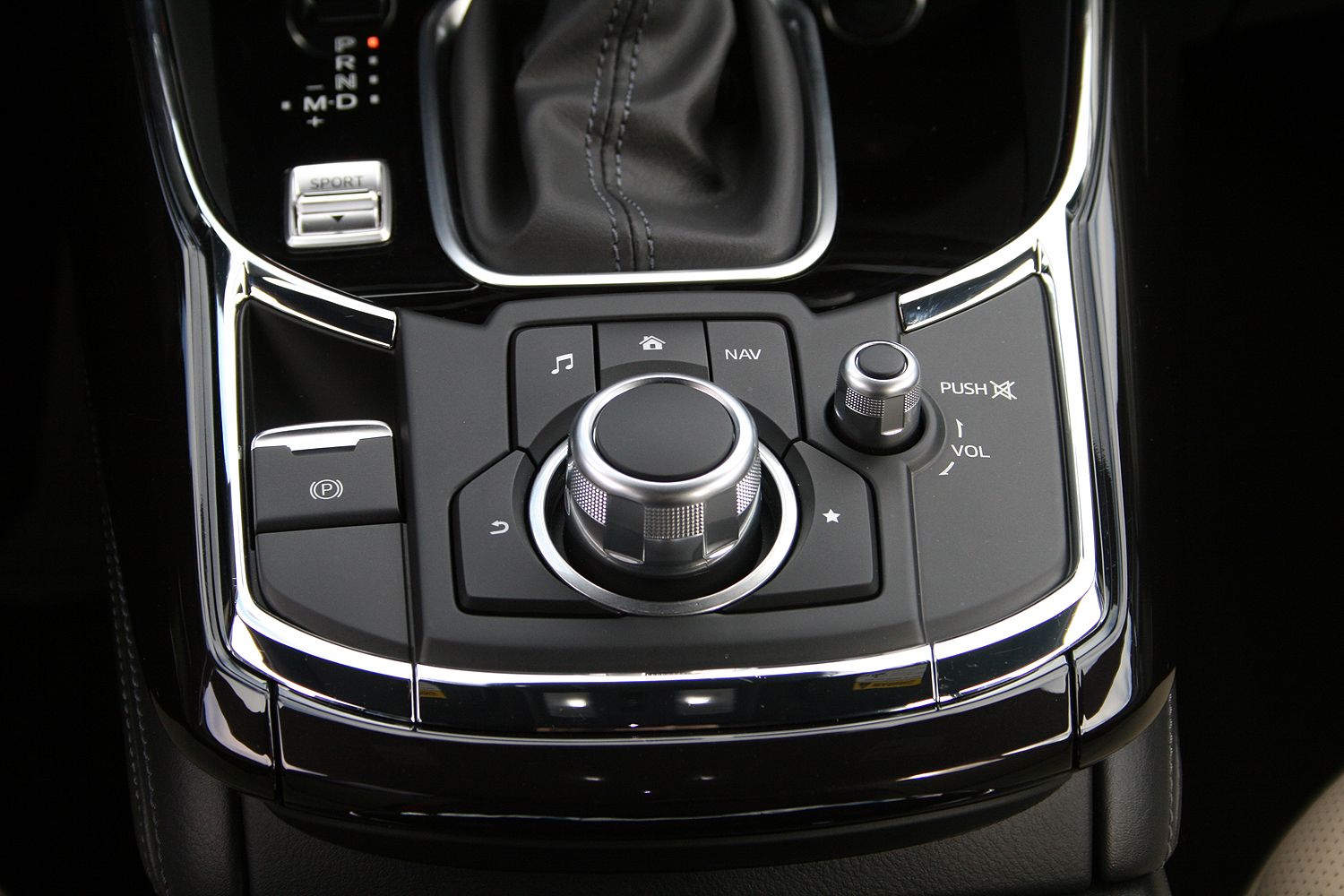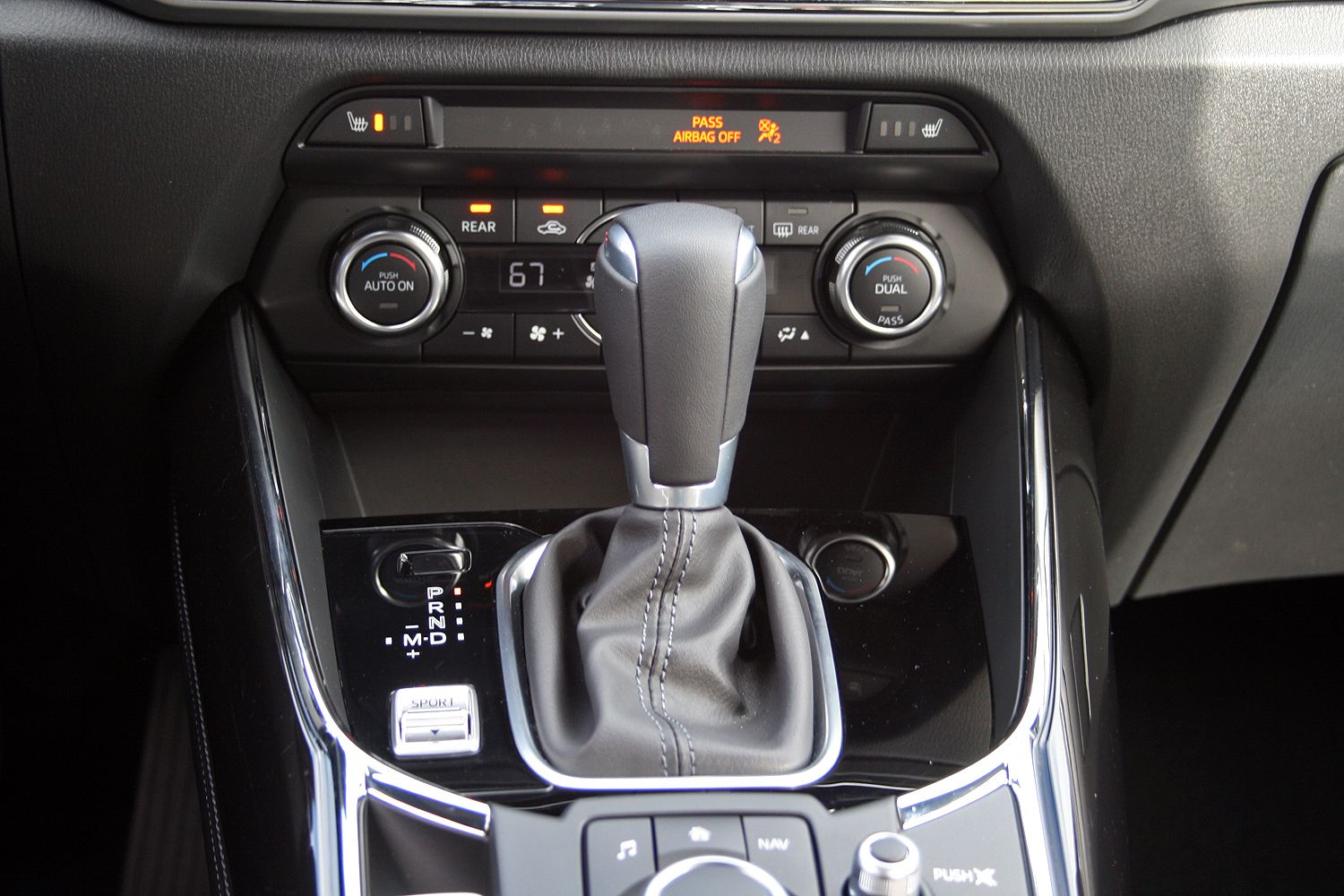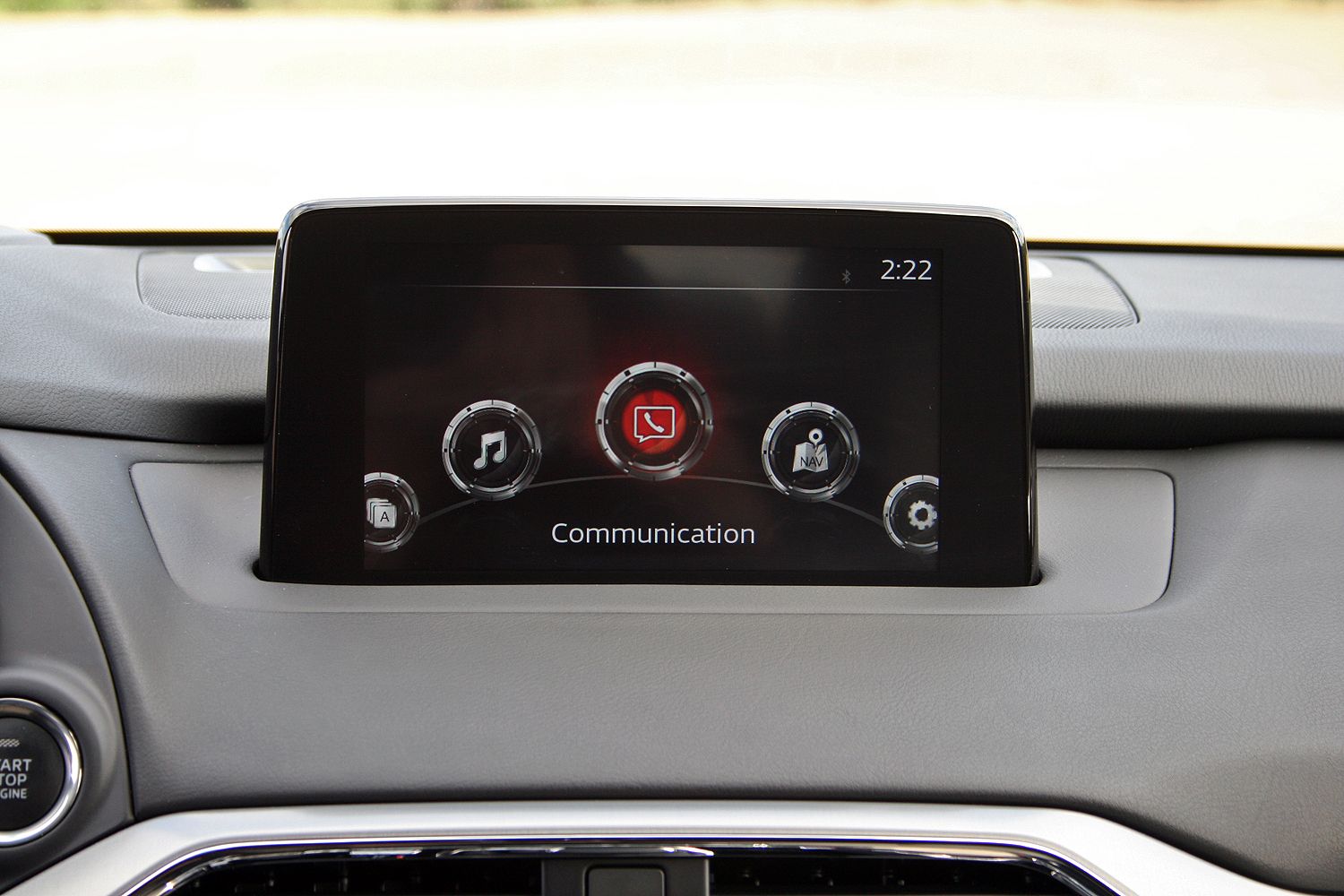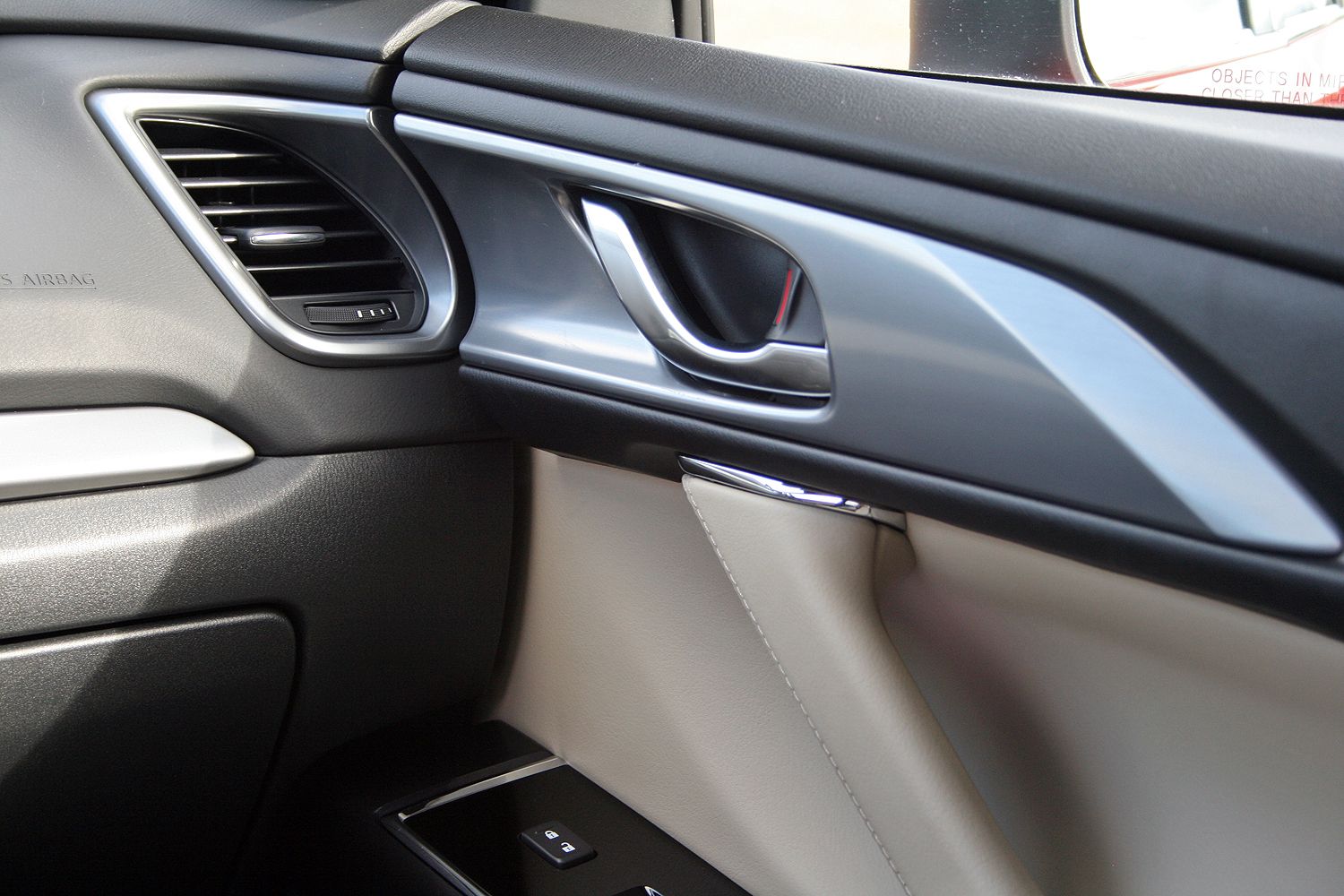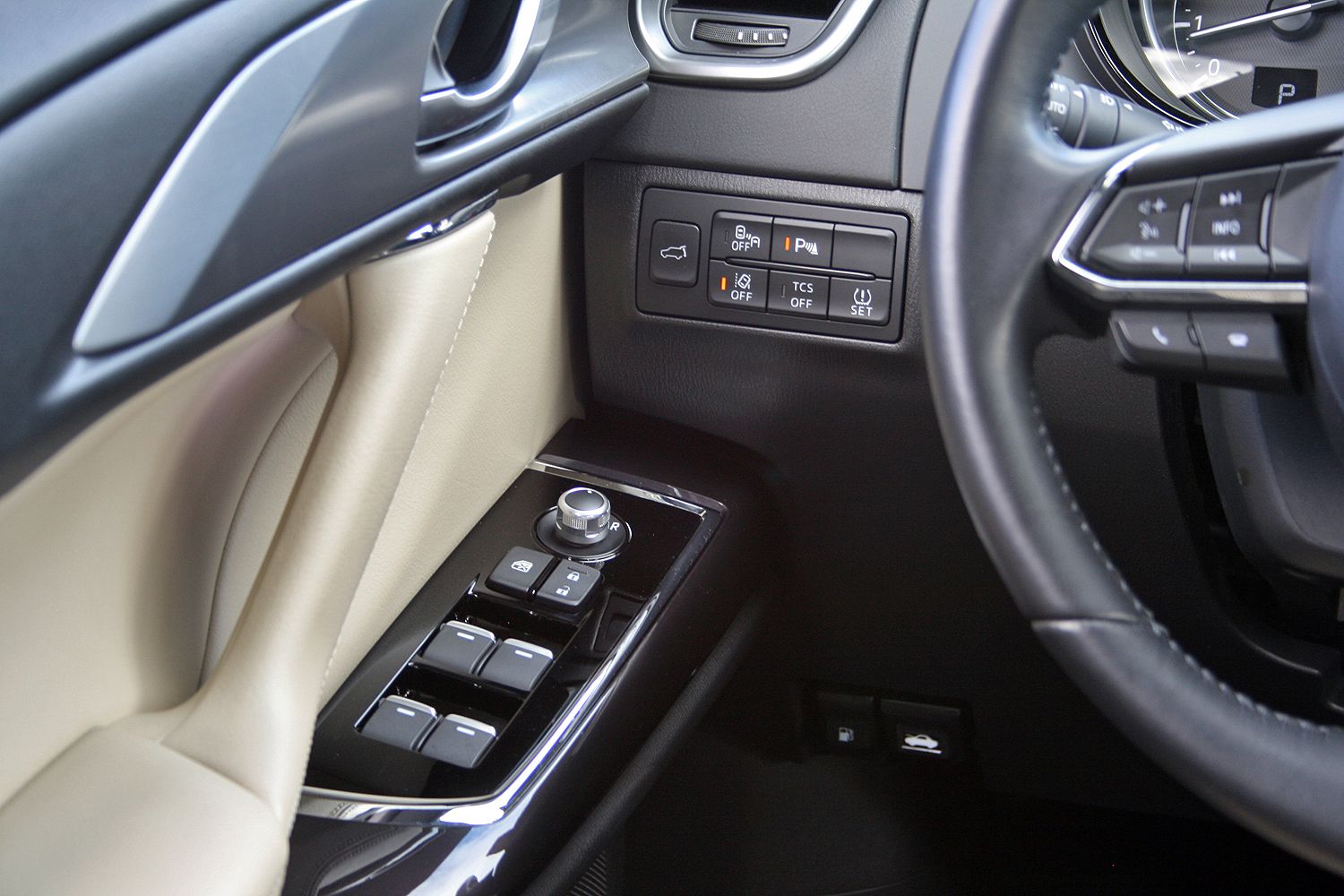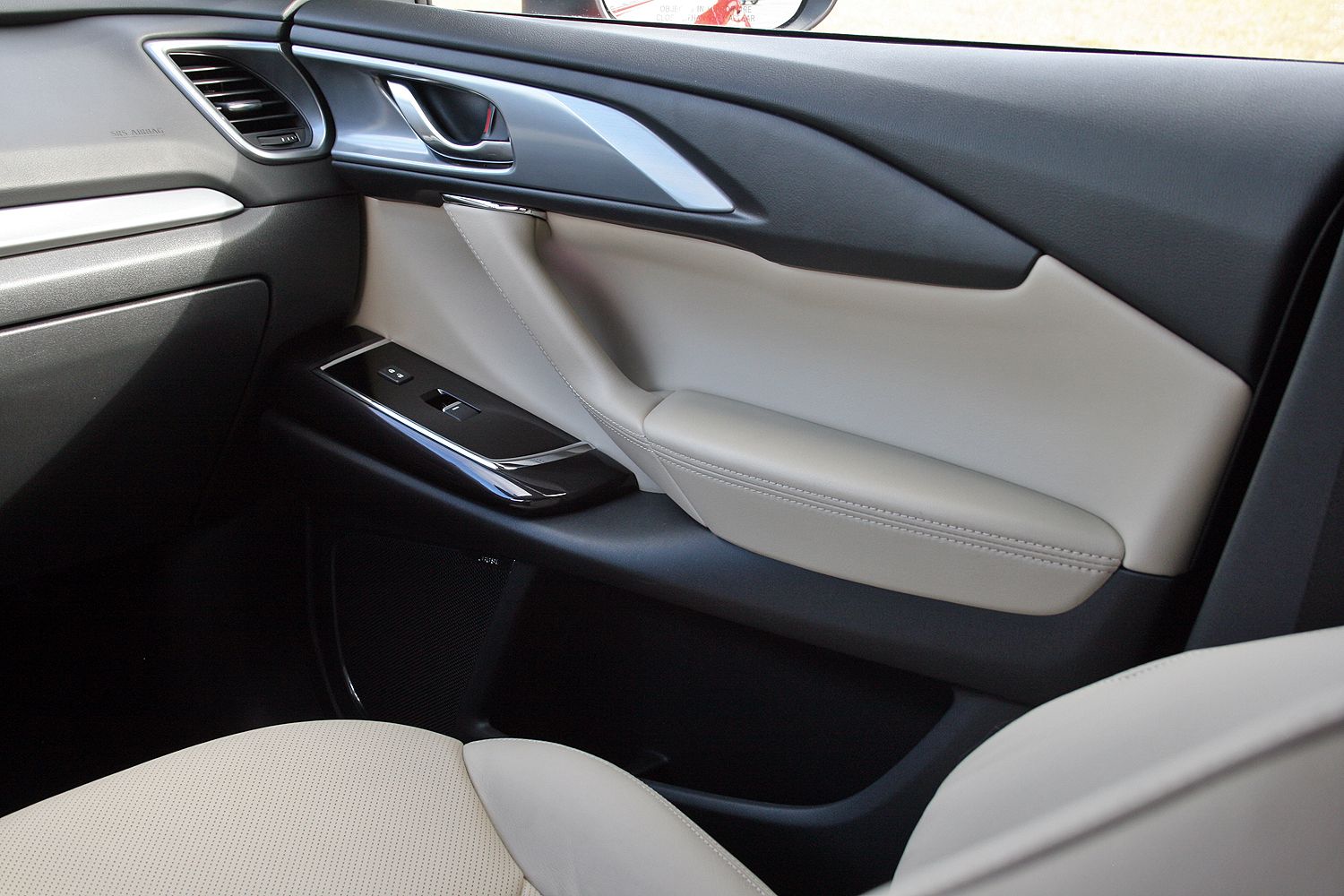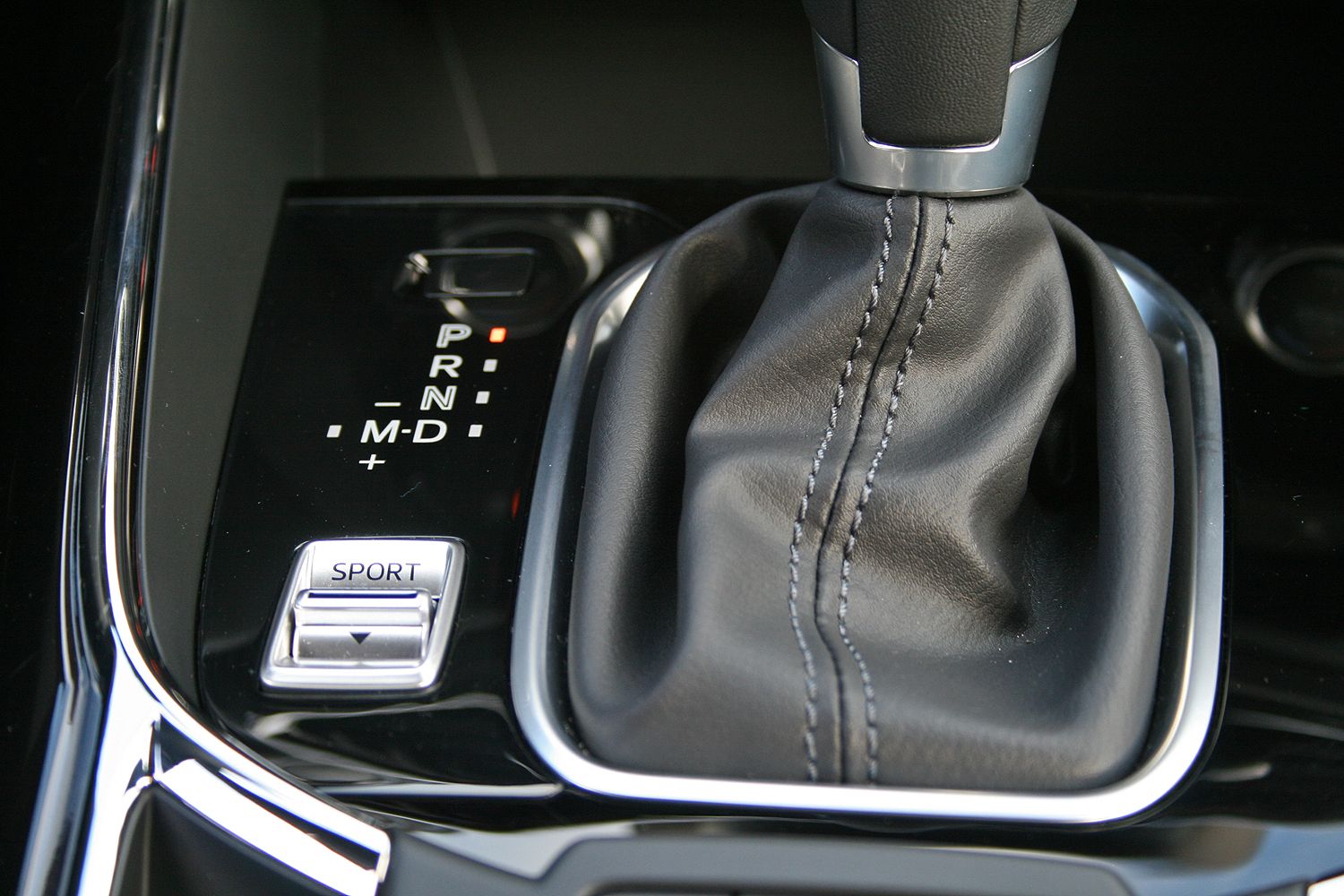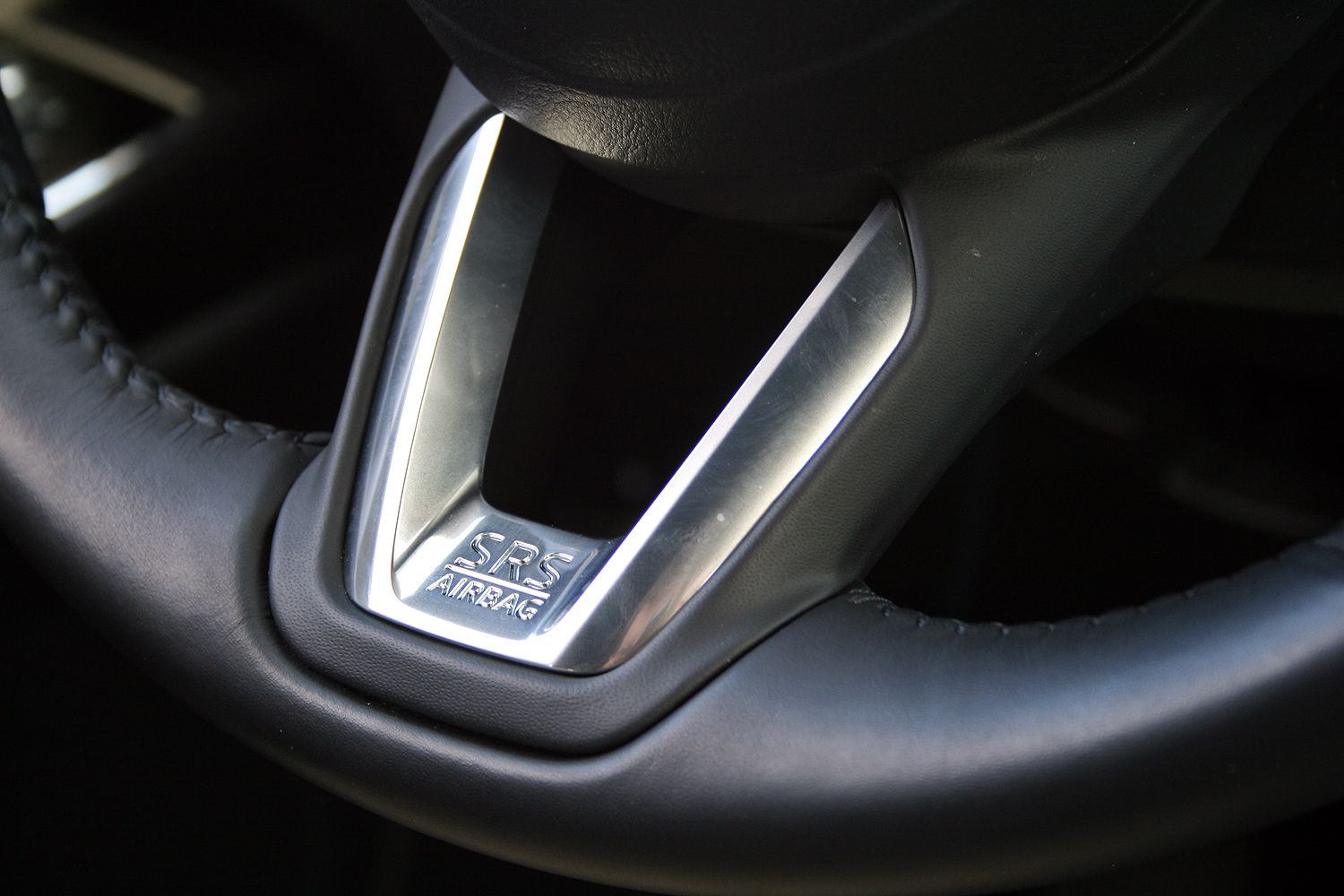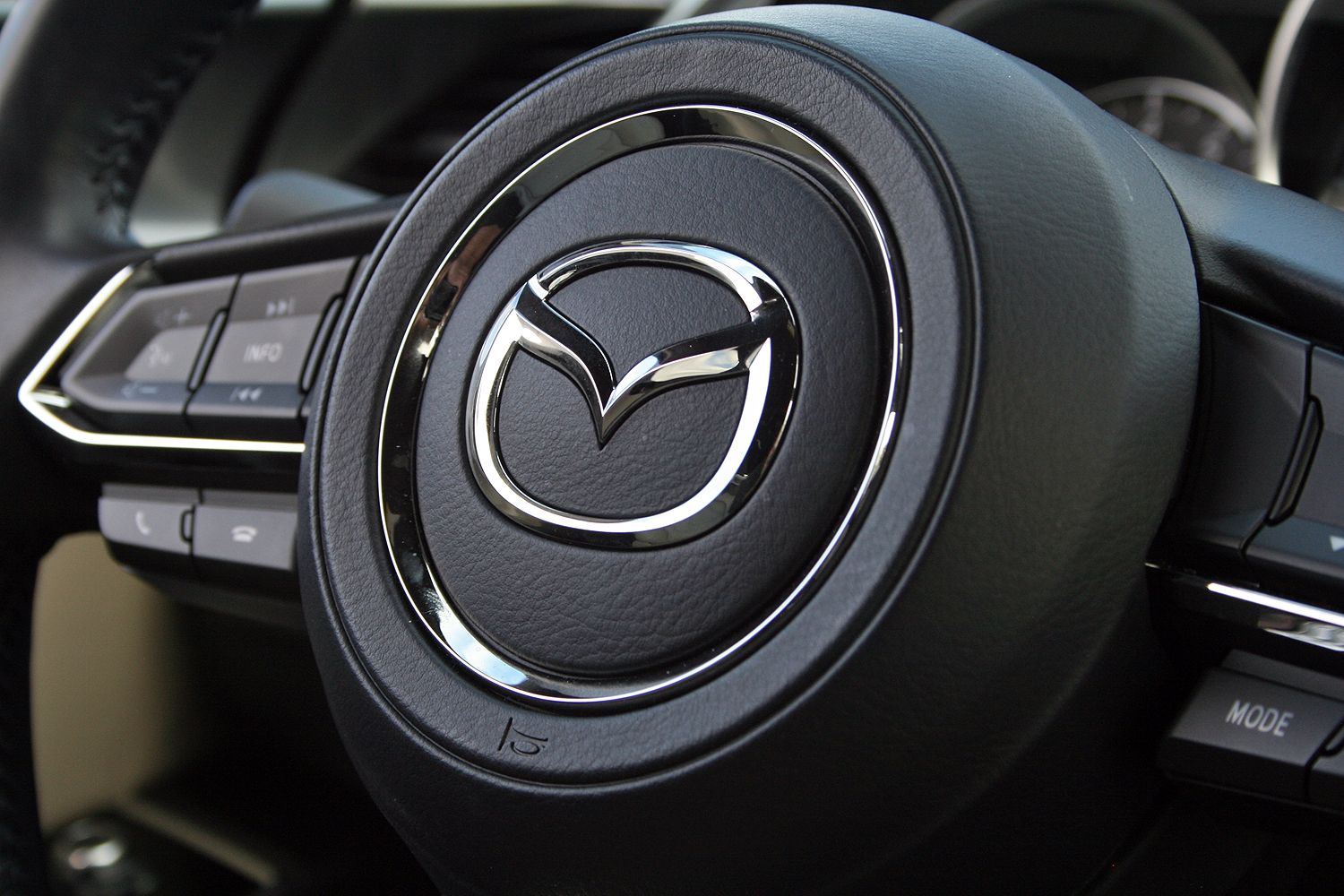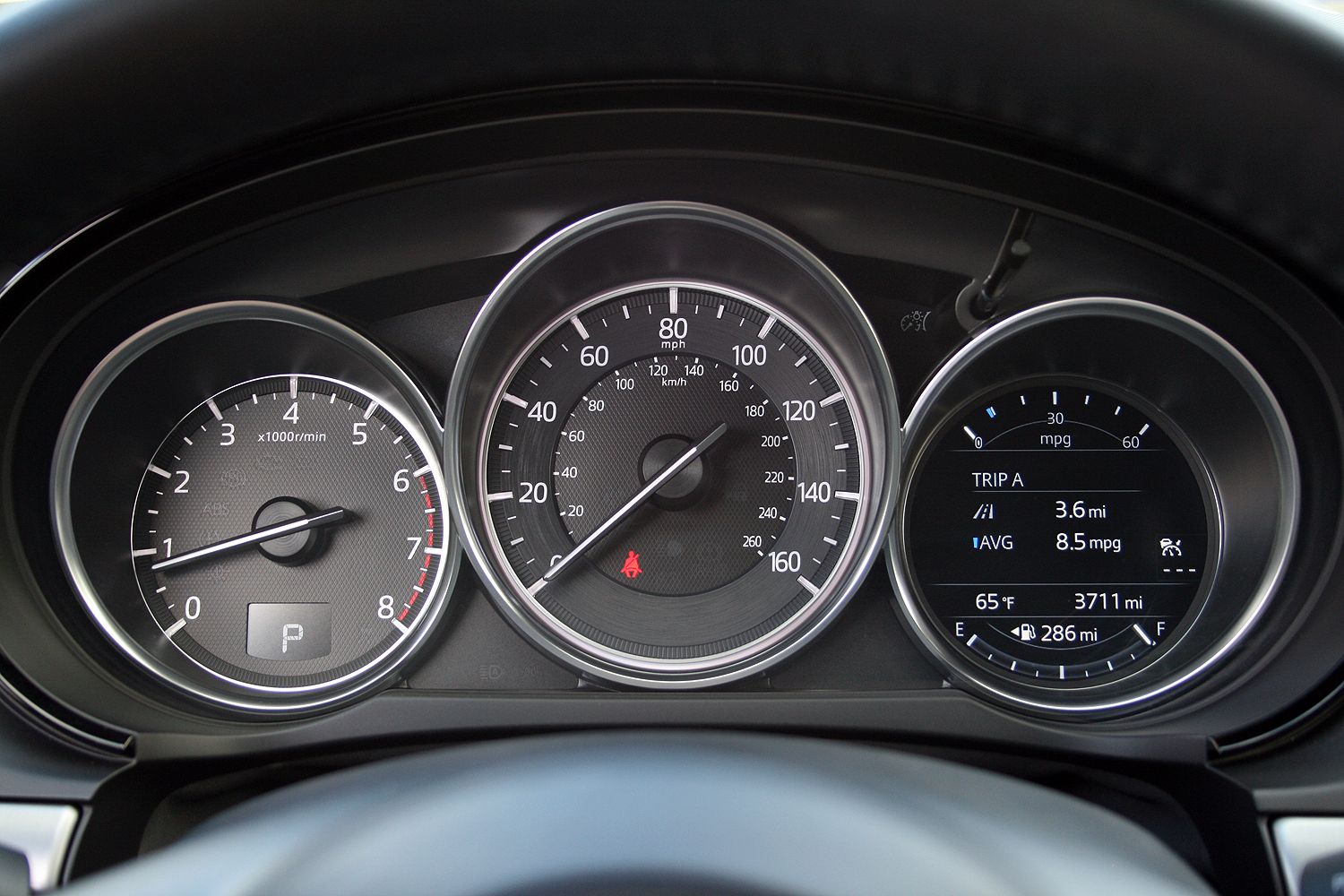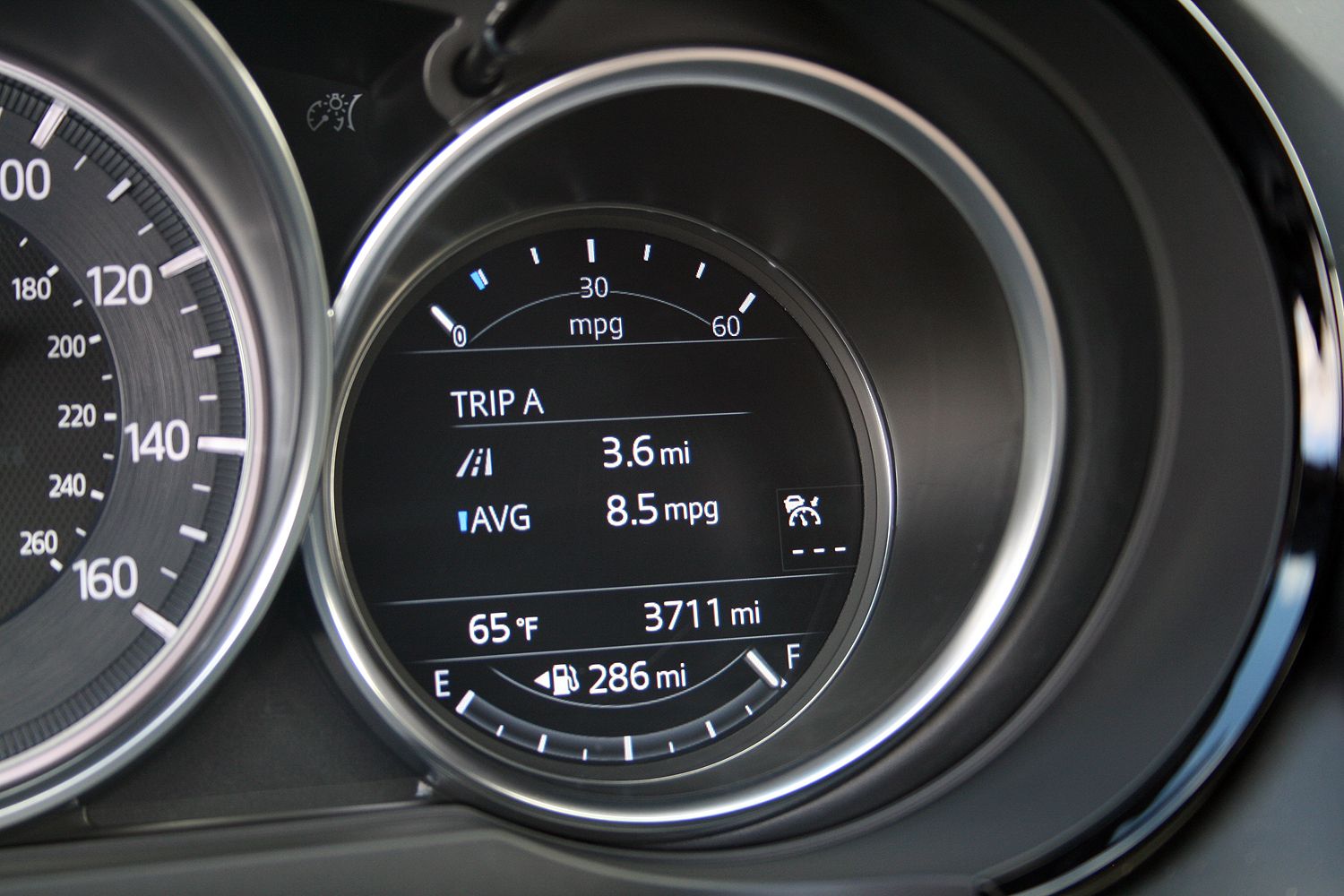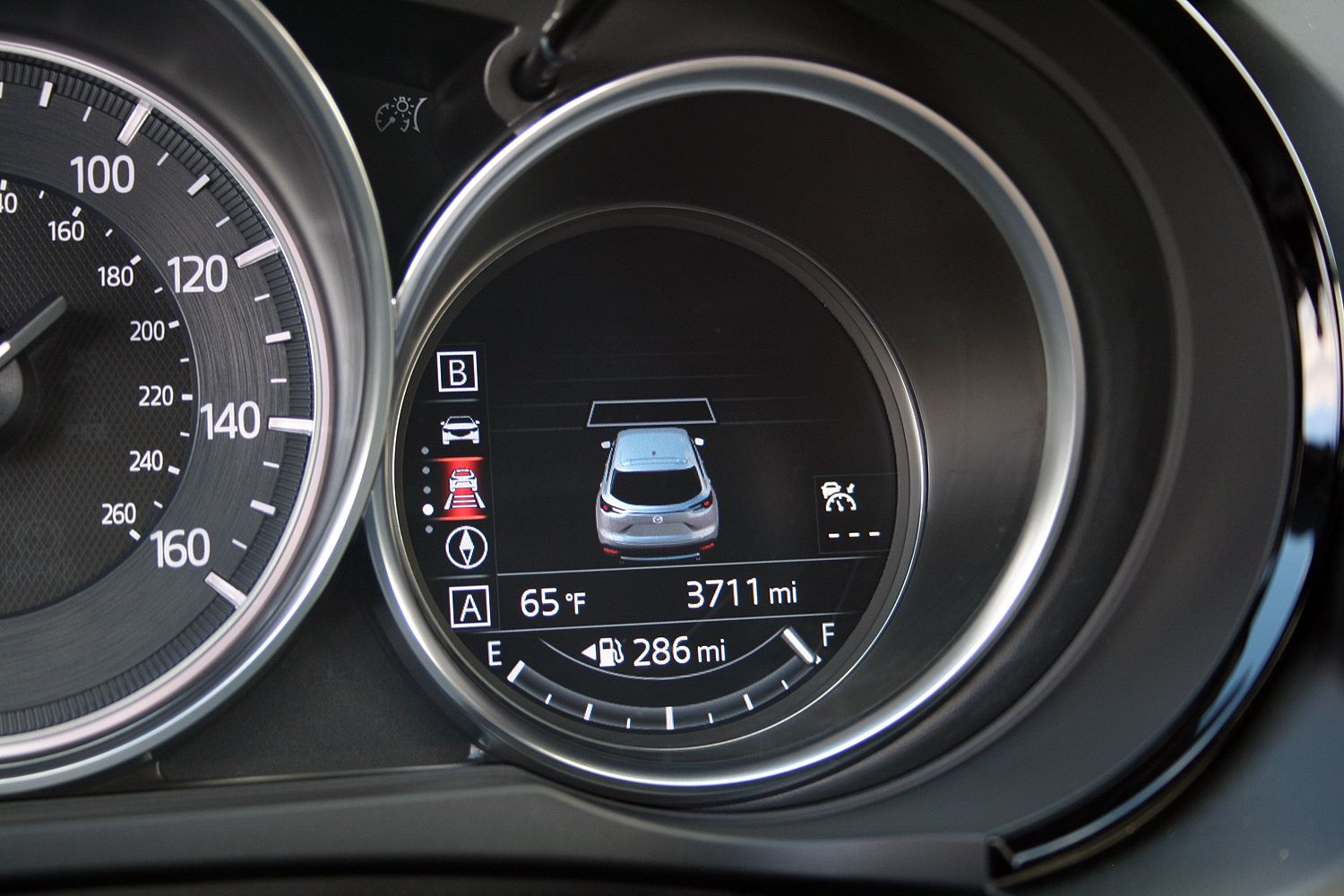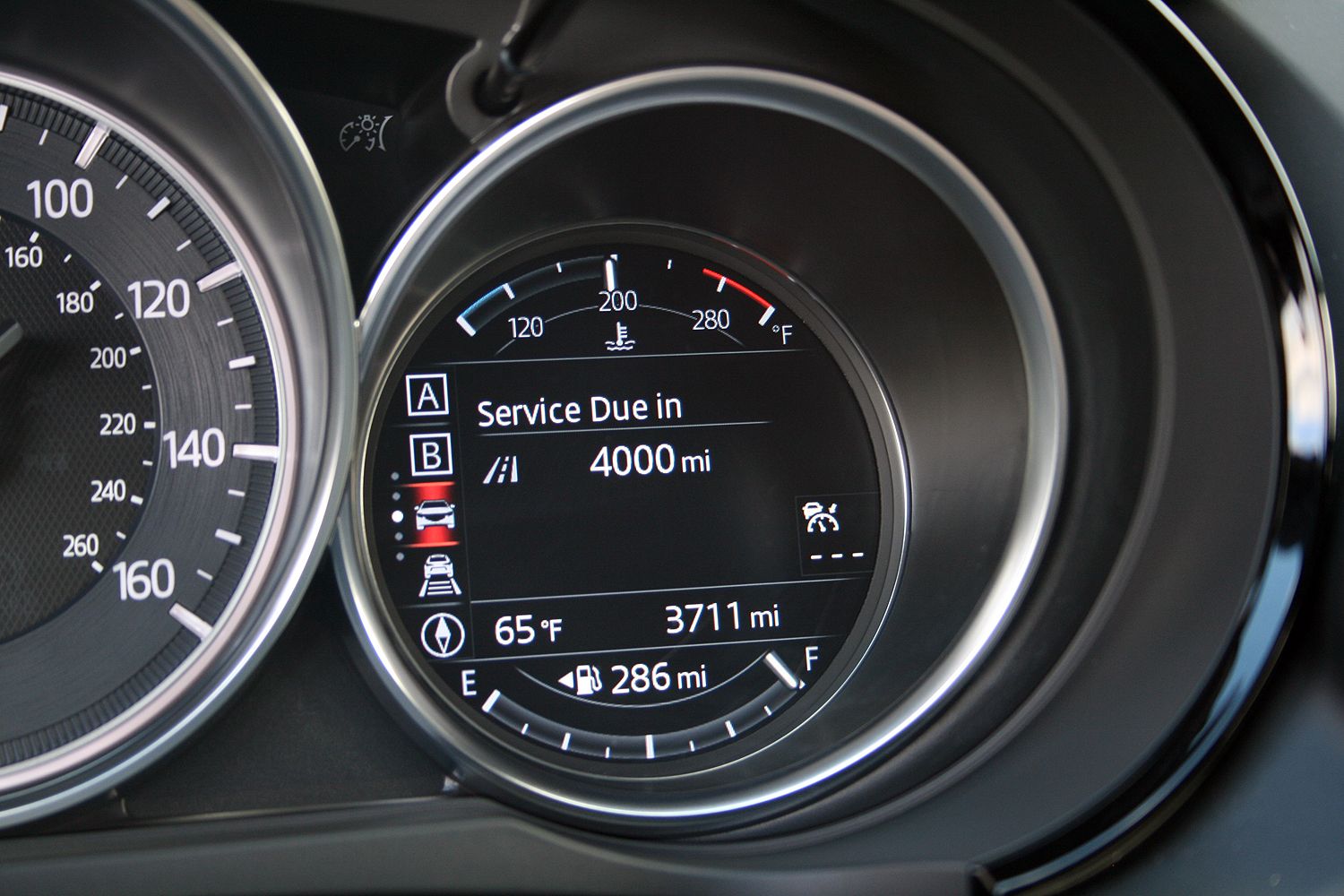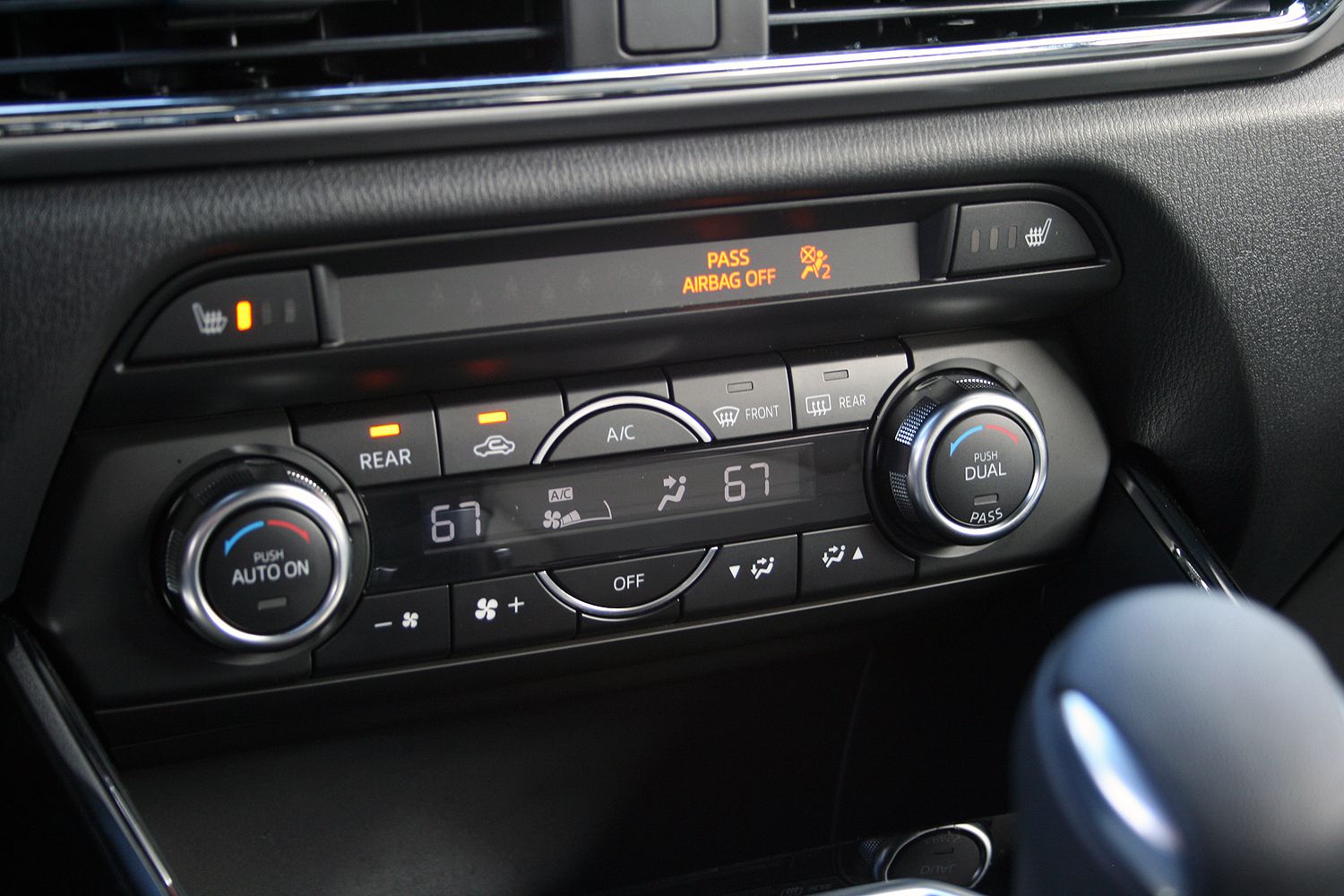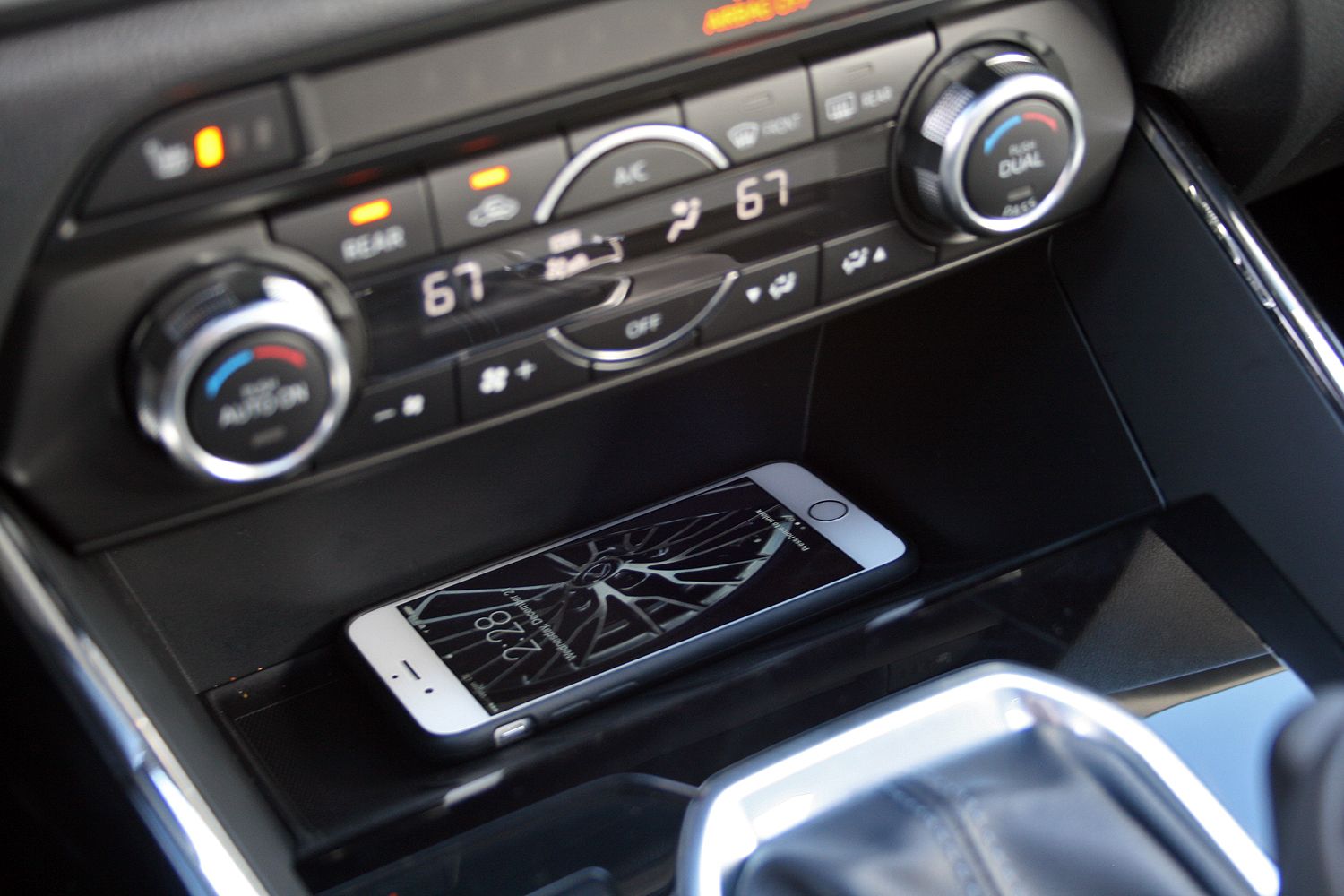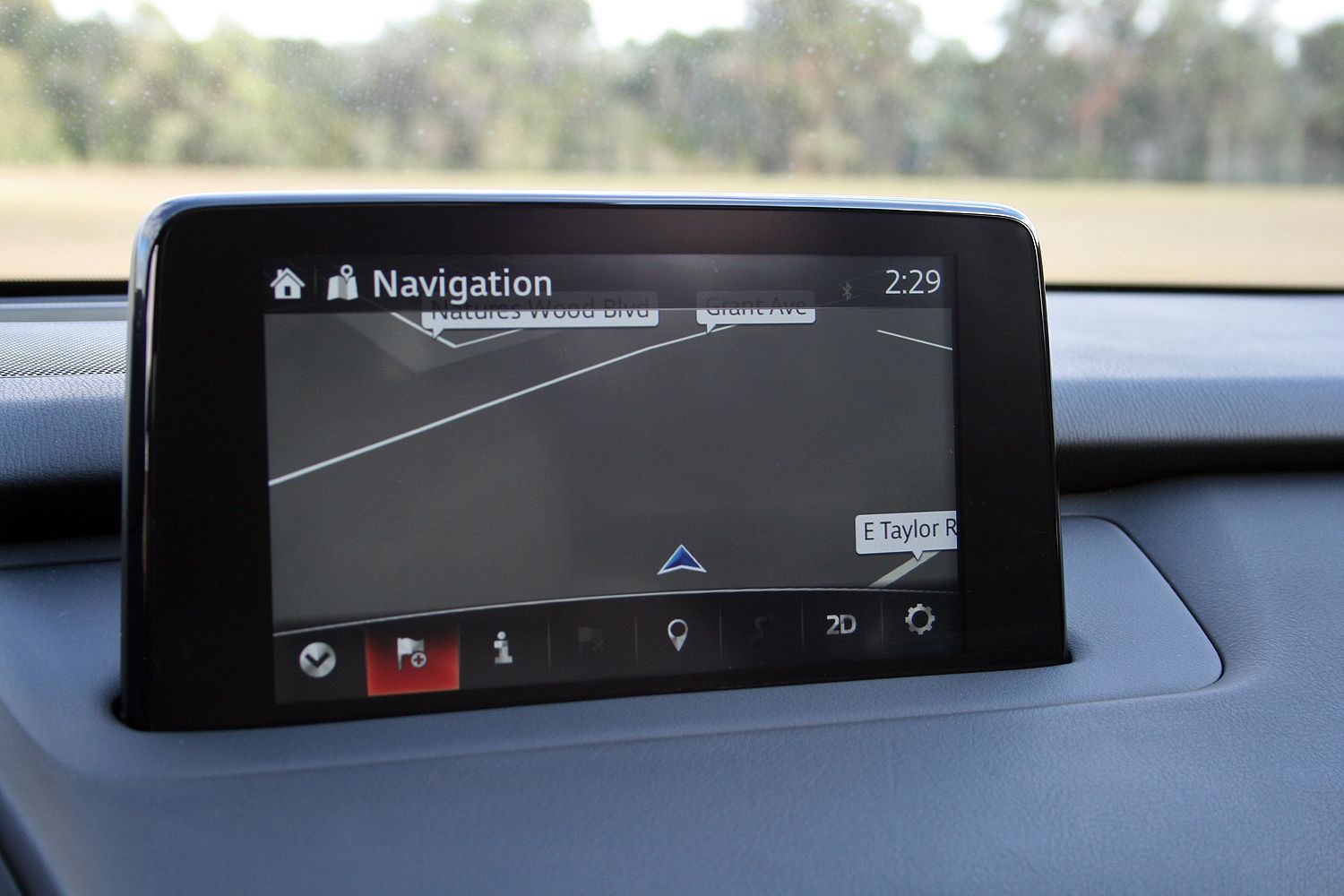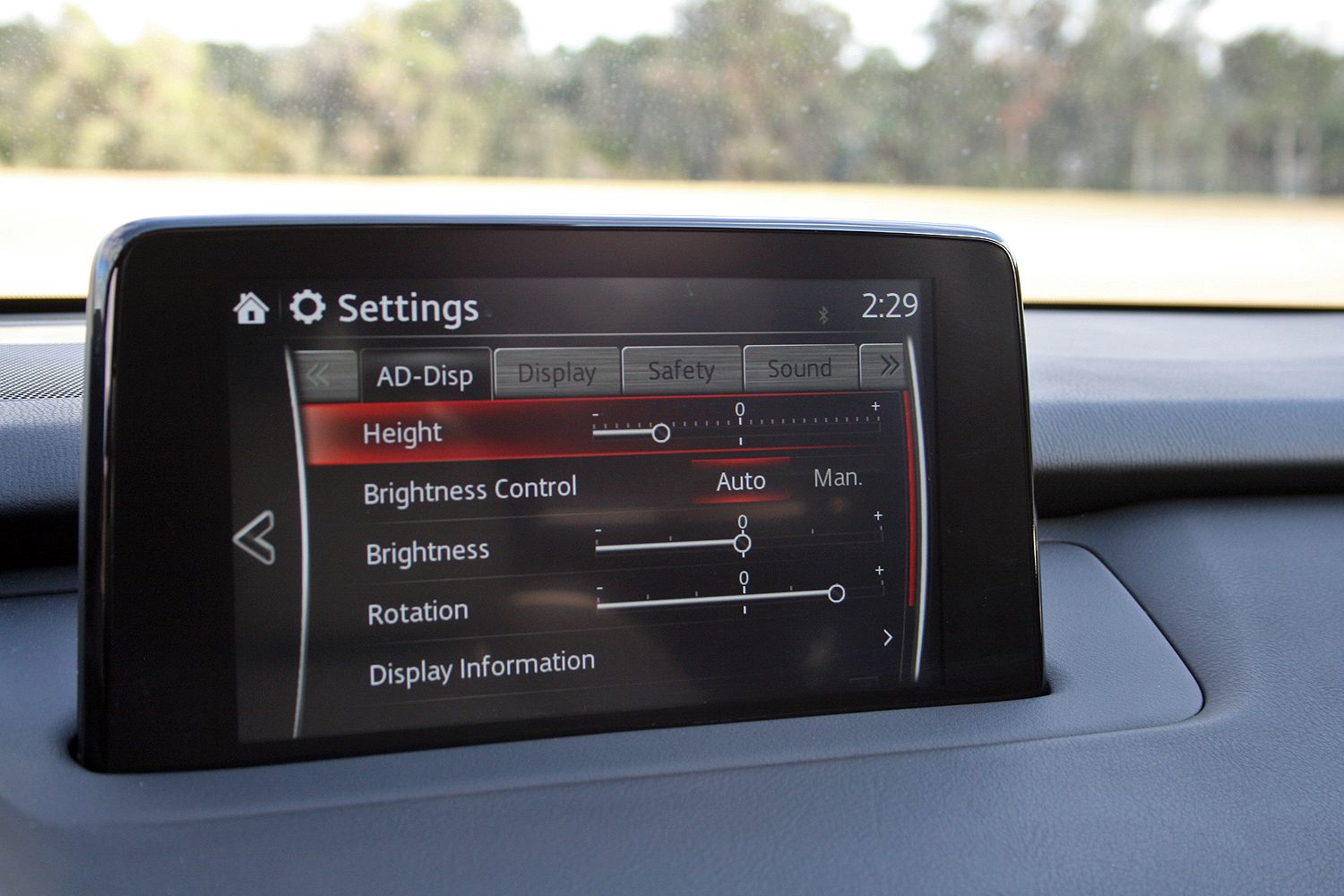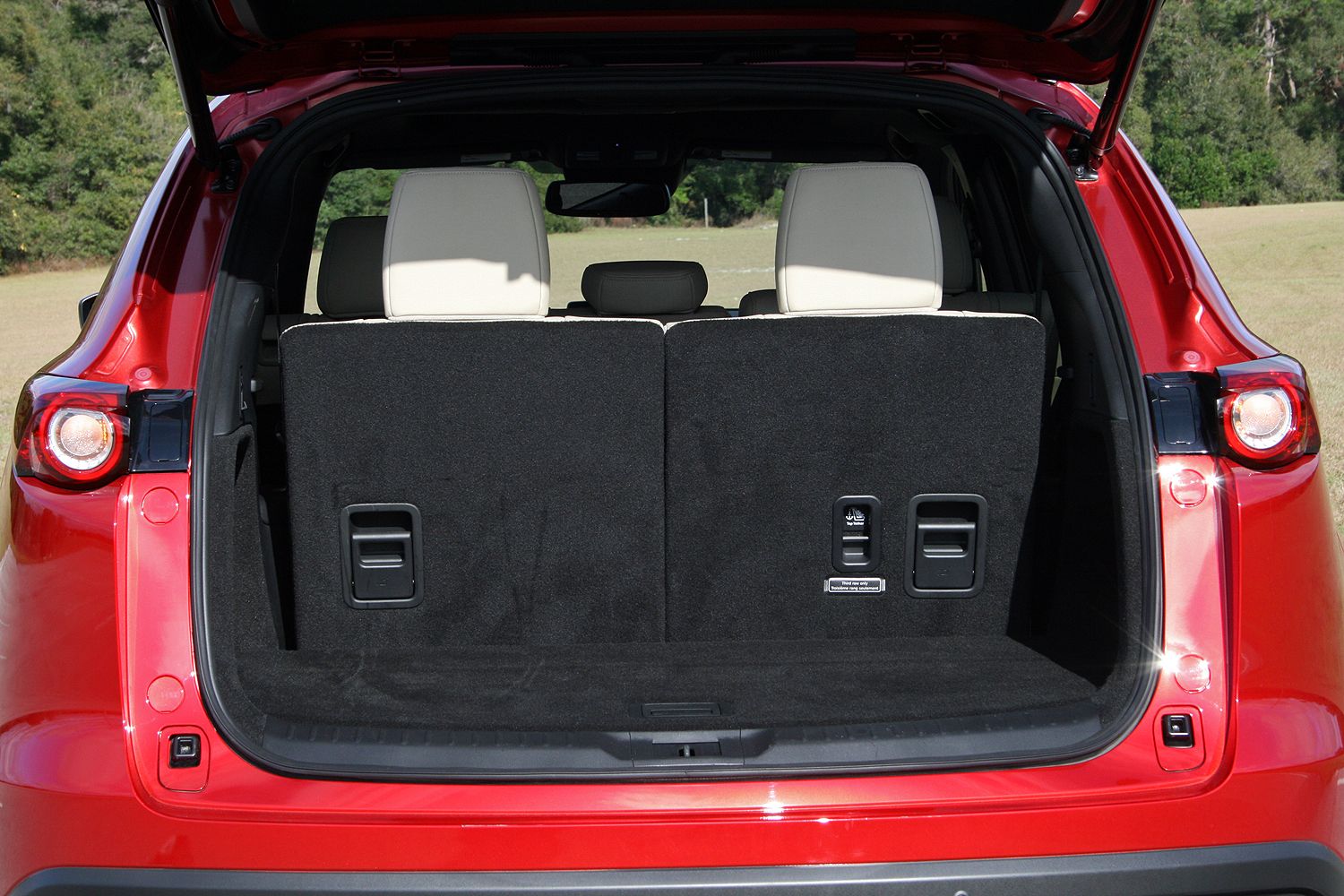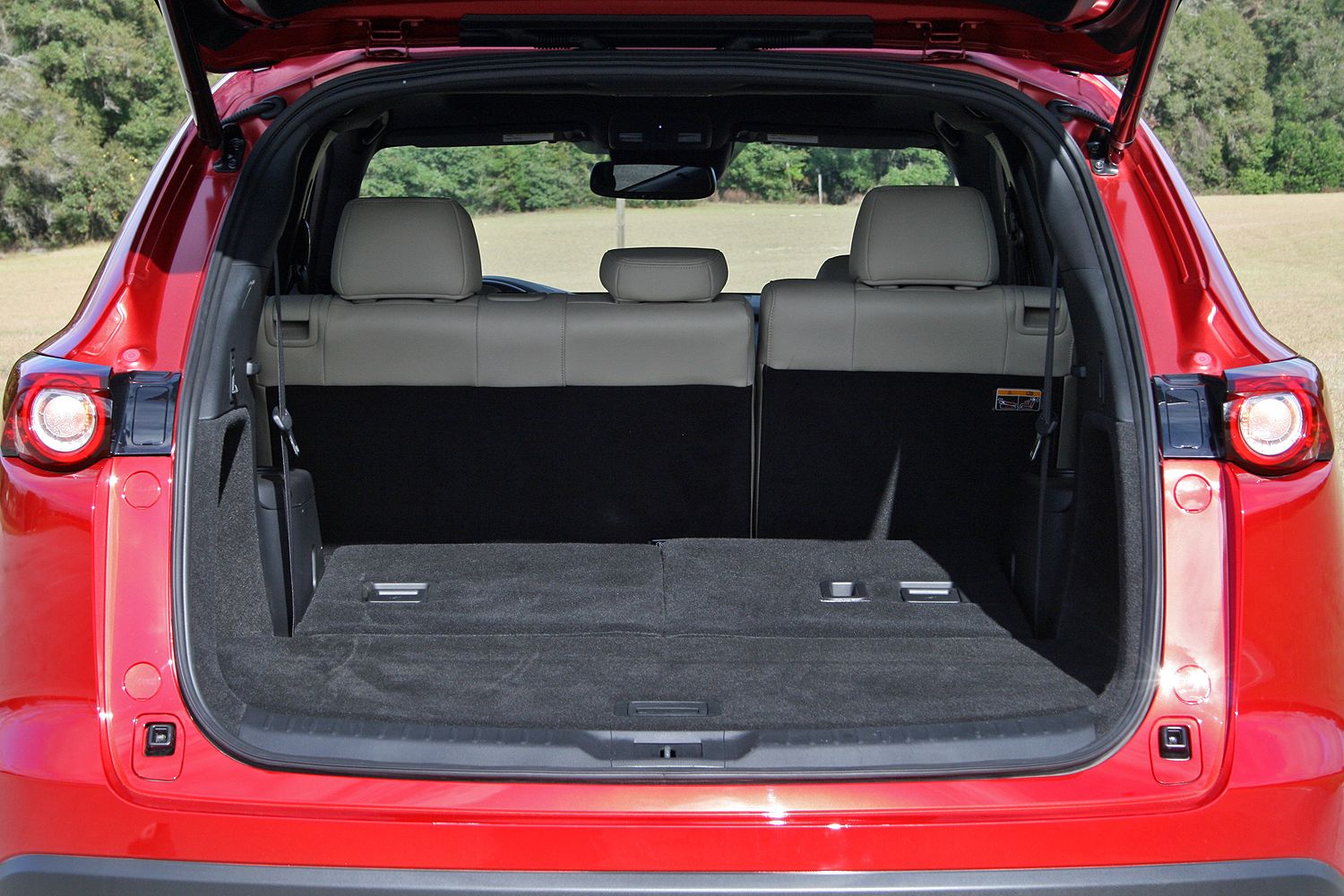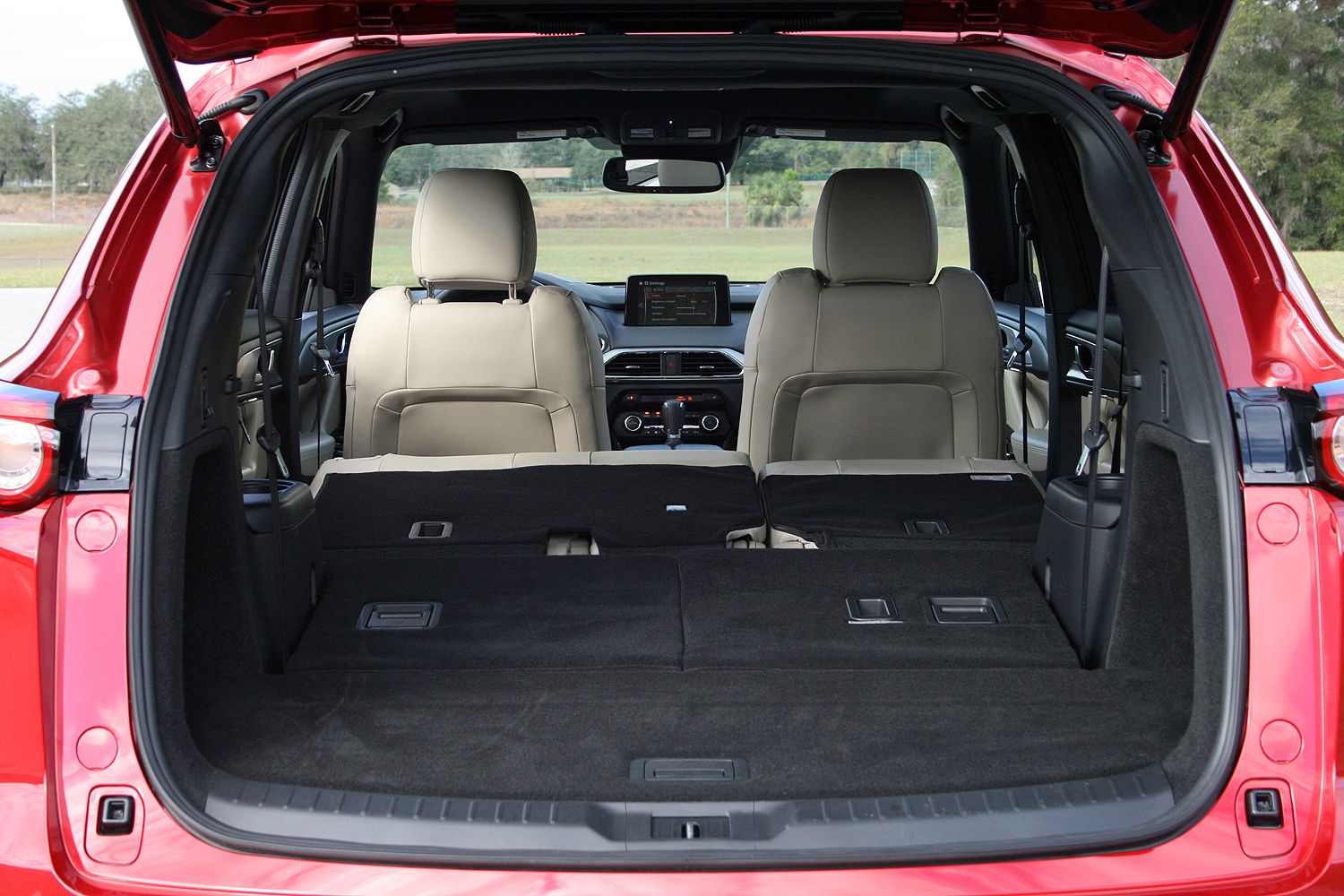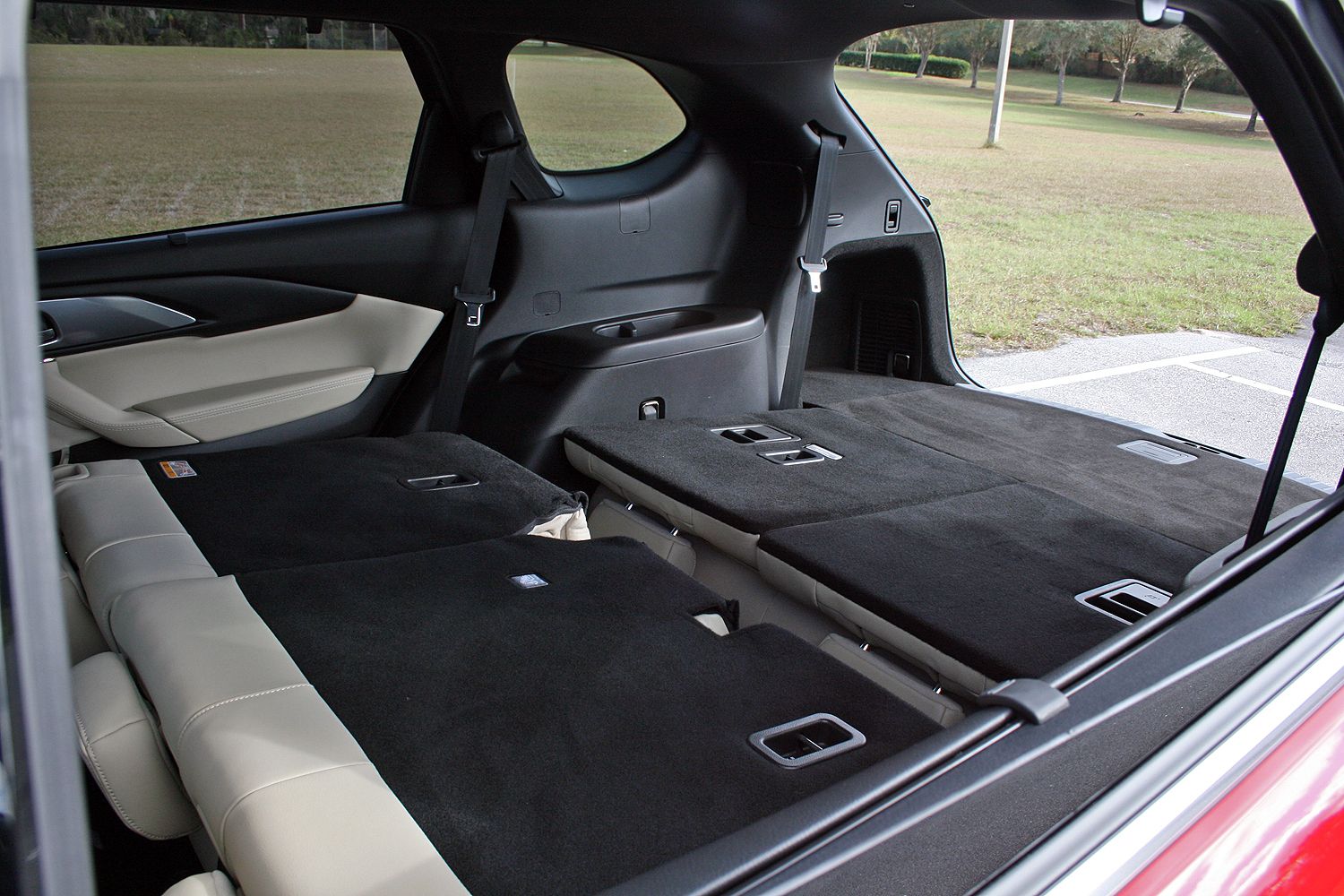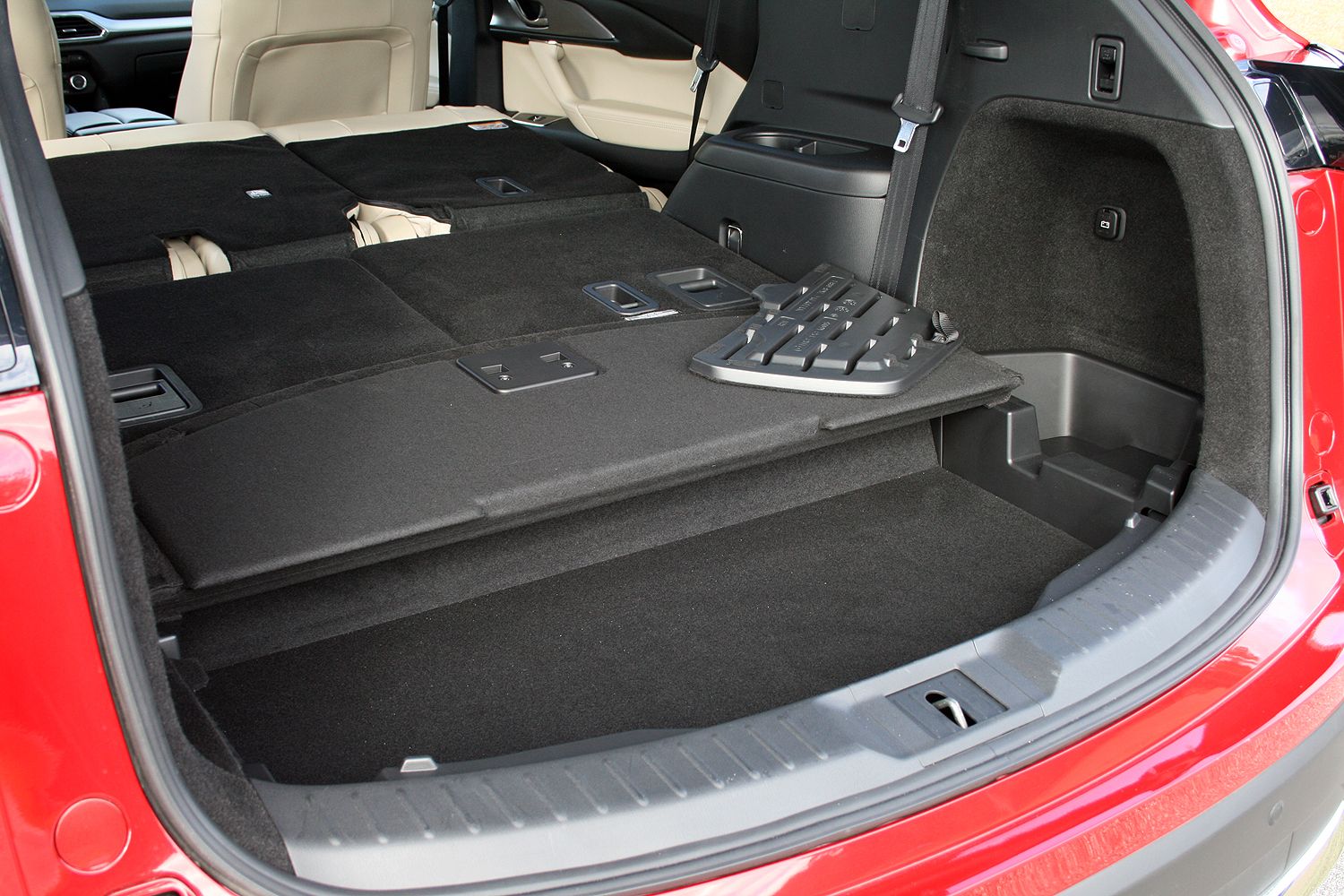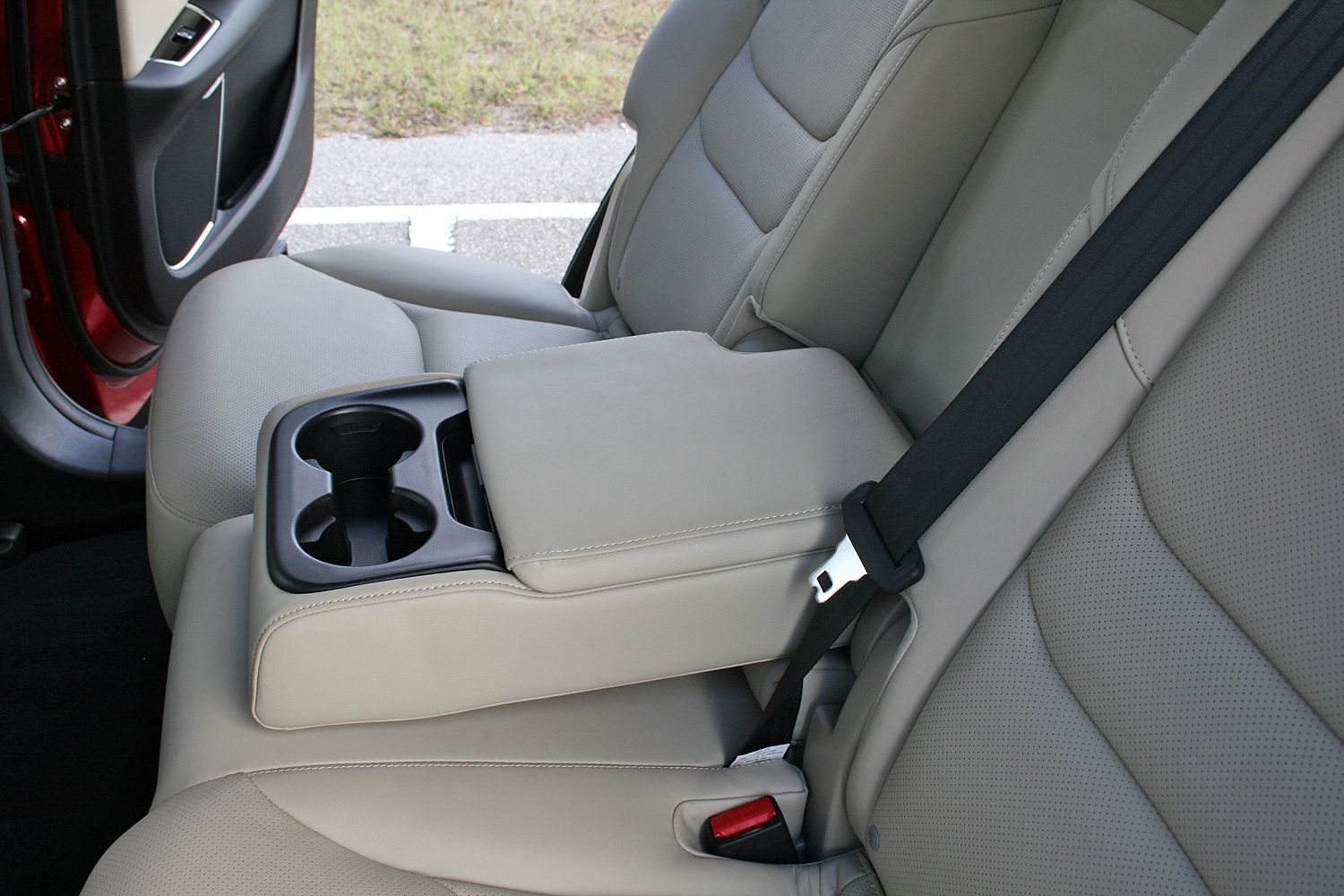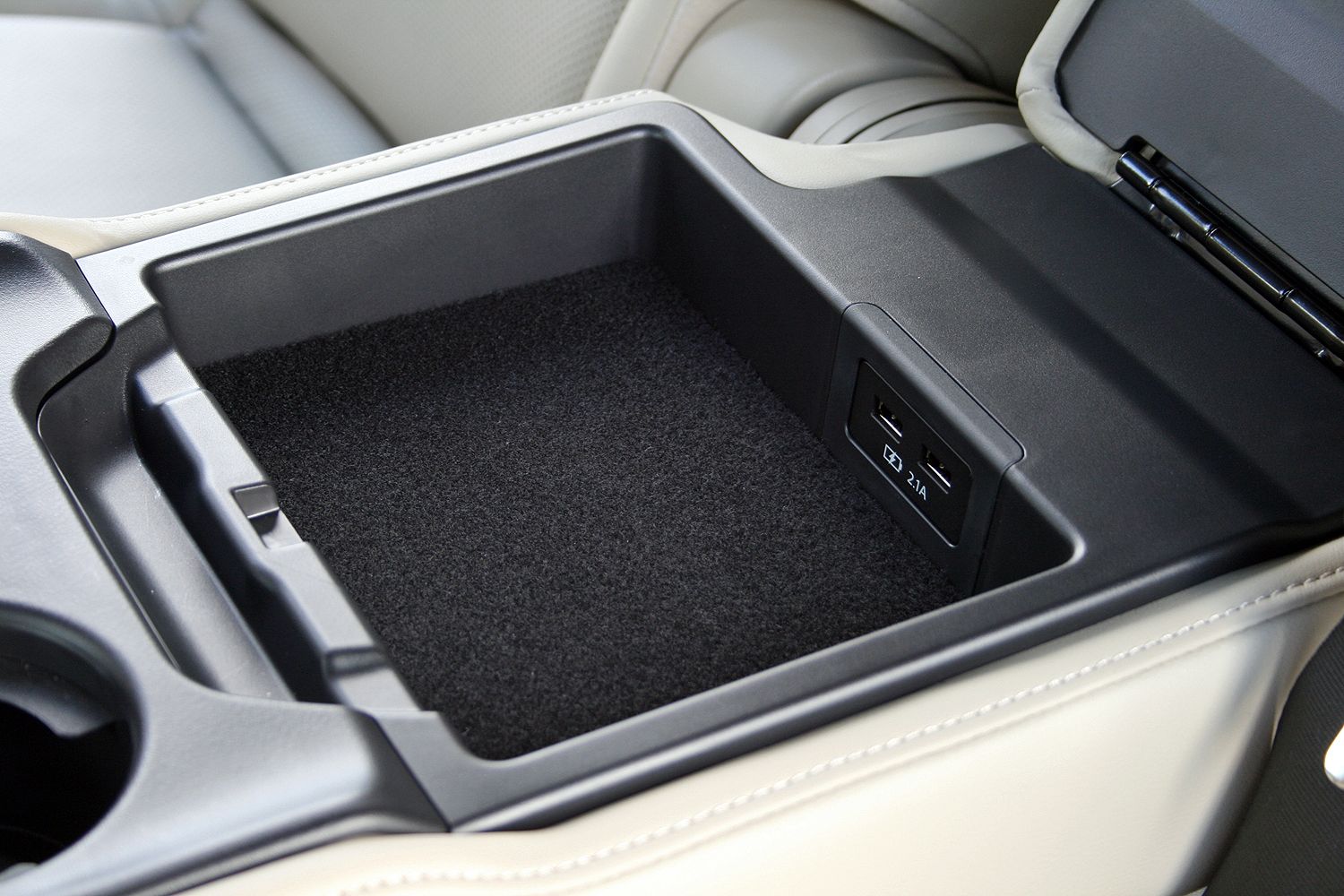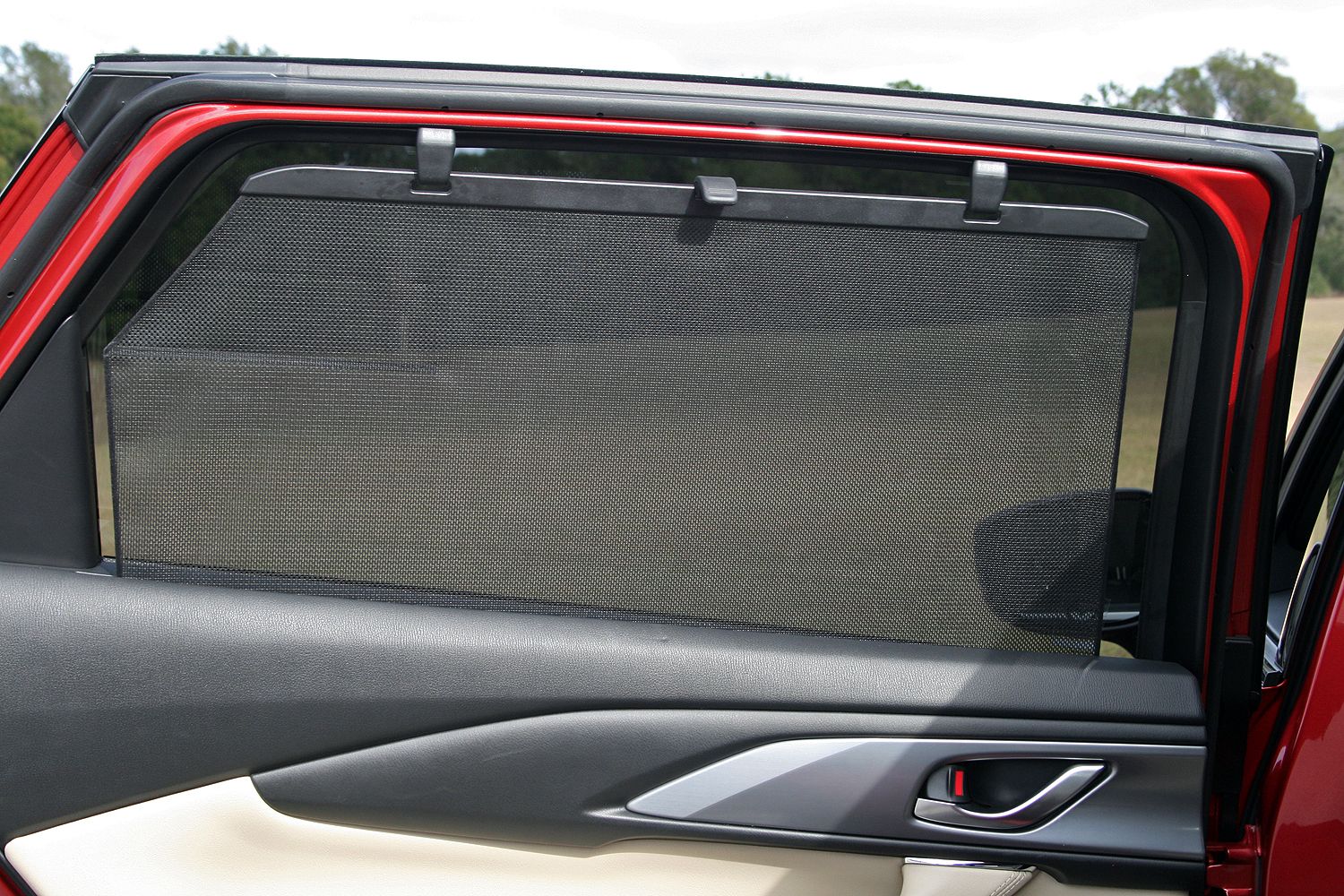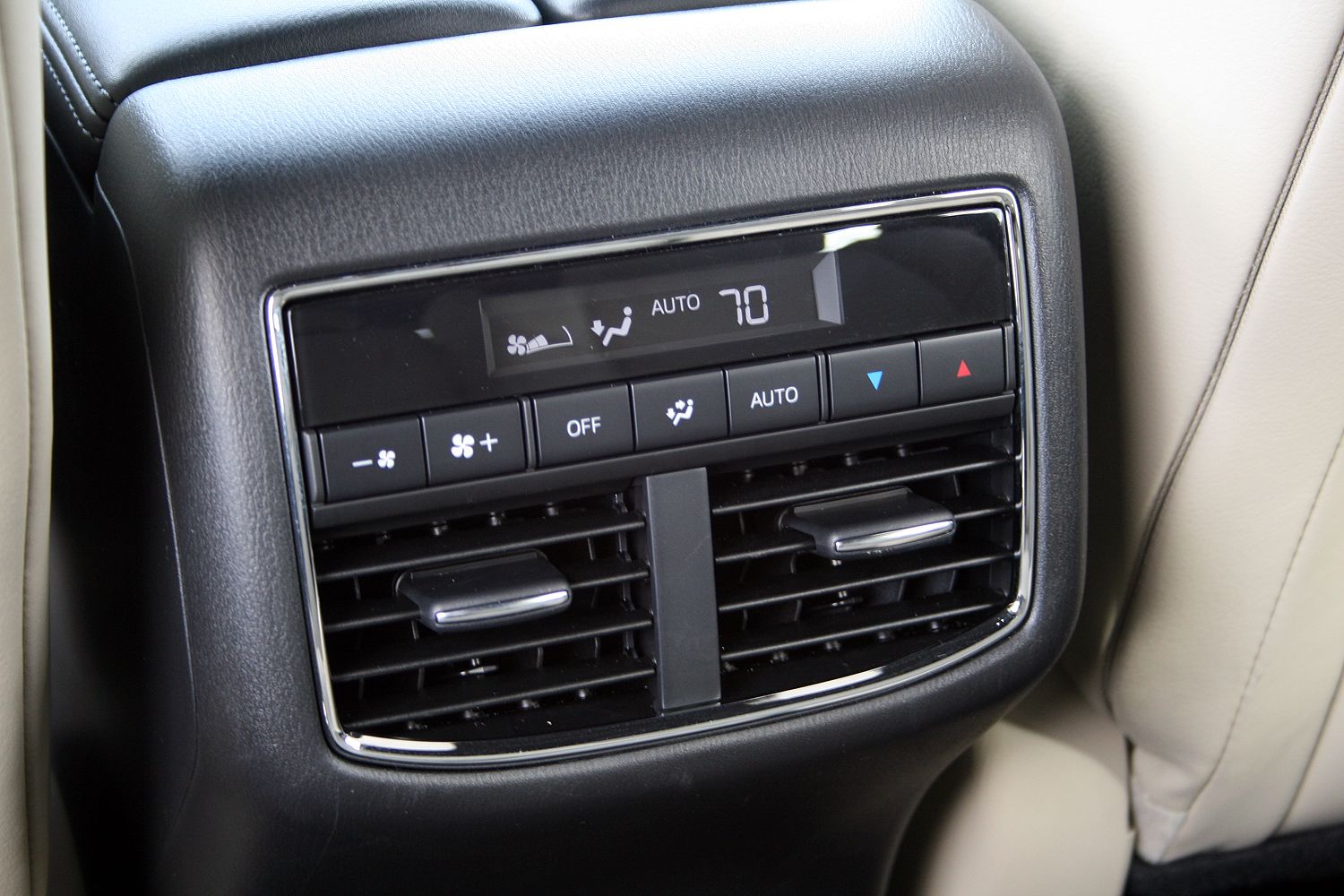The Mazda CX-9 has been around for a decade now, having debuted for the 2007 model year. It established itself as a fun-to-drive three-row crossover with a chipper attitude. A facelift in 2010 and again in 2013 kept the first generation CX-9 looking fresh, but it wasn’t until the 2016 model year that things got serious. Mazda’s previous split from Ford meant it could develop its own platform and engines for the crossover, along with reinventing its design language. The result is a stunningly gorgeous vehicle that looks far more upscale than its price tag demands.
Things have remained unchanged for the 2017 model year and its design remains fresh. I was understandably excited to hear Mazda was sending me a 2017 CX-9 to sample for a week. The idea of a beautiful three-row crossover with AWD and an efficient yet turbocharged engine was an enticing one.
The concept of building a fun-to-drive crossover isn’t new, but it’s harder than you might imagine. The taller ground clearance makes for a top-heavy ride and the extra length and seats brings added weight that eats horsepower. Mazda as worked to quell these issues in the CX-9 by removing weight and developing a suspension that could handle well. In the AWD model, 287 pounds has been removed from the first-generation model and the suspension was retuned. The CX-9 uses MacPherson struts up front with a multi-link coil spring setup.
Powering the CX-9 is Mazda’s new 2.5-liter SkyActiv four-cylinder turbo. It might make 23 horsepower less that the previous V-6, but it generates an impressive 40 pound-feet more torque. Best of all, it’s far more efficient. So how does all this work in practice? Keep reading to find out.
Continue reading for the full driven review.
2017 Mazda CX-9 – Driven
- Make: Array
- Model: 2017 Mazda CX-9 – Driven
- Engine/Motor: inline-4
- Horsepower: 250 @ 5000
- Torque: 310 @ 2000
- Transmission: Six-speed Automatic
- [do not use] Vehicle Model: Array
Video Review
Exterior
The second-generation Mazda CX-9 is a handsome machine. It’s reserved yet bold, upscale yet affordable, and modern yet timeless. The CX-9 will likely age rather gracefully. Starting up front, the CX-9’s grille and fascia are fully drenched in Mazda’s KODO design language. Many of the lines and angles can be found throughout Mazda’s more current lineup, including the CX-5 and CX-3. Chrome accents help define the stubble creases along the bumper and grille. The projector beam headlights carry the design flow from the forward-protruding grille.
More chrome work dresses the lower rocker panels, the side window surrounds, and the roof rack rails. The rear bumper and twin exhaust pipes also boast chrome, as does the tailgate between the 3D lenses of the taillights. The classy looks are juxtaposed by the black plastic cladding along the bottom of the CX-9, and following the rounded wheel well arches. This gives the Mazda a more rugged look, helping it stay true to its SUV heritage.
My CX-9 tester rolls on 20-inch, 10-spoke wheels wrapped in all-season rubber from Falken. The satin chrome finish on the wheels helps give the CX-9 a more vivid appearance without coming across as too flashy. Remember, this crossover is all about reserved boldness.
The Competition
The Mazda CX-9 has some stiff competition in the three-row crossover market. Two of its biggest rivals are the Honda Pilot and the Toyota Highlander. The Pilot is new for 2016 and wears attractive bodywork. It’s a bit less attractive in my eyes than the CX-9, but it’s hardly ugly by any means. The Honda’s shape is more conventional thanks to its long, non-sloping roof. Bits of chrome help give the Pilot a touch of class.
The Toyota Highlander is a more funky, family friendly ride. Its mid-cycle refresh for the 2017 model year brings a revised front end with a huge grille. Like the Pilot and CX-9, the Highlander has chrome bits for extra class, yet wears black plastic around its wheel wells for that added touch of ruggedness. Still, the Highlander’s reworked design certainly aims for the sporty side of things.
|
Honda Pilot |
Toyota Highlander |
Mazda CX-9 |
|
|
Wheelbase (Inches) |
111.0 |
109.8 |
115.3 |
|
Length (Inches) |
194.5 |
192.5 |
199.4 |
|
Height (Inches) |
69.8 |
68.1 |
67.6 |
|
Width (Inches) |
78.6 |
75.8 |
77.2 |
|
Approach/Departure Angles |
18°/19.7° |
18°/23.1° |
16°/21.1° |
Interior
Mazda’s new design theme is evident inside the CX-9 as well. Gone is the shapeless dashboard constructed from chunky plastic. In its place is a swooping yet angular instrument panel that breathes character and life into this crossover. It might be unconventional, but the idea is executed rather well and functionality suffers minimally.
In the driver’s seat, a three-spoke, leather-wrapped steering wheel greats you. The gauge cluster utilizes three pods with two analog gauges and one digital screen for vehicle information. The infotainment system resides atop the dash like an iPad. The touchscreen design is reminiscent of BMW’s design. It does not retract. Controlling it can be done with a finger or the cluster of buttons and knobs located on the center console. The redundancy is appreciated. Storage spots are all about, with deep door pockets, a large center console, and an alcove perfect for storing cell phones just ahead of the shifter.
The CX-9’s interior does compromise on functionality, however. Though as I mentioned, the impediment is minimal and most will learn to adjust. The center console is large and tall, making the front occupants feel as if they’re riding in a low-slung coupe. The storage alcove just ahead of the shifter is the only spot for “stuff,” but the twin cup holders do a good job at catching odds and ends. It’s not a bad design by any means, it’s just different, and different might take some getting used to.
The rest of the interior is roomy and well laid out. The second row bench offers plenty of legroom and headroom, especially when slid rearward on its tracks. The seatbacks reline and a padded center armrest provides spots for two drinks. Rear HVAC controls allow older rear passengers to adjust the temperature and fan speed to their liking. Mom and Dad can control the rear system from up front for younger passengers.
When it comes time to haul more the five, the rear two seats can be utilized. They fold up with a little effort and securely lock into place. With the 60/40-split second-row bench slid forward, the third row has decent legroom, though you’ll want to keep NBA players reserved for the first two rows. Twins and smaller kids will have no complaints sitting back here. Cup holders make third-row life easier, too.
When it comes time to haul stuff rather than people, the CX-9’s rear seats fold flat with ease and offer 71.2 cubic-feet of cargo room behind the first row. With the third row folded into place, there is still 14.4 cubic-feet of room for a weekend’s worth of groceries.
Overall, the 2017 CX-9’s interior is a good mix between form and function. Up front, form takes the lead, with a large center console eating interior space and storage room. In the rear, functionality is king thanks to roomy spots for five passengers. Mazda has done its homework here, and the results are impressive. If you’d rather have beauty over outright interior volume, the CX-9 is a great candidate.
The Competition
The Pilot’s interior is typical Honda, with well-fitting panels, rich-looking materials, and a generally well-conceived layout. Folks are complaining about the radio’s lack of a volume knob. The touch slider isn’t the most intuitive piece of technology. Everything else is done right, including the digital speedometer, driver information screen, easy-to-use HVAC controls, and copious amounts of storage space. The Pilot is pretty much opposite the CX-9 in this regard. The Pilot’s center console is highly functional.
As for the rear, the Pilot offers the option of second-row captain’s chairs, making comfort a priory. A center console gives even more storage space, though it eliminates the easy walk-through access to the third row. Speaking of that, the two seats in the third row offer plenty of space for smaller adults and kids.
Toyota takes the function over form route as well, though the Highlander’s interior is far from ugly. Function does reign supreme though, thanks to the integrated shelf below the dashboard, the massive center console, and the generously sized front cup holders. Toyota’s gauge cluster is a bit behind the times in my opinion, however.
Rear passengers also get plenty of room, though the two third-row seats are more cramped than the Pilot’s. The Highlander comes standard with a second-row bench seat, but captain’s chairs are available. A folding center tray adds two cup holders and a perfect spot for fast food bags.
|
Honda Pilot |
Toyota Highlander |
Mazda CX-9 |
|||
|
Honda Pilot |
Toyota Highlander |
Mazda CX-9 |
40.1/40.2/38.9 |
40.7/39.9/35.9 |
39.3/38.5/35.4 |
|
Headroom (front/middle/rear) (Inches) |
40.9/38.4/31.9 |
44.2/38.4/27.7 |
41.0/39.4/29.7 |
||
|
Legroom (front/middle/rear) (Inches) |
62.0/62.0/57.6 |
59.3/59.6/55.0 |
57.9/58.1/53.1 |
||
|
Shoulder Room (front/middle/rear) (Inches) |
59.1/57.3/44.6 |
57.2/57.1/45.6 |
56.7/57.4/40.1 |
||
|
Hiproom (front/middle/rear) (Inches) |
16.5 |
13.8 |
21.5 |
||
|
Cargo Volume (behind 3rd-row) (Cu ft) |
46.8 |
42.3 |
50.5 |
||
|
Cargo Volume (behind 2nd-row) (Cu ft) |
83.9 |
83.7 |
84.9 |
Drivetrain
Mazda started with a clean sheet of paper when it came time to design the second-generation CX-9’s engine. The result is the Skyactiv-G 2.5-liter turbocharged four-cylinder. This all-aluminum engine features direct fuel injection, dual overhead cams, the Miller combustion cycle, and an innovative turbocharging system. The result is an engine that finds the happy sweet spot between power and efficiency.
Contributing to that is the turbocharger and exhaust configuration. The system is set up in a 4-3-1 configuration so that cylinders one and four send exhaust pulses to the turbo simultaneously while cylinders two and three send theirs simultaneously. The middle cylinders actually share an exhaust port, which is cast directly into the cylinder head. This set up delivers exhaust pulses to the turbo every 180-degrees of the camshaft’s rotation, meaning the turbo is constantly getting fed, which reduces lag.
What’s more, Mazda employs what it calls the Dynamic Pressure Turbo. It uses a valve to choke down the exhaust going to the turbo. Much like your thumb on a garden hose, this creates more pressurized exhaust air even at lower engine speeds. This keeps the turbo spooled and generates as much as 17.4 pounds of boost. At higher revs, the valve opens, allowing for maximum exhaust flow.
Helping save fuel is Mazda’s cooled exhaust gas recirculation system. Many turbocharged cars use excess fuel to help control temperatures inside the combustion chamber, which leads to reduced fuel efficiency. Mazda’s EGR system eliminates the need for this wasteful method by routing the recirculated exhaust gasses through an intercooler. This brings the temperature of this recycled air from 932 degrees Fahrenheit to just 212 degrees.
The end result is 250 horsepower at 5,000 rpm and an impressive 310 pound-feet of torque at only 2,000 rpm. Premium fuel is required to achieve these numbers, but Mazda allows for regular fuel should the customer choose. In that case, the engine is dialed back to 227 horsepower while torque remains the same.
Mazda also worked to ensure the 2.5-liter gave power where it was needed. That’s why it has so much torque down low. Researchers found that most crossover owners don’t exceed 4,000 rpm in regular driving, so any power above that is basically wasted.
Fuel economy is estimated by the EPA to be 21 mpg in the city, 27 mpg on the highway, and 23 mpg combined with the AWD model. The standard FWD model is estimated to get 22 mpg in the city, 28 mpg on the highway, and 25 mpg combined.
Speaking of the all-wheel drive system, the CX-9 uses Mazda’s i-ACTIV AWD system. Thought the system debuted in 2013, the i-ACTIV AWD system got a huge boost in computing power for 2016. The system now uses a total of 27 sensors to paint a picture of road conditions, which allows the computer to adjust settings and torque delivery. These sensors read the road 200 times every second, monitoring everything from wheel speed, steering angle, ambient temperatures, longitudinal grip, brake fluid pressure, and even windshield wiper speed to determine how best to operate. Even the dry conditions on a warm summer’s day, the system helps with traction by sending as much as 50 percent of power to the rear axle.
The CX-9 uses a six-speed automatic transmission with manual shifting capabilities. A Sport Mode further improved the driving experience by keeping the transmission in lower gears while keeping engine revs up.
The Competition
While the Mazda chose to use a turbocharged inline four-cylinder, both Honda and Toyota use a V-6 engine. The Pilot uses an all-aluminum 3.5-liter V-6 with direct fuel injection and Honda’s iconic i-VTEC valvetrain system that controls the variable valve timing, lift, and duration. The result is 280 horsepower and 262 pound-feet of torque. It comes mated to an eight-speed automatic transmission that powers the front wheels. AWD is optional. The spring to 60 mph takes just 6.1 seconds and the EPA rates the AWD model 18 mpg city and 26 mpg highway. Upper trim levels get an auto start/stop system that improves city mileage by one mpg.
The Toyota also uses a 3.5-liter V-6. This is Toyota’s most current V-6, which is similar to the one found in the Tacoma pickup. It features both port and direct fuel injection, variable valve timing, and can run both Otto and Atkinson combustion cycles. It makes 295 horsepower and 263 pound-feet of torque. A six-speed automatic does shifting duties while the front wheels spin. AWD is an option.
Also optional is a hybrid drivetrain that uses a detuned version of the V-6 in conjunction with a battery pack and electric motor. While both V-6 models will be hot sellers, the base model Highlander comes standard with a pokey 2.7-liter four-cylinder that makes a sad 185 horsepower and 184 pound-feet of torque. Buyers will want to avoid that engine. Honestly, it’s a mystery why Toyota even offers the engine in the Highlander.
|
Honda Pilot |
Toyota Highlander 2.7 |
Toyota Highlander V6 |
Mazda CX-9 |
|
|
Engine |
3.5-liter V-6 |
2.7-liter, four-cylinder |
3.5-liter, six-cylinder |
2.5-liter I4 Dynamic Pressure Turbo |
|
Horsepower |
280 HP @ 6,000 RPM |
185 HP @ 5,800 RPM |
295 HP @ 6,600 RPM |
250 HP @ 5,000 RPM |
|
Torque |
262 LB-FT @ 4,700 RPM |
184 LB-FT @ 4,200 RPM |
263 LB-FT @ 4,700 RPM |
310 LB-FT @ 2,000 RPM |
|
Transmission |
6-Speed Automatic |
6-speed Electronically Controlled |
||
|
automatic |
8-speed Electronically Controlled automatic |
6-Speed Automatic |
||
|
Curb Weight (2WD/AWD) (Lbs) |
4,054/4,220 |
4,165/AWD N/A |
4,370/4,535 |
4,054/4,301 |
|
Towing Capacity (Lbs) |
3,500 |
1,500 |
5,000 |
3,500 |
|
Fuel economy City/Highway/Combined |
19/27/22 |
20/24/22 |
20/27/23 |
22/28/25 |
Behind the Wheel
Mazda promised a good time behind the wheel of this three-row crossover, and it delivers – for the most part. Entering the CX-9, you immediately feel cocooned thanks to the high center console and tall windowsills. Once moving, you’ll notice the steering feels good and surprisingly communicative for this size vehicle. The throttle is responsive yet not twitchy. The brakes provide a linear response to input as they progressively bite harder on the four-wheel disc brakes the more you press the pedal.
The CX-9 feels stable and well planted, with relatively minimal body lean in corners. Power is adequate, though the engine is peppier in the bottom half of its rev range. The engine looses steam up near its 6,300-rpm redline. It’s not a big deal since peak power and torque are both available at and below 5,000 rpm. The CX-9 will scoot when pushed hard. Also impressive is the six-speed transmission’s ability to smoothly shift in manual mode. Even under full throttle, the shifts happen quickly but with very little interruption of power flow. This means there is almost no jerkiness in Interstate on-ramp pulls. The same is true for automatic mode, too. It’s probably one of the smoothest transmissions I’ve sampled. Overall responsiveness of the chassis is commendable, but no one will ever mistake it for a Miata.
When driving normally, the CX-9 offers a comfortable ride thanks to a well-tuned suspension. It handles bumps without harshness or walllowiness, landing comfortably in the middle. Outward visibility is good thanks to tall side windows and large side mirrors. Safety systems like blind spot monitoring and Lane Keep Assist further help with driver confidence.
As for negatives, I found the engine sound to be a bit on the course side, sounding somewhat unrefined at mid and upper engine speeds. The engine’s noise is probably accentuated by the otherwise church-mouse quiet interior. Road and wind noise is almost non-existent. The other point of contention I had was the lack of adjustability in the driver’s seat. Still, neither issue would cause me long-term buyer’s remorse. And even if they did, a long stare at the front three-quarter view would cure my trepidation. Man, this thing is pretty.
Safety Features
The 2017 CX-9 offers a slew of active and passive safety systems. On the active side, it has Mazda’s i-ActiveSense system that includes Radar Cruise Control, Blind Spot Monitoring, Lane Keep Assist, Lane Departure Warning, High Beam Control, Smart City Brake Support, Distance Recognition Support, Adaptive Front Lighting, and Forward Obstruction Warning.
On the passive side, the CX-9 has advanced dual front airbags, front side-impact and side curtain airbags, three-point seatbelts for every seat, and front seatbelt pretensioners for force limiters. The CX-9’s structure is also built for abuse. Its unibody structure is stiffer than before and features straight load-path frame rails integrated into the chassis for better dispersion of frontal crash forces and side-impact door beams.
Electronic safety systems include ABS with electronic brake force distribution and brake assist, dynamic stability control, traction control, trailer sway control, and roll stability control.
However, as of this writing neither the IIHS nor the NHTSA have tested the 2016 or 2017 CX-9, so we can’t comment on its crash test ratings.
The Competition
The Pilot has Honda’s latest gaggle of active safety systems, including Adaptive cruise control, lane departure warning, forward collision warning, automatic braking, lane keep assist, and blind spot monitoring with rear cross-traffic alert. The Insurance Institute for Highway Safety says the Pilot earns its highest honor, the Top Safety Pick + award, with “Good” ratings in every category except for headlights (which is a new category for 2017) and ease-of-use for the rear LATCH system. Both of those were one step down at “Acceptable.” Buyers should note that not every Pilot comes equipped with all these active safety features. Many are optional or reserved for upper trim levels.
The Toyota also scores the IIHS’ Top Safety Pick + award, scoring “Good” in every category, an “Advanced” in front crash prevention, but a “Marginal” in ease-of-use for the LATCH system. The high ratings are thanks to the Highlander’s optional Advanced Technology Package, which includes adaptive cruise control, forward collision alert, automatic braking, and blind spot monitoring with rear cross-traffic alert.
These safety ratings won’t be overlooked by buyers in today’s market looking for a vehicle that offers safety on top of style and functionality. The Mazda’s lack of safety ratings might be a bit concerning for customers in the highly competitive segment.
Pricing
The 2017 Mazda CX-9 is offered in four trim levels: Sport, Touring, Grand Touring, and Signature. The Sport trim carries a starting price of $31,520. Option for AWD adds $1,800 to the price. The range-topping Signature trim, with all the option boxes checked costs $46,810. My tester has the Grand Touring trim with only two options: AWD and the Interior lighting kit. Ticking the AWD box adds $1,800 while the interior accent lighting costs $350. All told, my tester stickered at $43,520.
|
Mazda CX-9 Sport |
$31,520 |
|
Mazda CX-9 Touring |
$35,970 |
|
Mazda CX-9 Grand Touring |
$40,170 |
|
Mazda CX-9 Signature |
$44,015 |
The Competition
The 2017 Honda Pilot carries a starting price of $30,595 for the base LX model. A total of five trim levels are available, with the Elite topping the range. It comes standard with most equipment, including AWD. Its starting price is $47,070 before options.
The 2017 Toyota Highlander has a starting price of $30,630, but that’s for the base LE trim with the standard 2.7-liter four-cylinder. While the V-6 is optional in that trim, the LE Plus begins adding features that most people consider as necessities. It starts at $35,060. The range-topping gasoline model is the Limited, with a starting price of $41,680. Opting for the Hybrid LE trim begins pricing at $36,270. If money is no object, then the Hybrid Limited Platinum is what you’ll want. It has a starting price of $47,880 before options.
Other Competitors
2017 GMC Acadia
The GMC Acadia is all-new for the 2017 model year. It takes a big departure from its previous generation in that it rides on different platform, uses different engines, and offers more styling in a physically smaller yet still roomy package. The Acadia can also be had in GMC’s highly luxurious Denali trim, which brings a slew of high-end upgrades and features.
The Acadia comes standard with a 2.5-liter four-cylinder making 194 horsepower and 190 pound-feet of torque. Those wanting more muscle should jump to the 3.6-liter V-6 with 310 horsepower and 271 pound-feet of toque. Both are mated to a six-speed automatic transmission. FWD comes standard and AWD is optional.
Pricing for the Acadia starts at $29,995, but can go for nearly $50,000 with all the options added to the Denali trim.
Read more about the 2017 GMC Acadia here.
2017 Ford Explorer
The Explorer is perhaps one of the most iconic SUV on sale today. The first generation Explorer helped ignite the SUV case in the early 1990s, the results of which we still experience today. The modern take on this familiar SUV brings three rows in a roundish yet attractive package with a host of available drivetrain options.
The standard mill is Ford’s familiar 3.5-liter V-6 with 290 horses and 255 pound-feet of torque. Optionally, the 2.3-liter EcoBoost four-cylinder offers 280 horsepower and 310 pound-feet of torque. For those who want big power, the 3.5-liter EcoBoost is available in the Sport and Platinum trims and uses twin turbochargers to generate an impressive 365 horsepower and 350 pound-feet of torque. FWD comes standard on lower trim models with AWD as an option. AWD comes standard the 3.5-liter EcoBoost V-6.
Pricing for the 2017 Ford Explorer ranges from $31,660 to upwards of $50,000 for a loaded Platinum model.
Find out more about the 2017 Ford Explorer here.
Conclusion
The 2017 Mazda CX-9 is an impressive machine. Not only does it look gorgeous, but its efficient yet power engine, smooth-shifting transmission, grippy AWD system, respectable handling, and beautiful yet functional cabin make it hard to pass up when shopping for a three-row crossover. Mazda has obviously done its homework here.
The CX-9 should make for great family-hauler thanks to its room second row and handy third row seats. Comfort levels are high back here, so the kiddos should be more than happy to ride. Best of all, Mom and Dad will be happy to cruise the after school pickup line thanks to the well-shaped exterior that looks far more upscale than its price tag would suggest.

